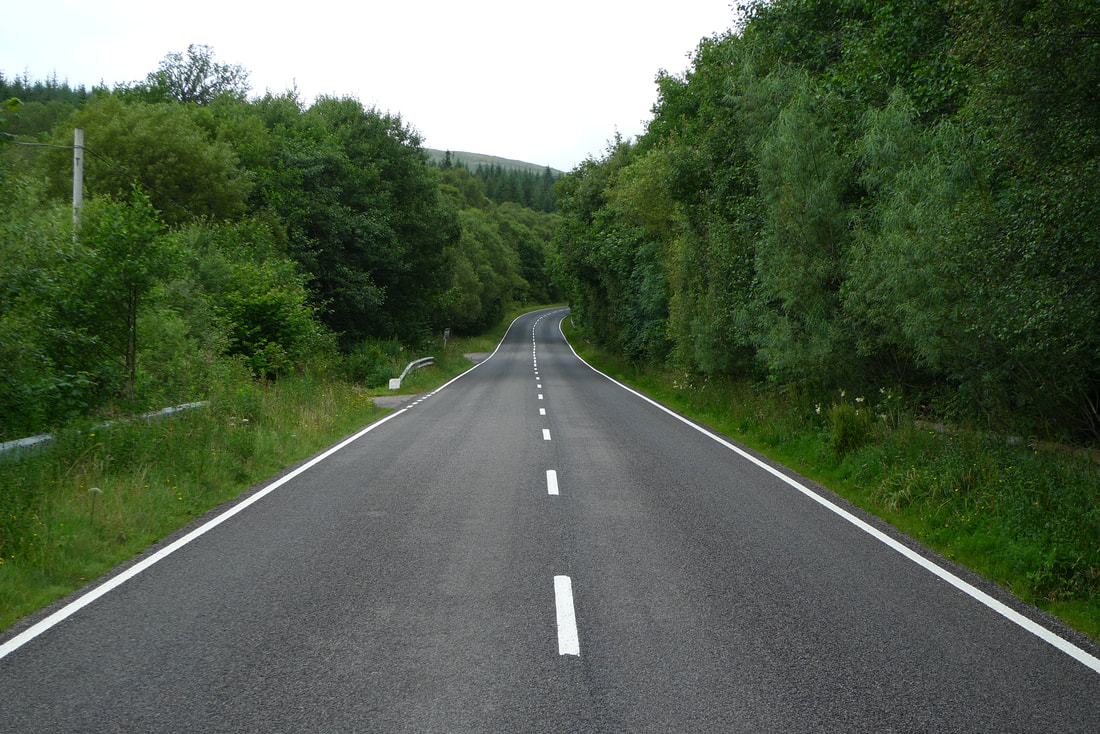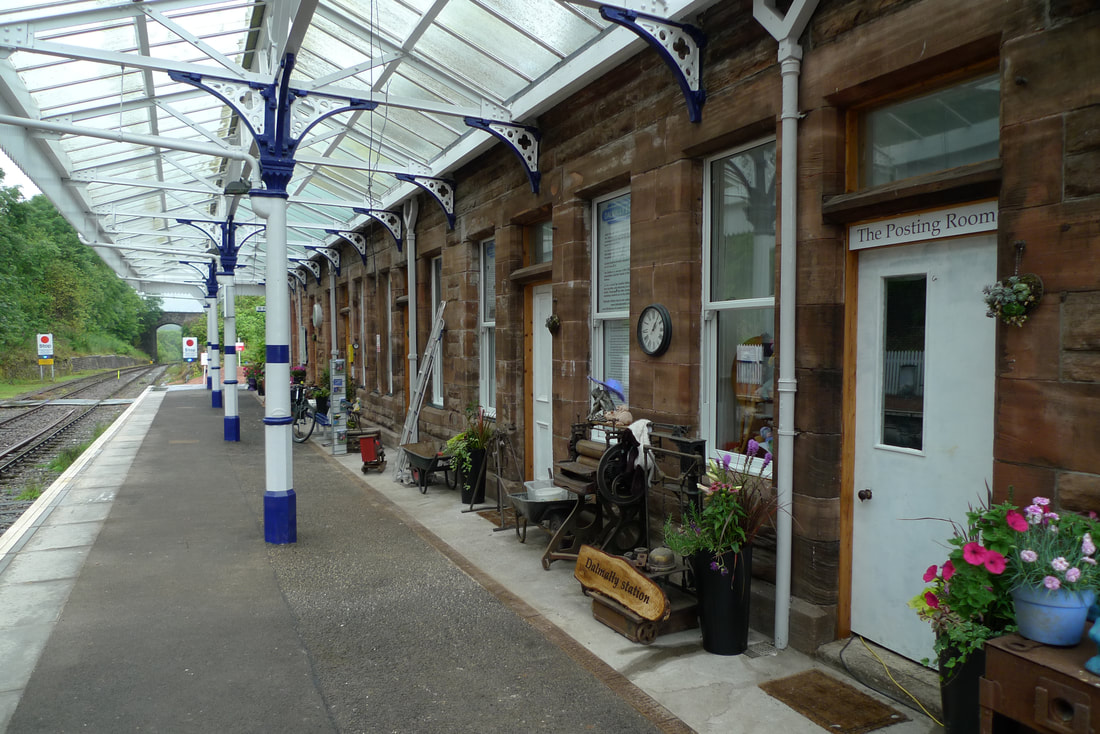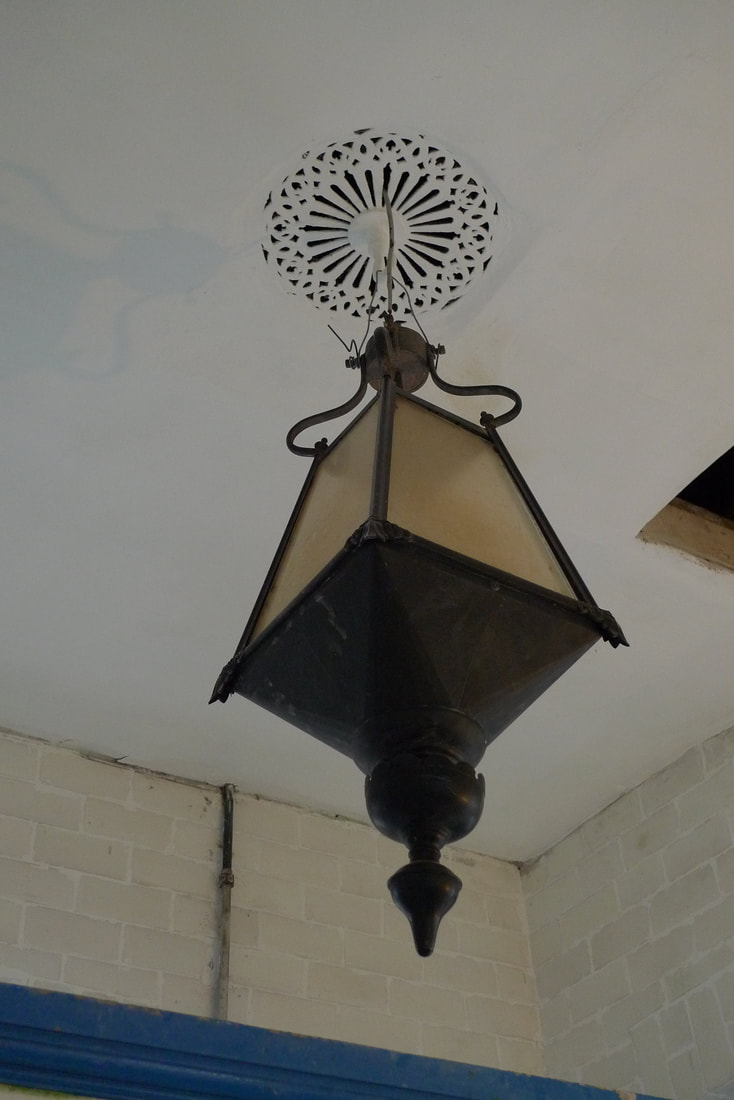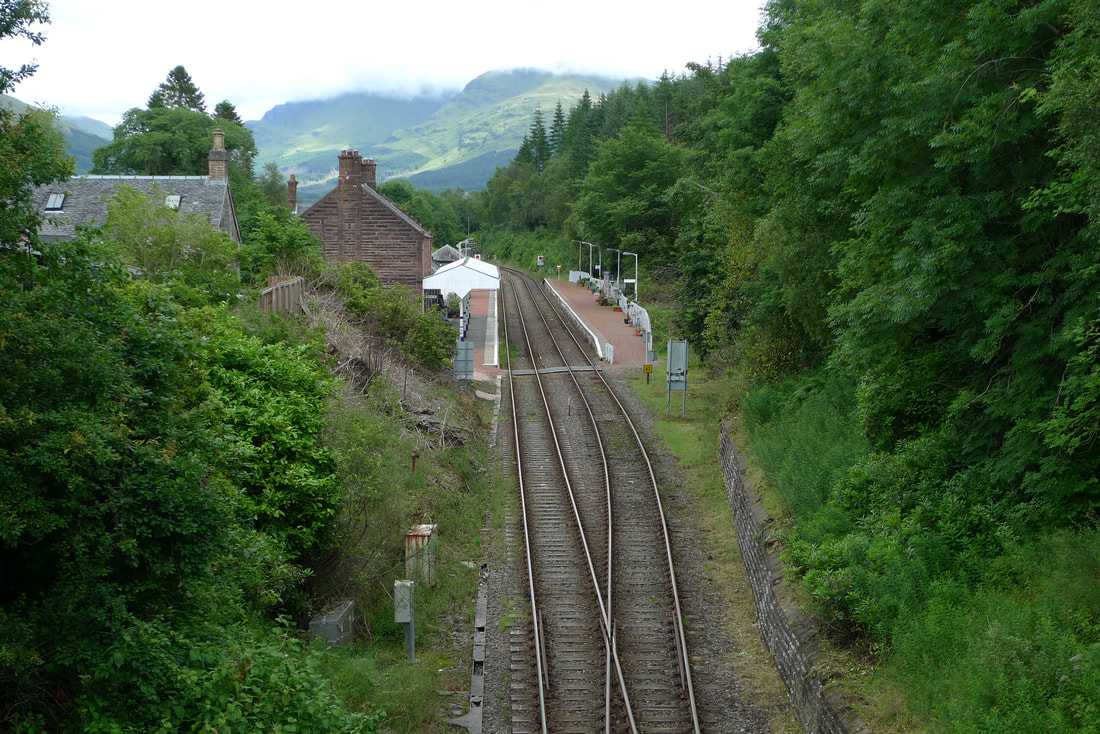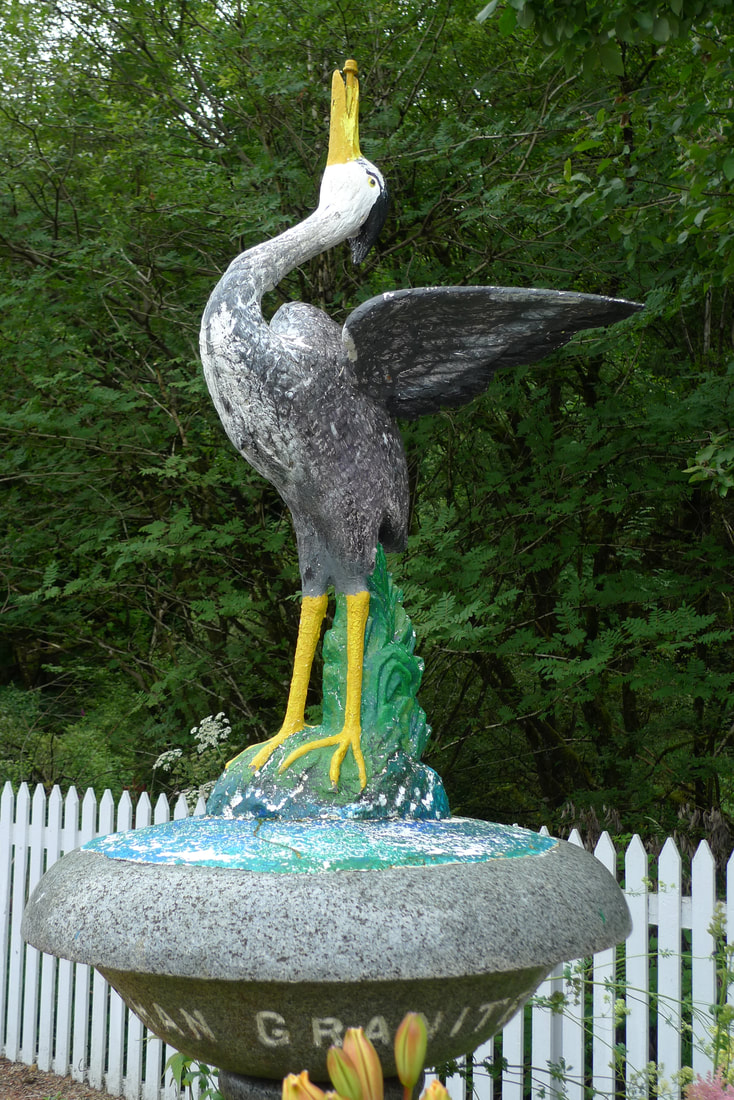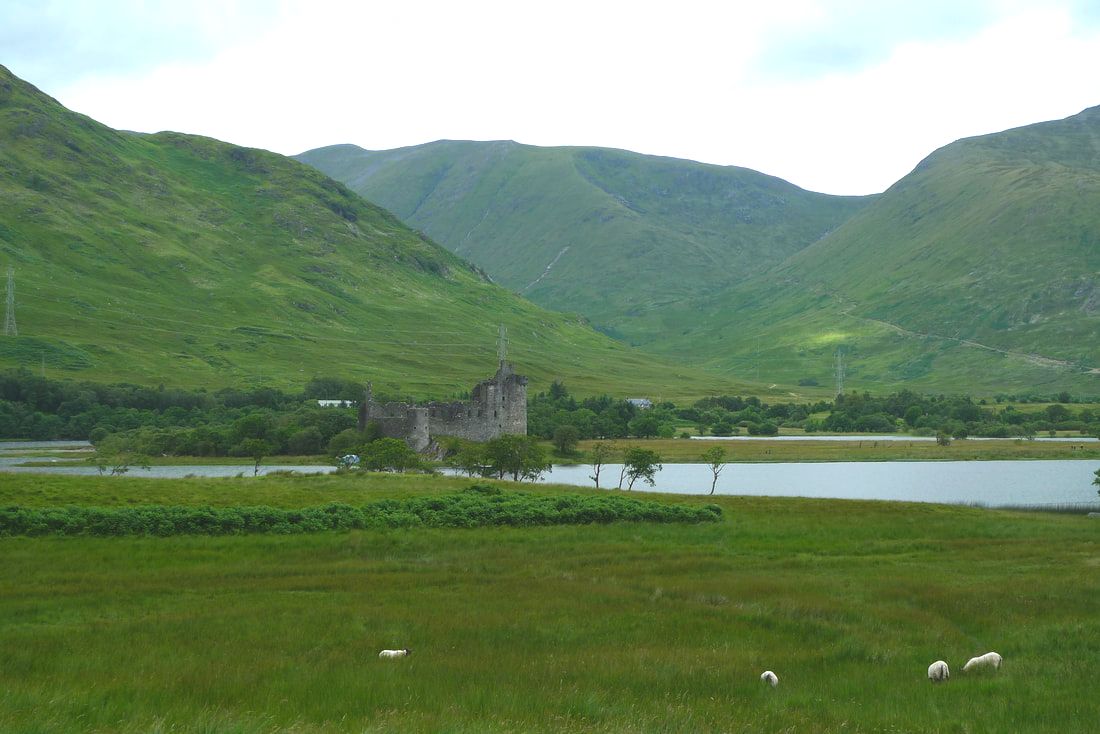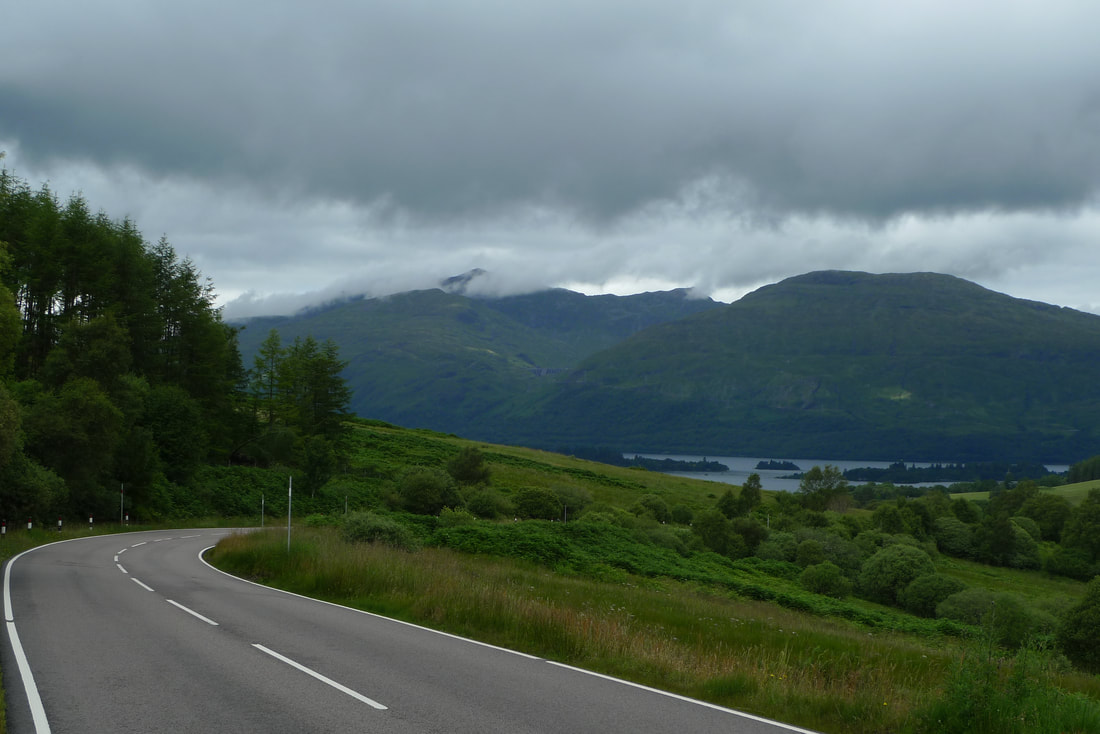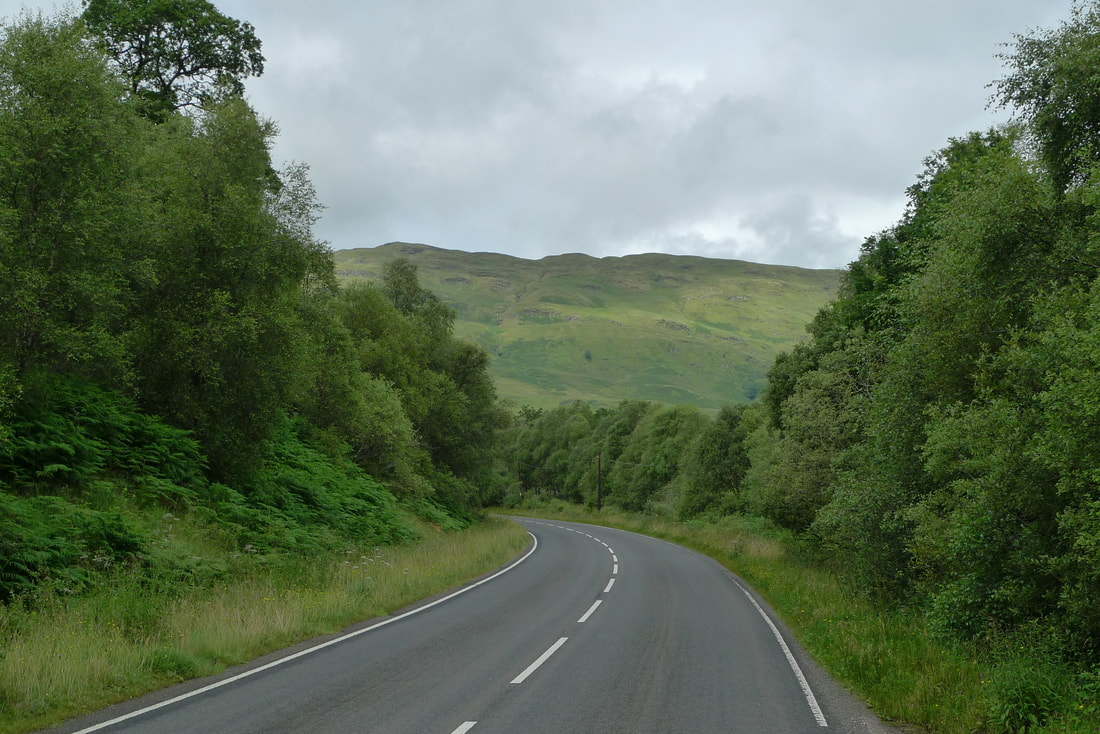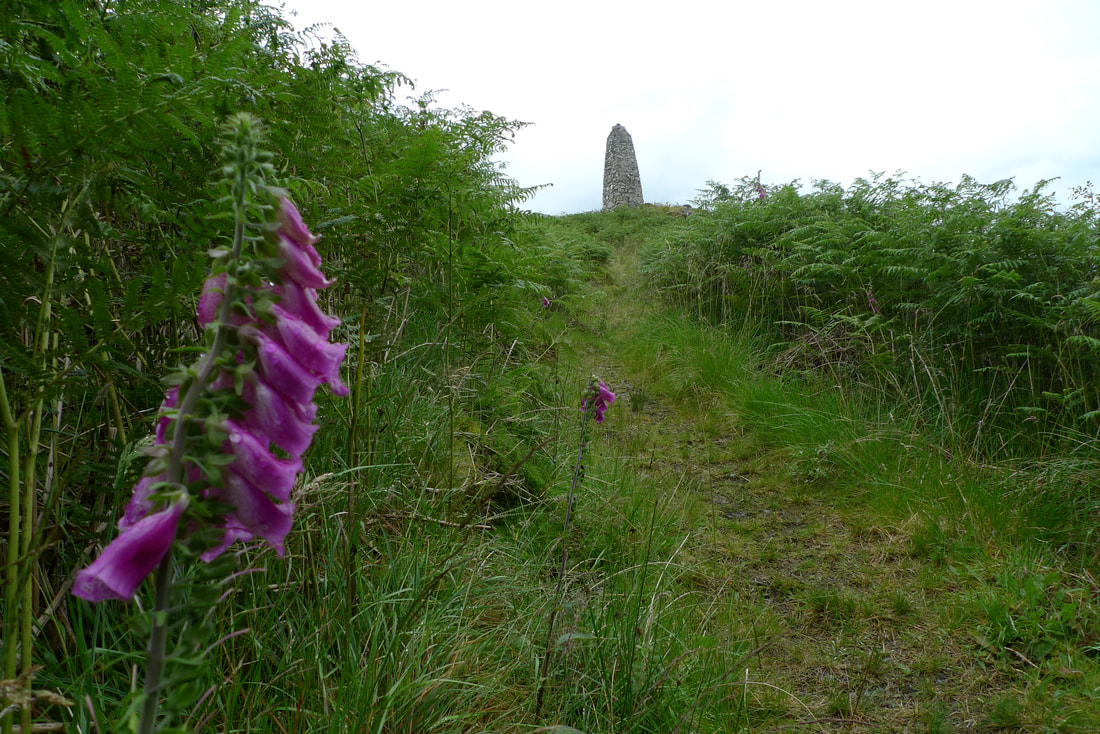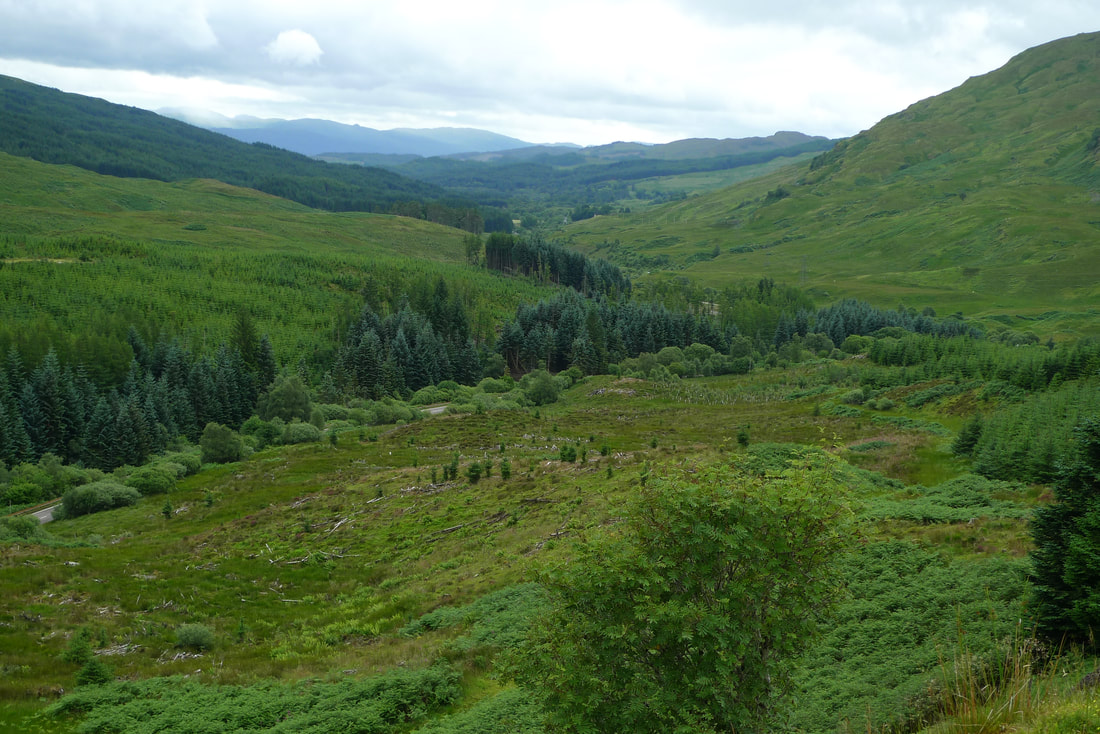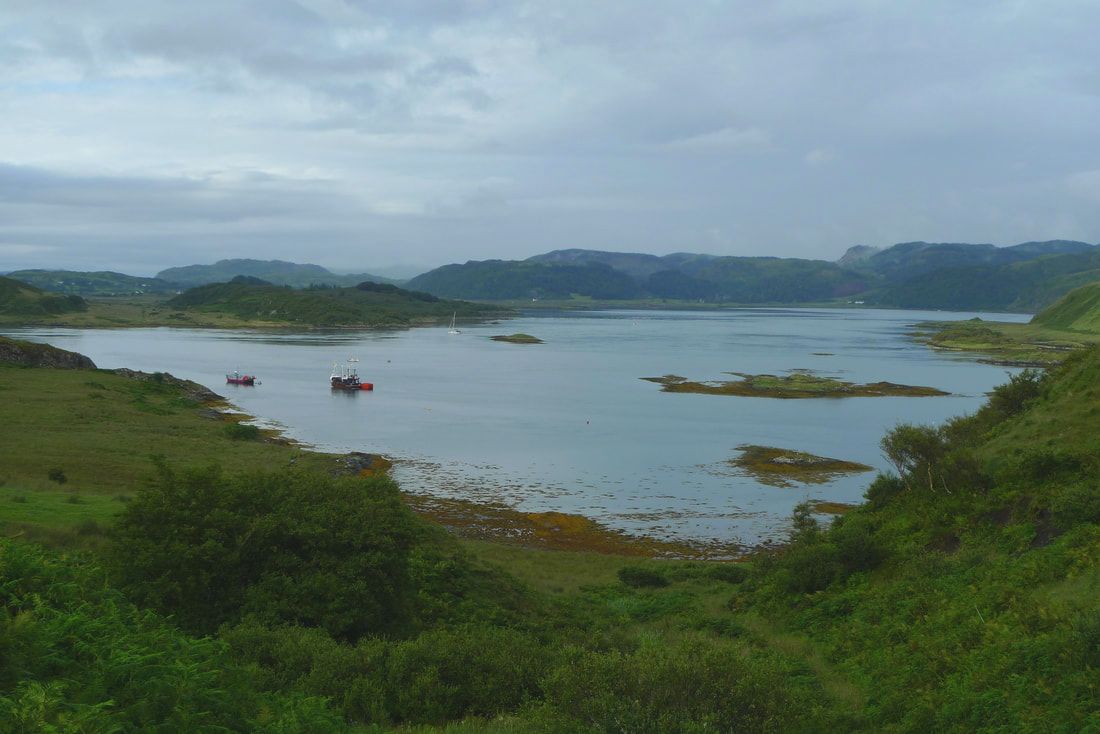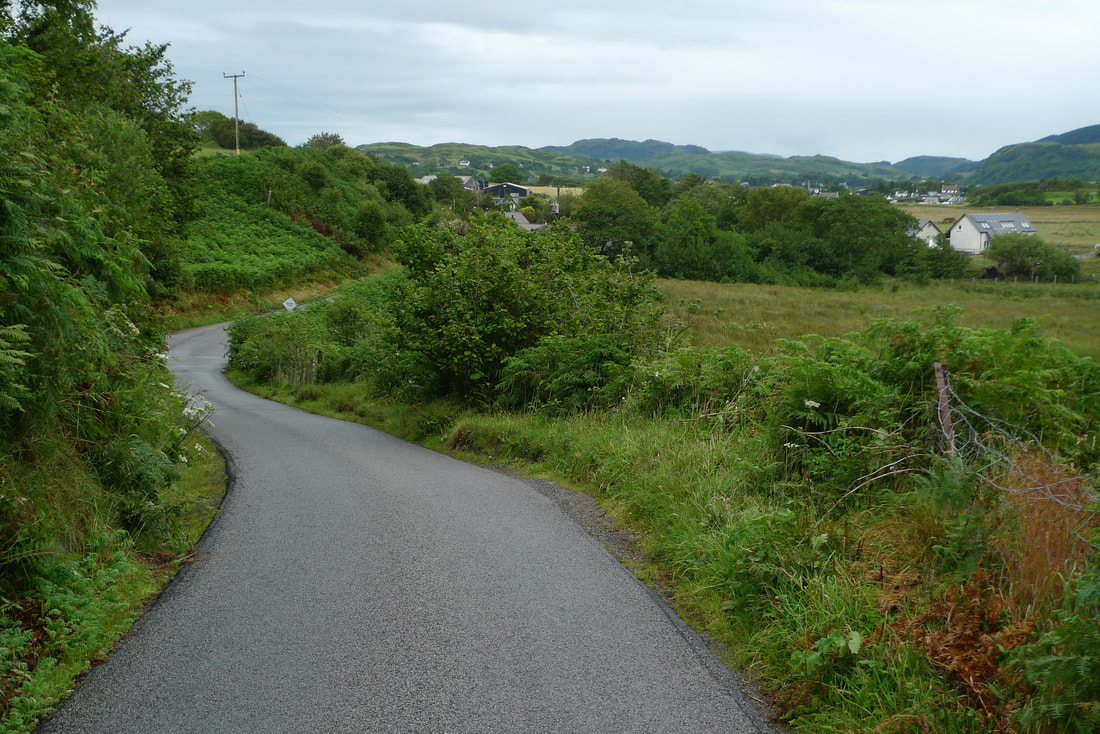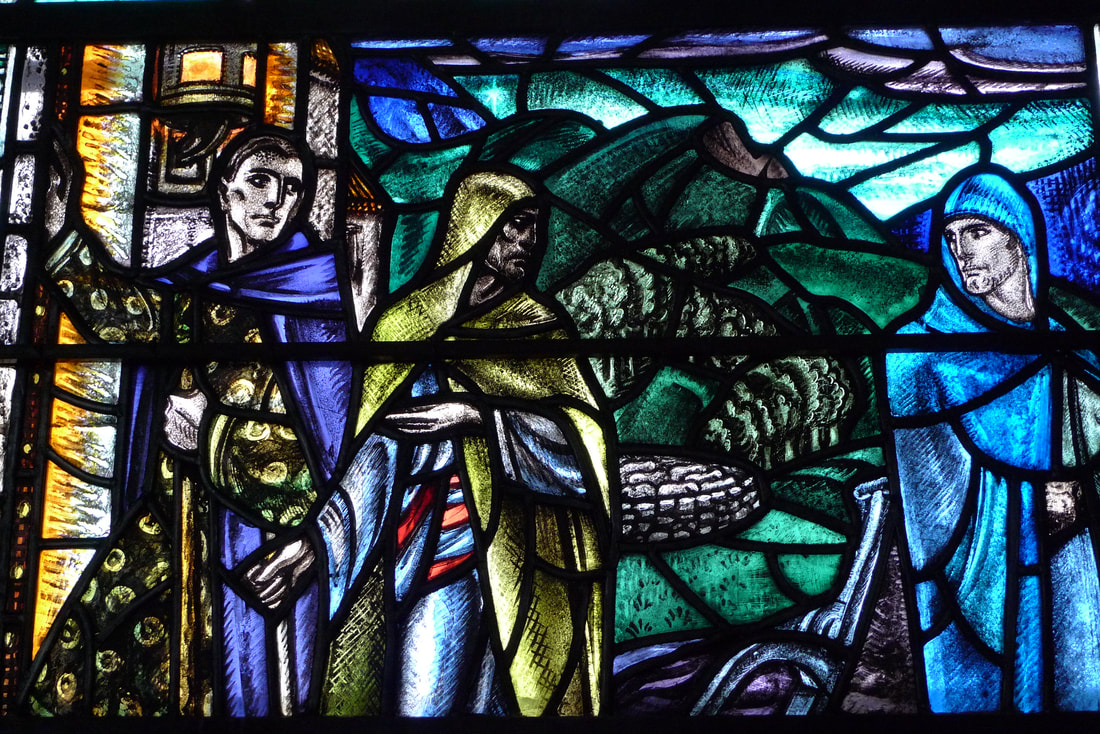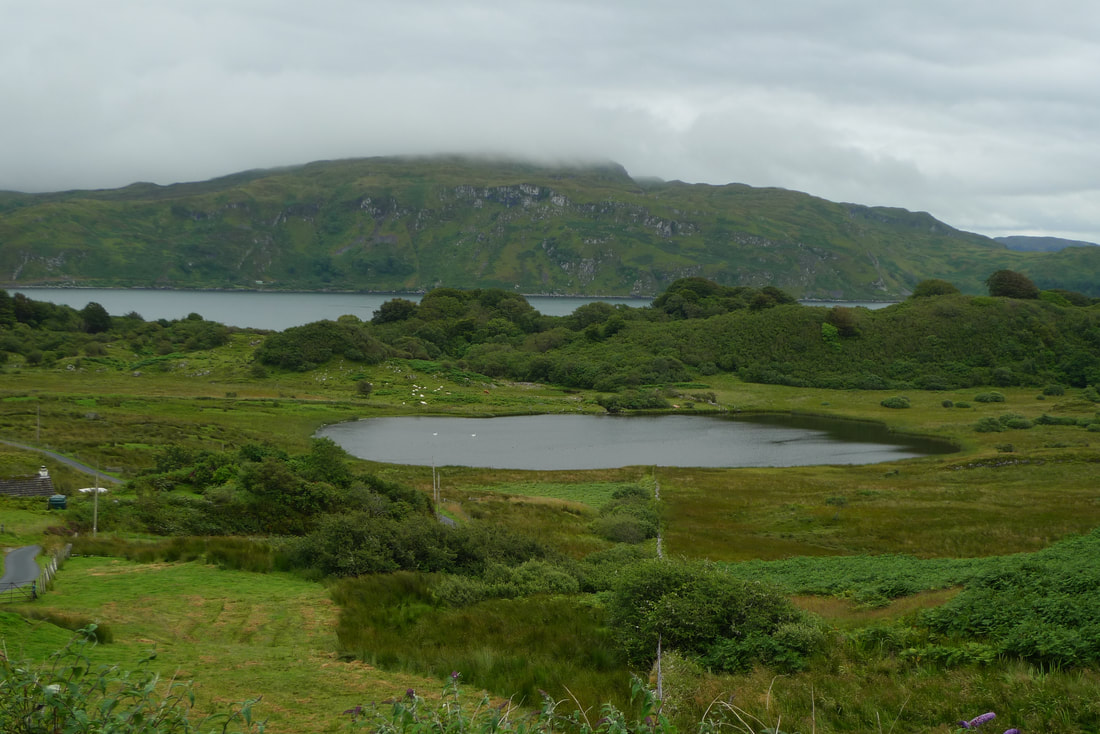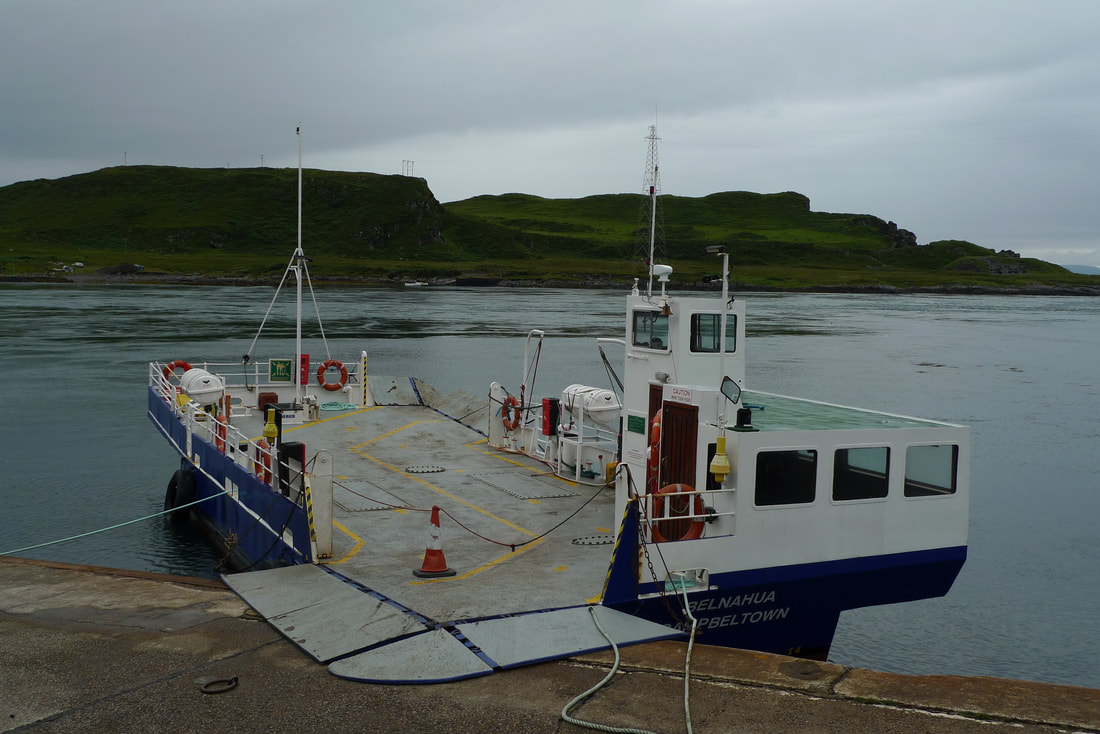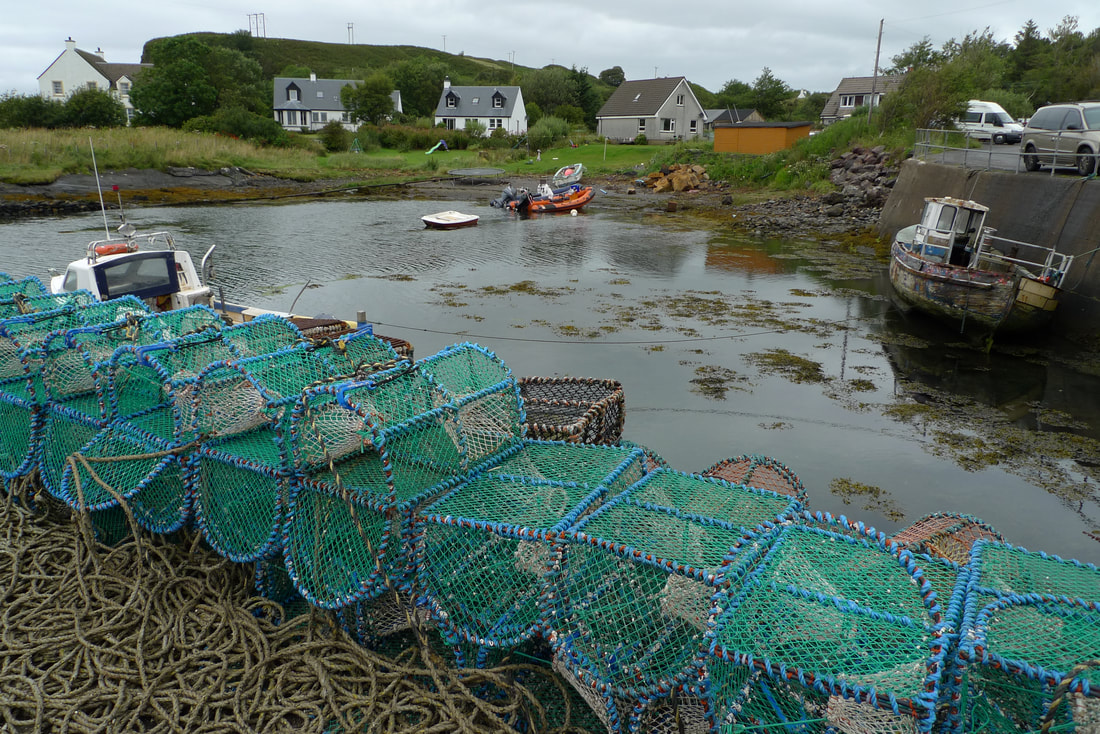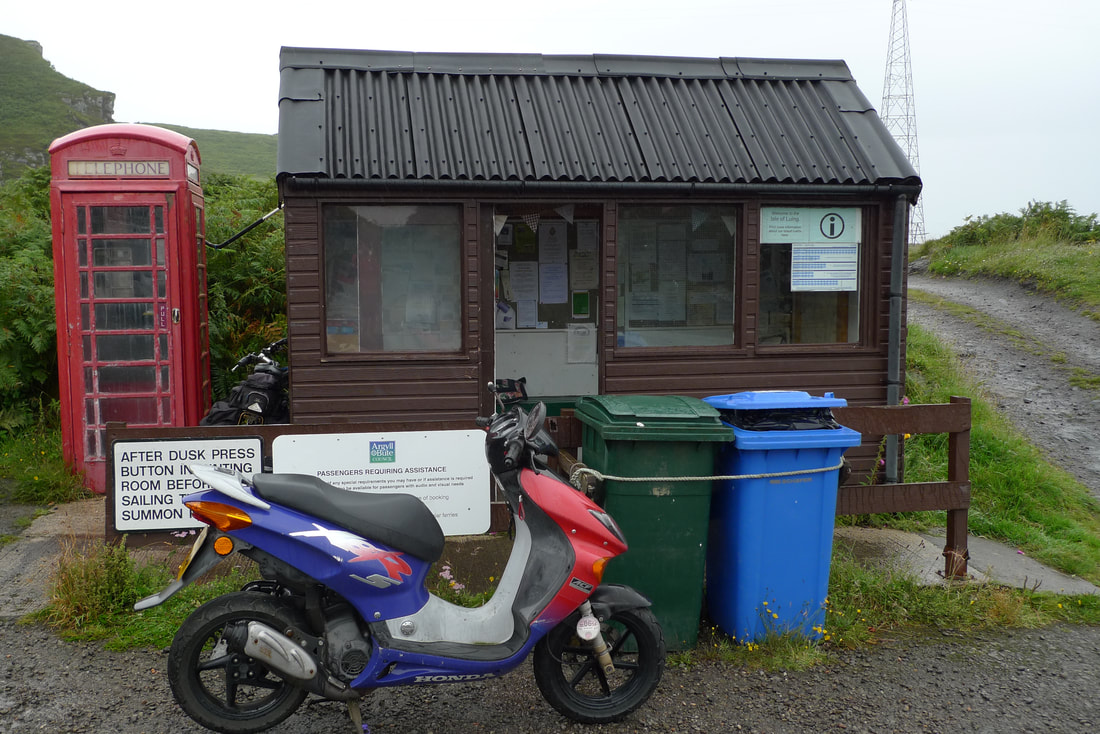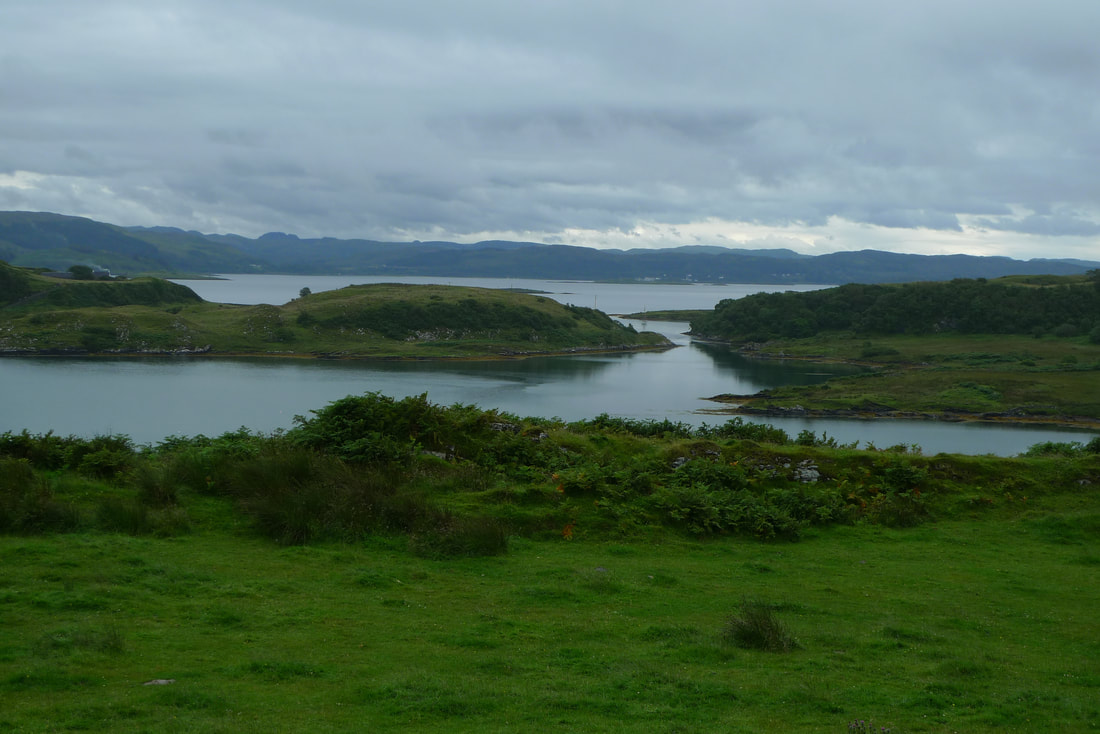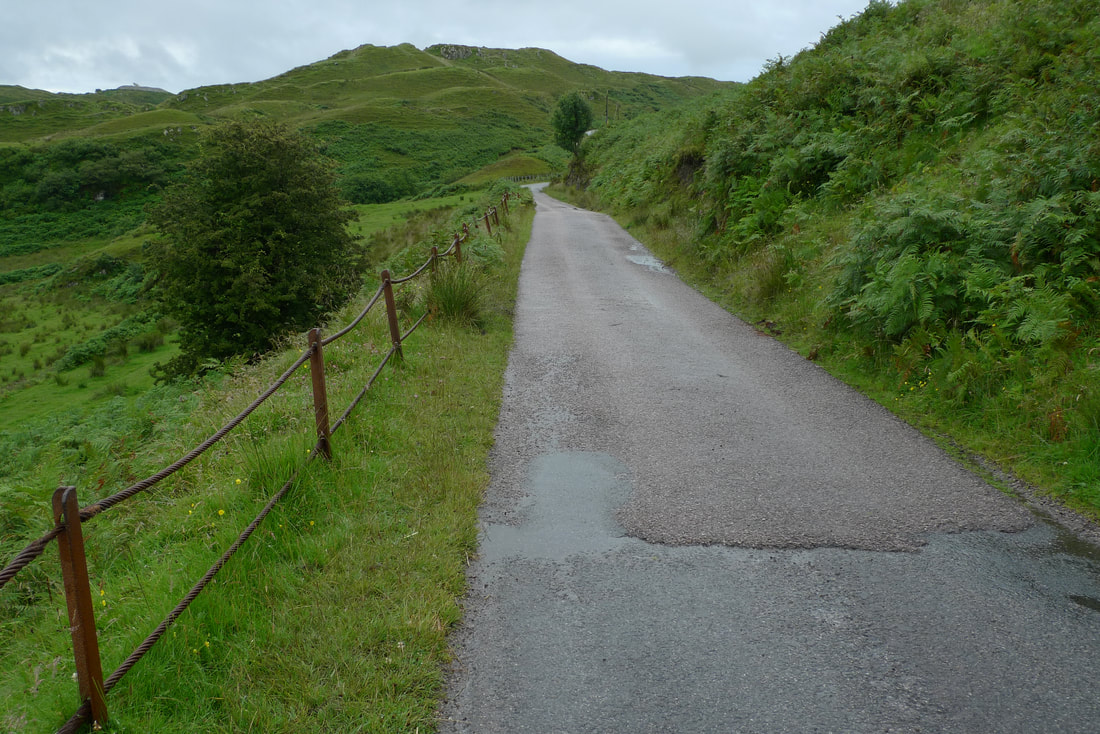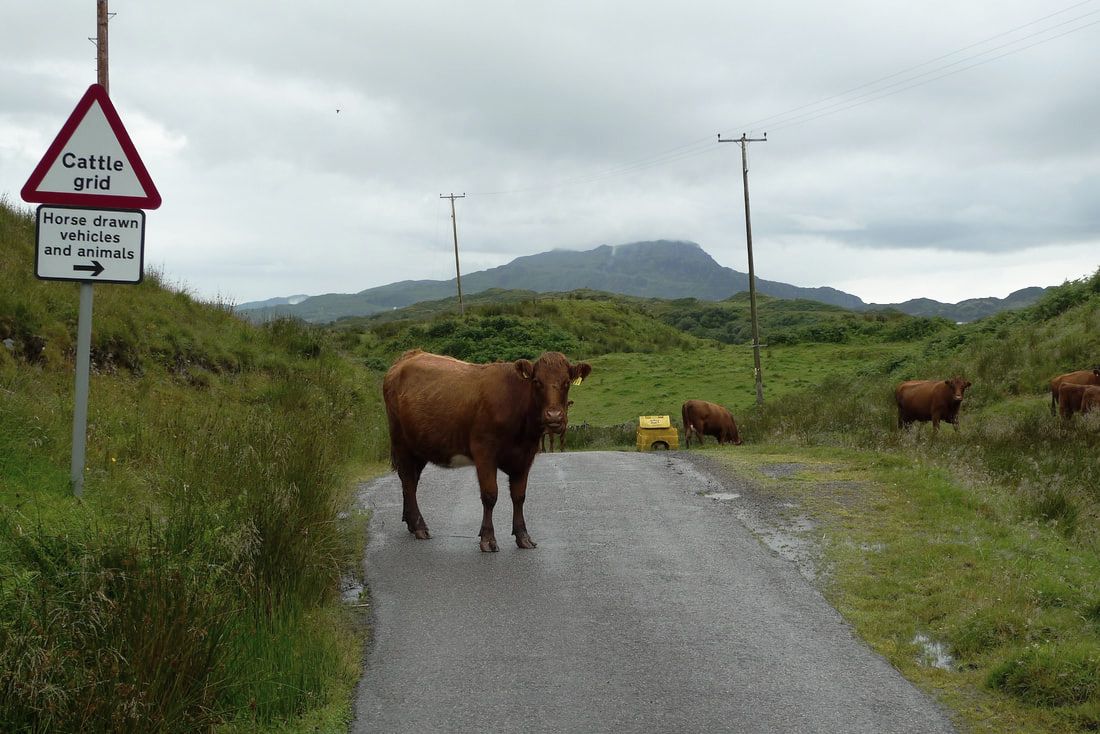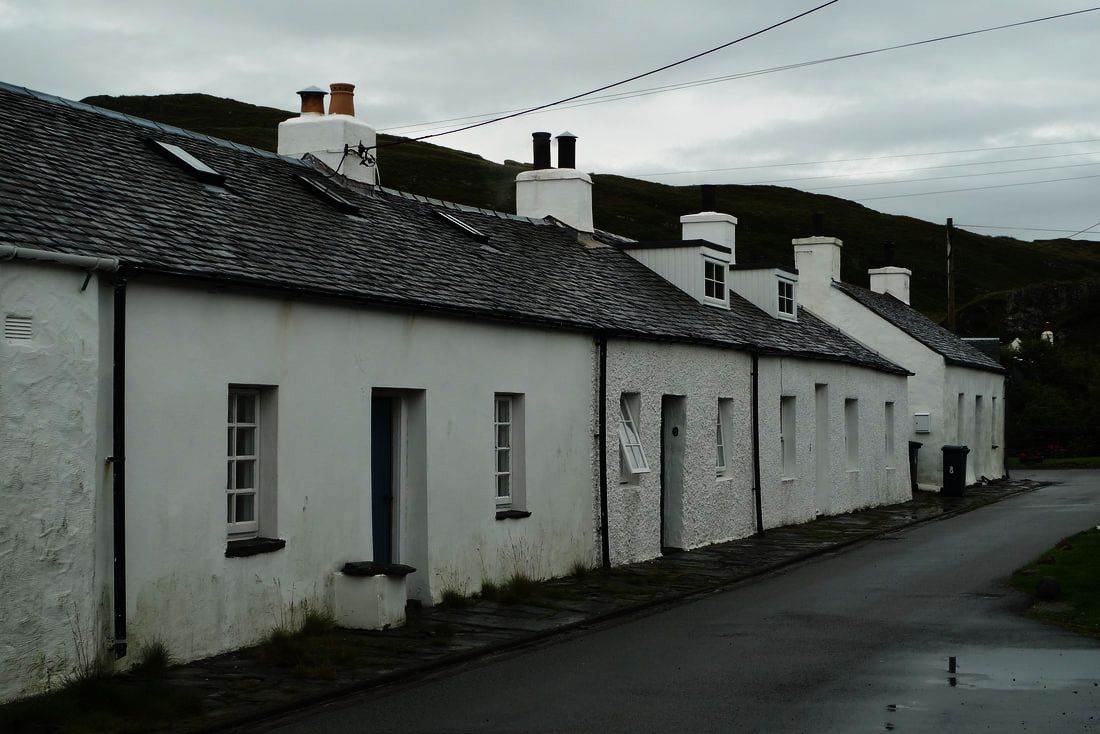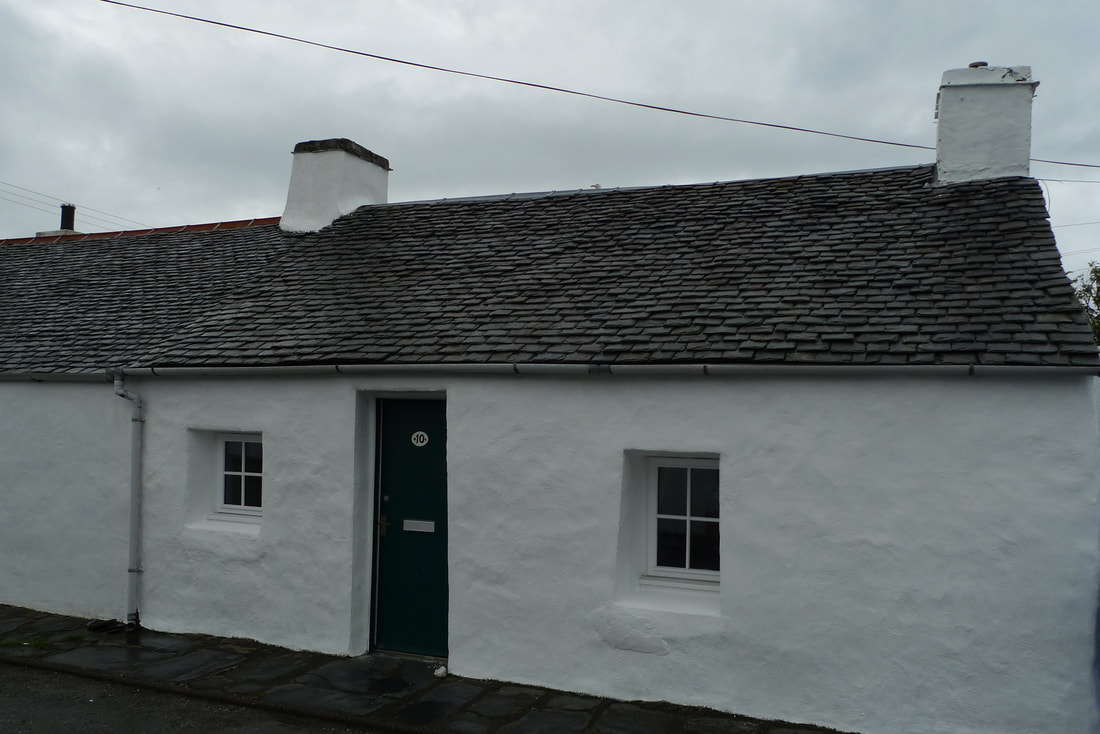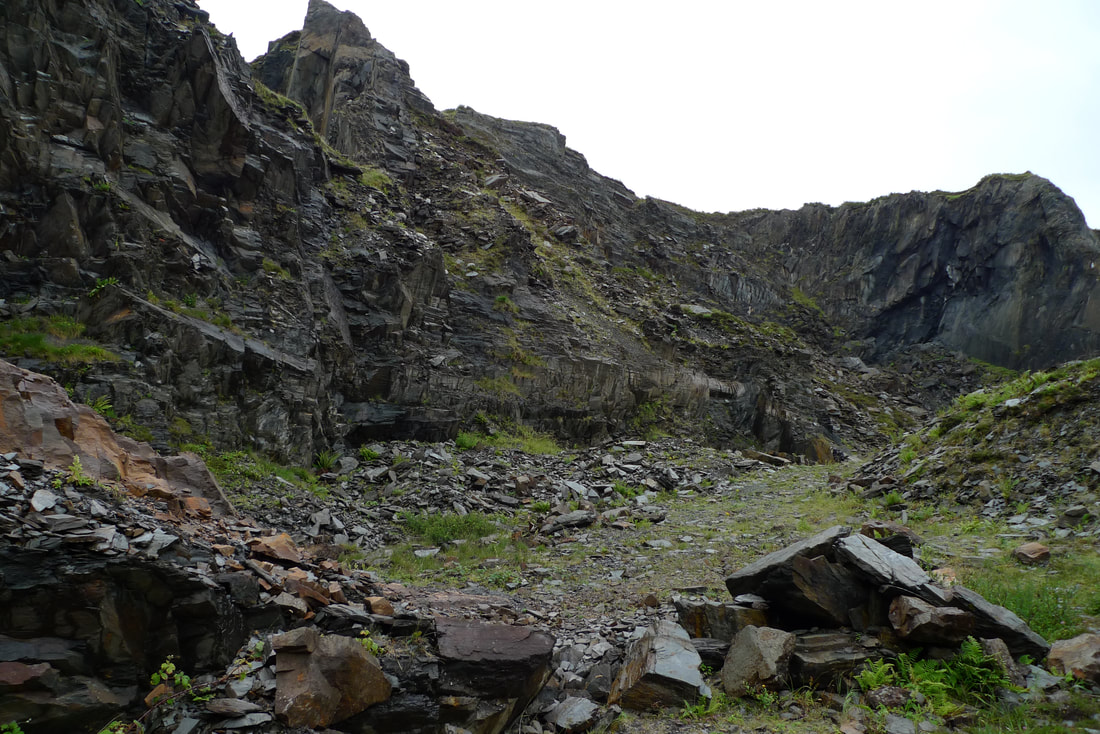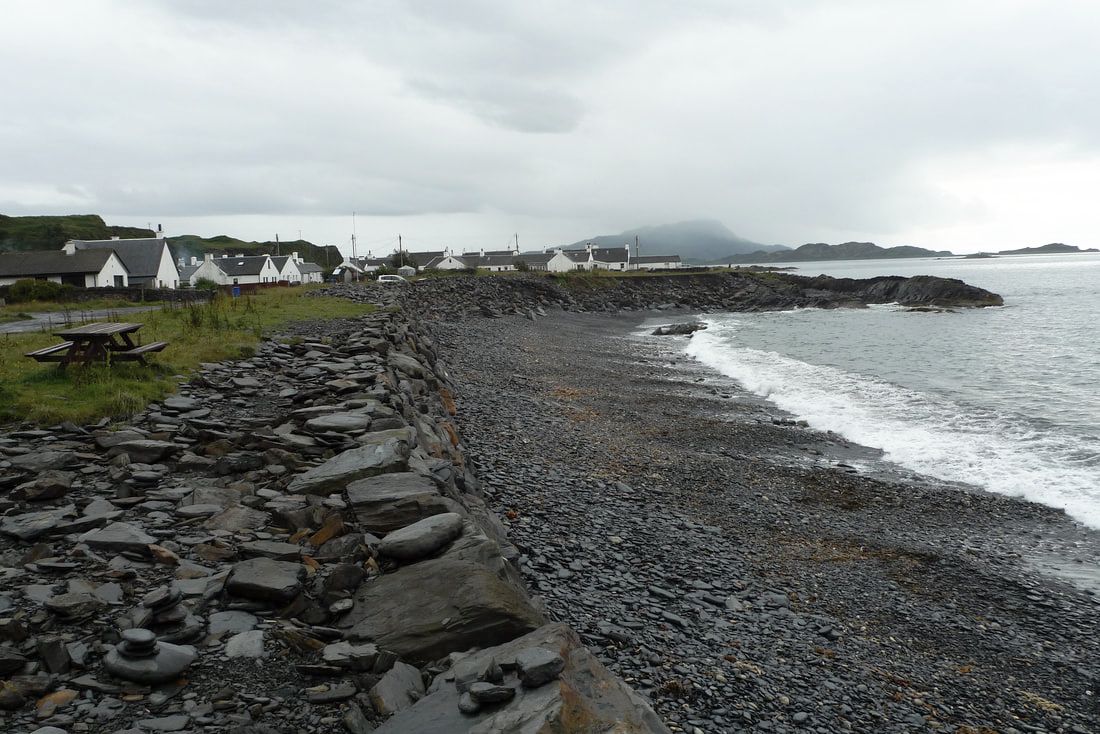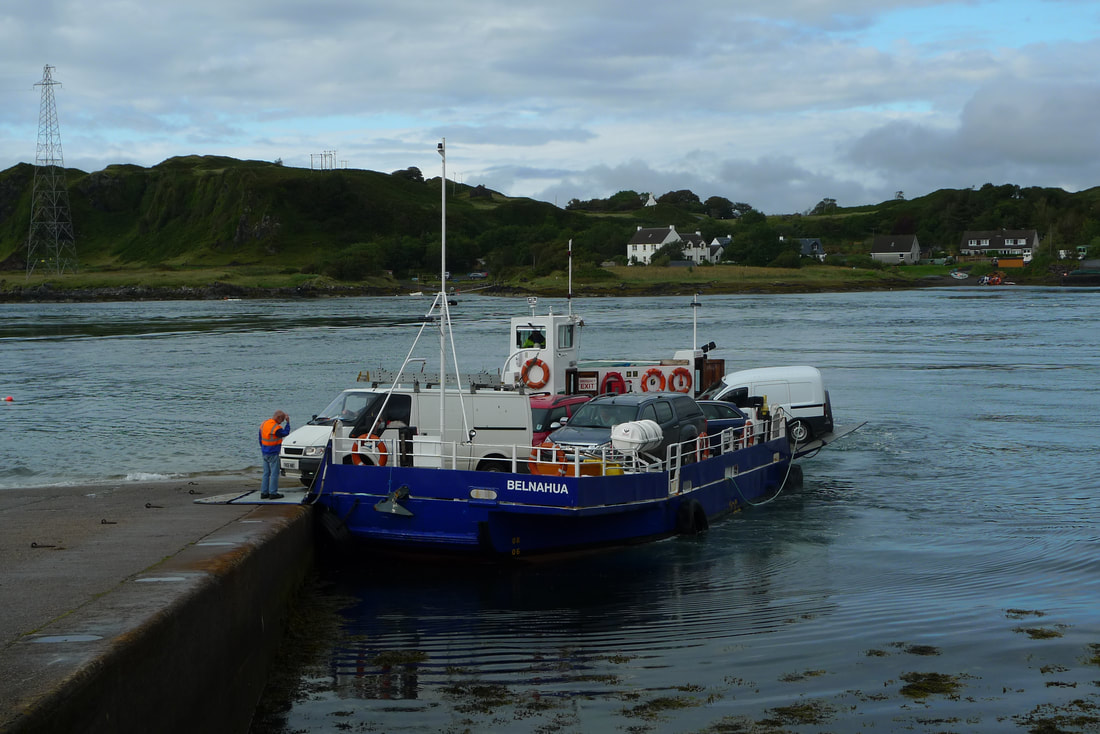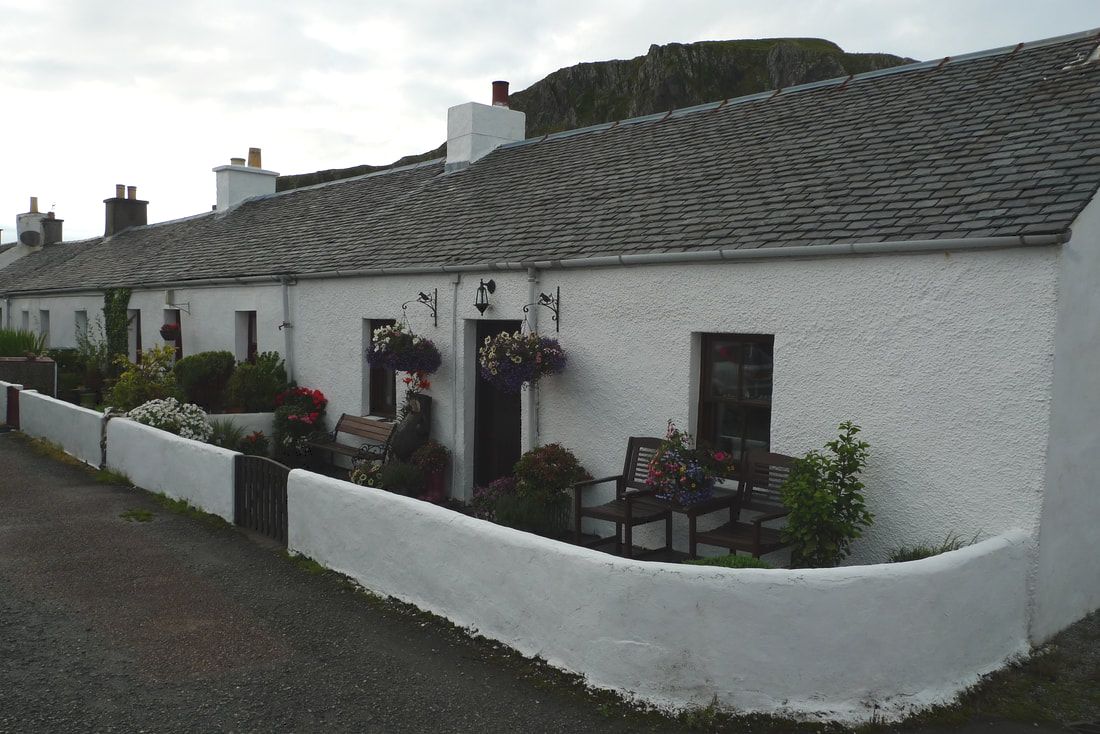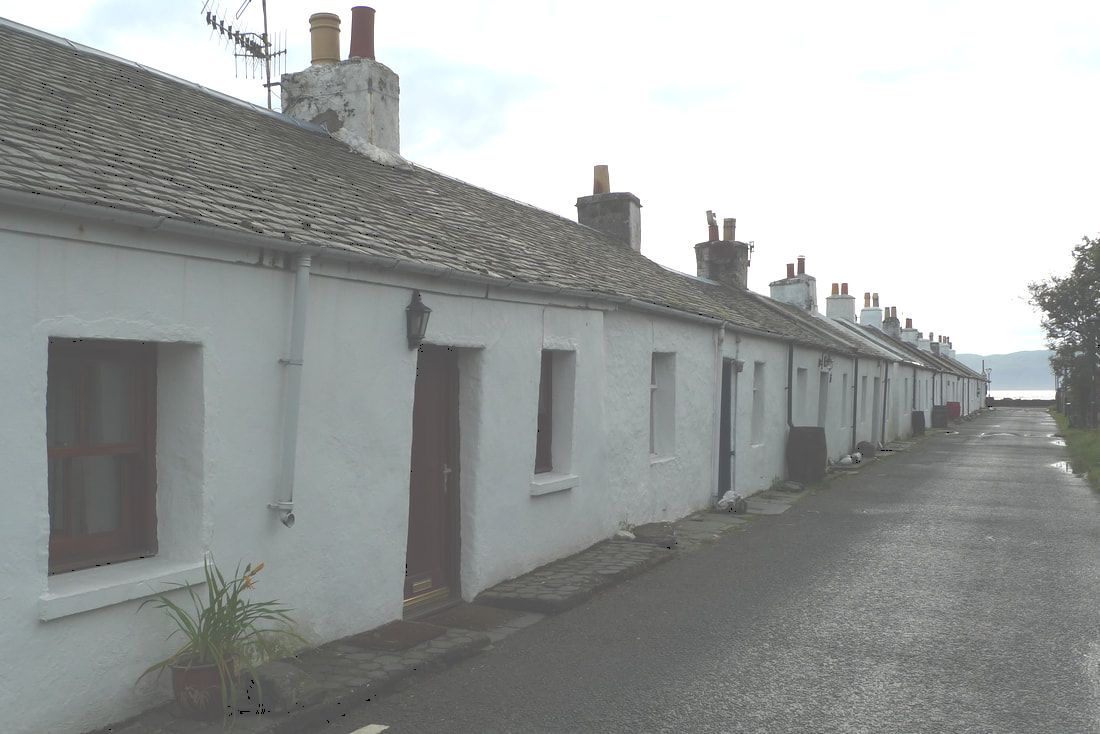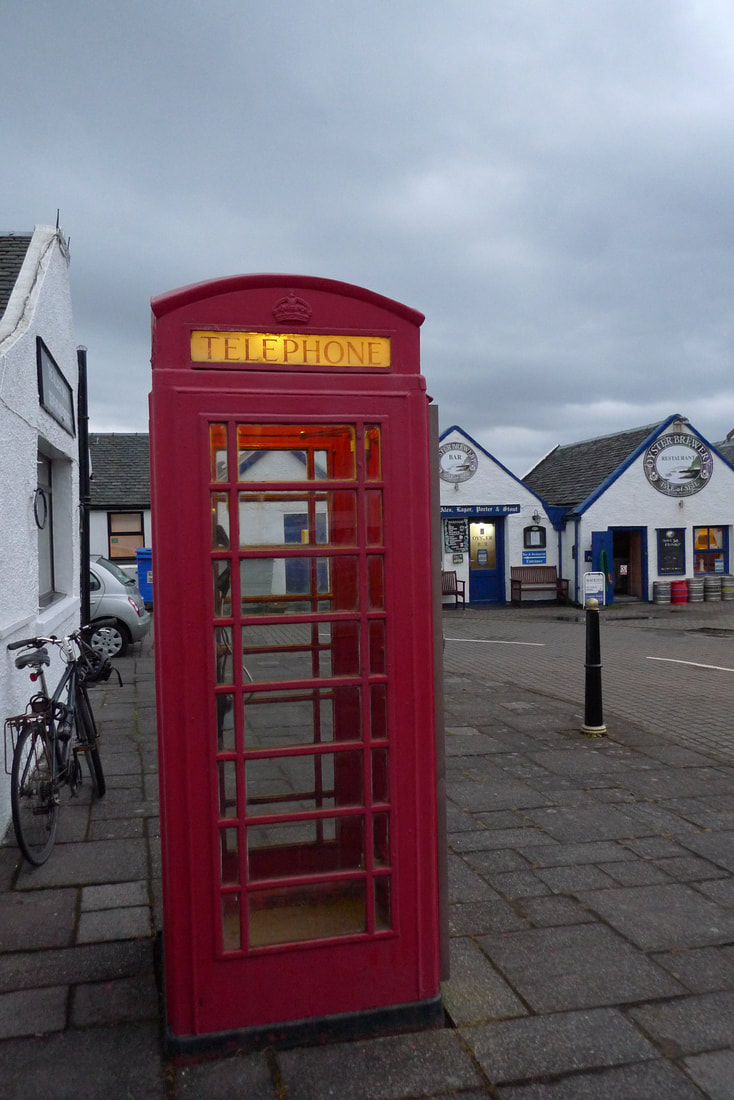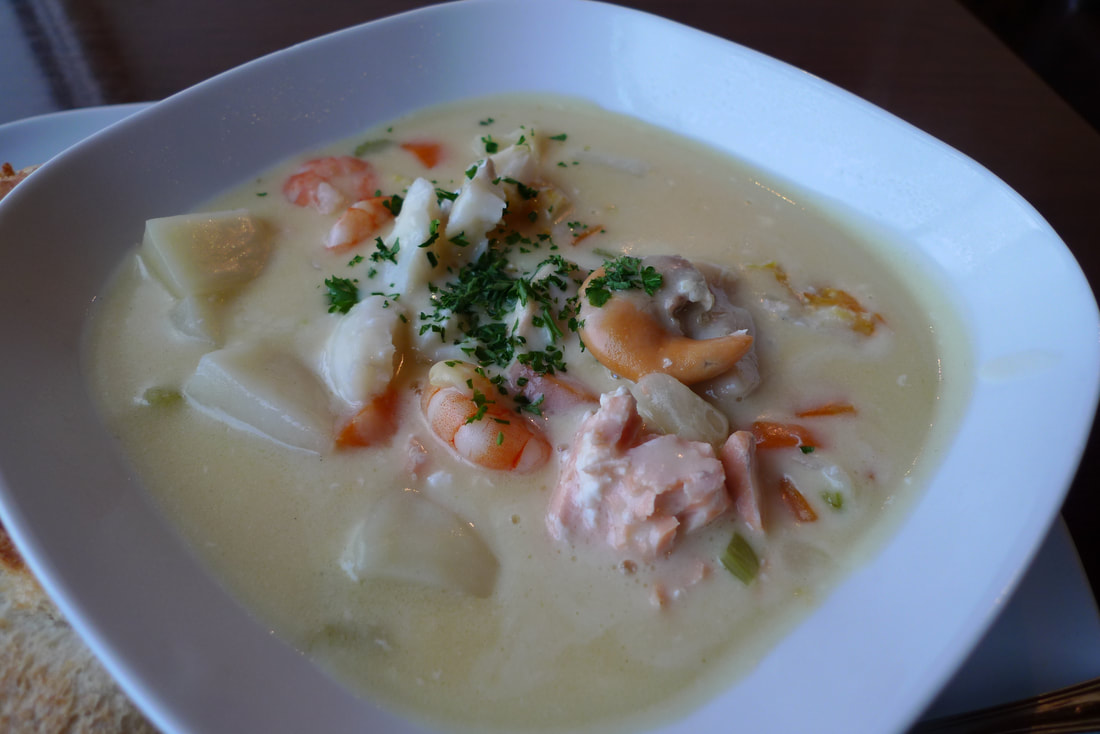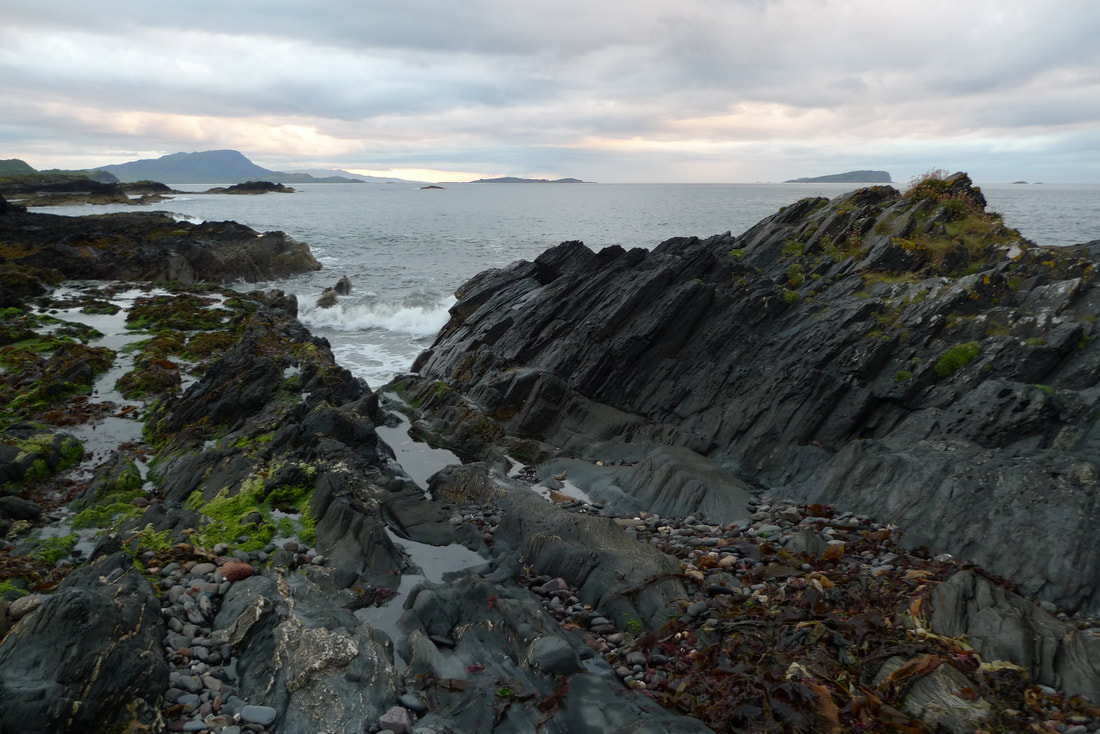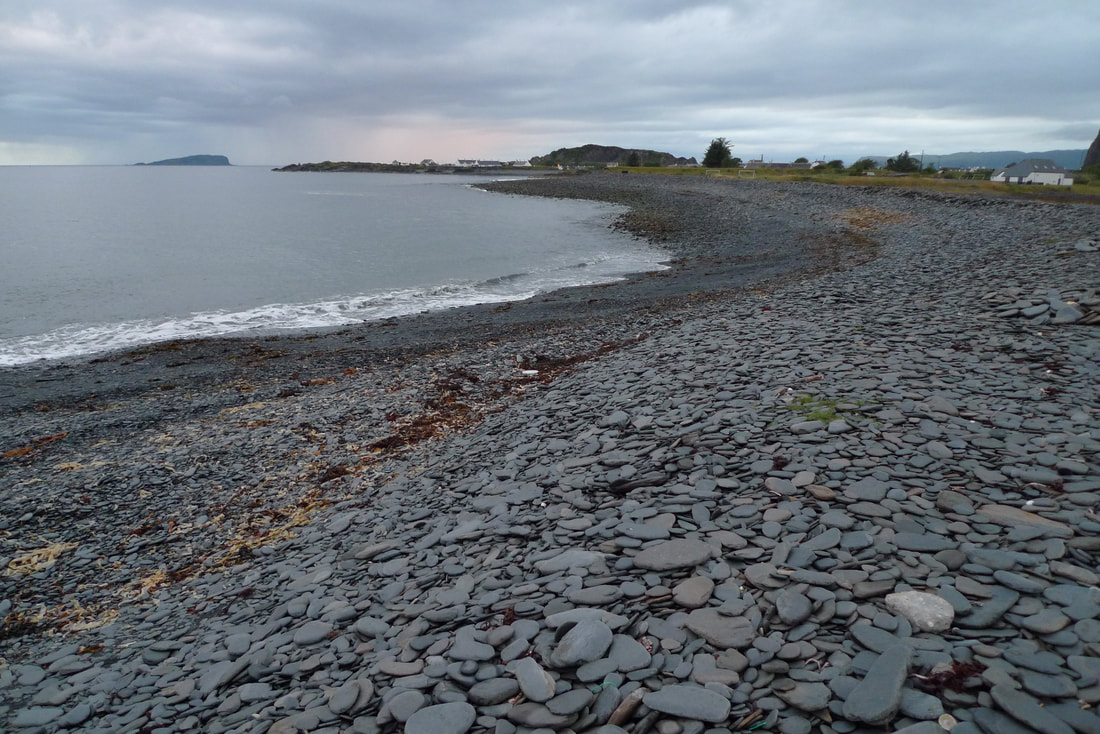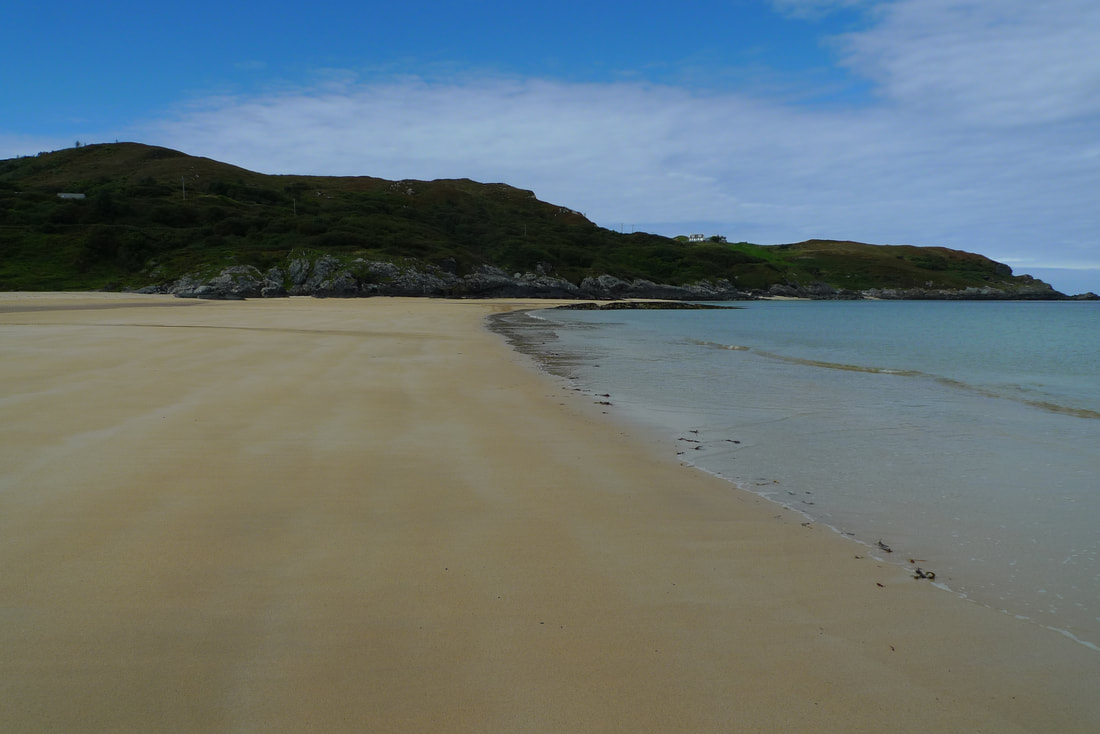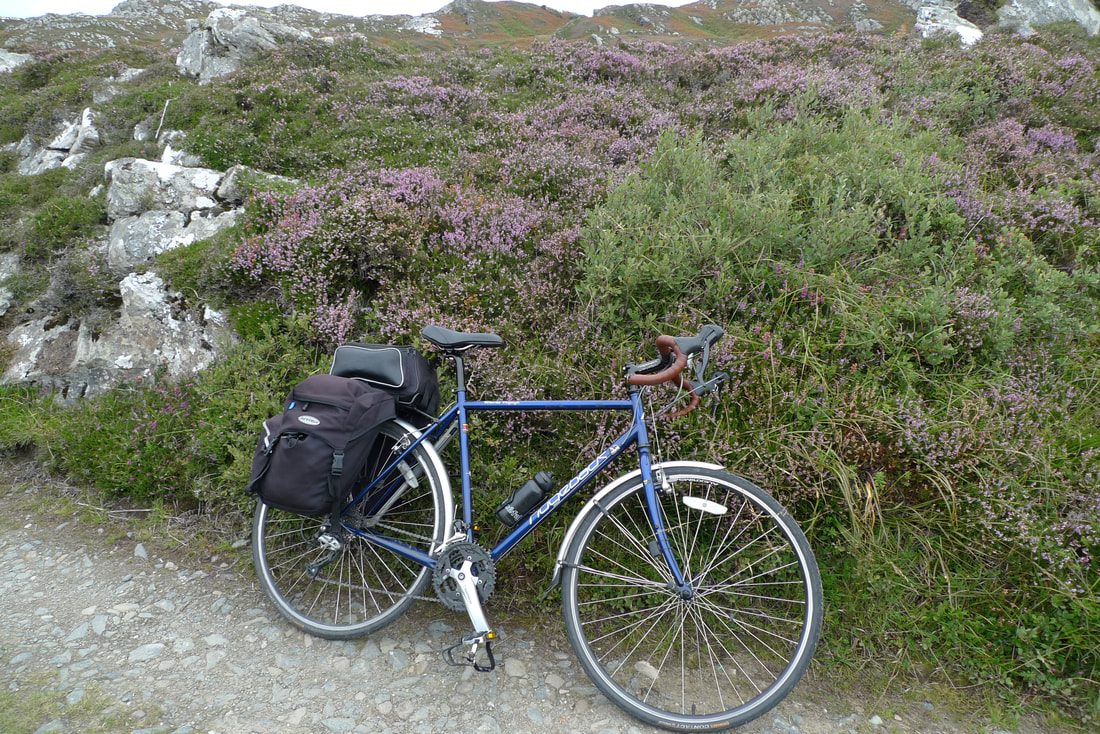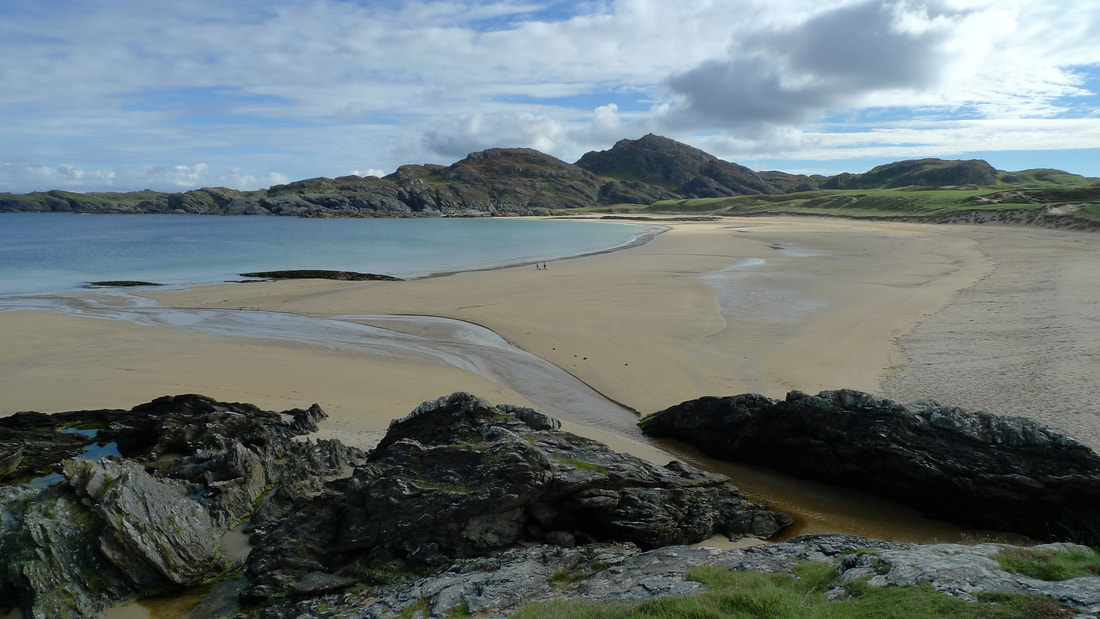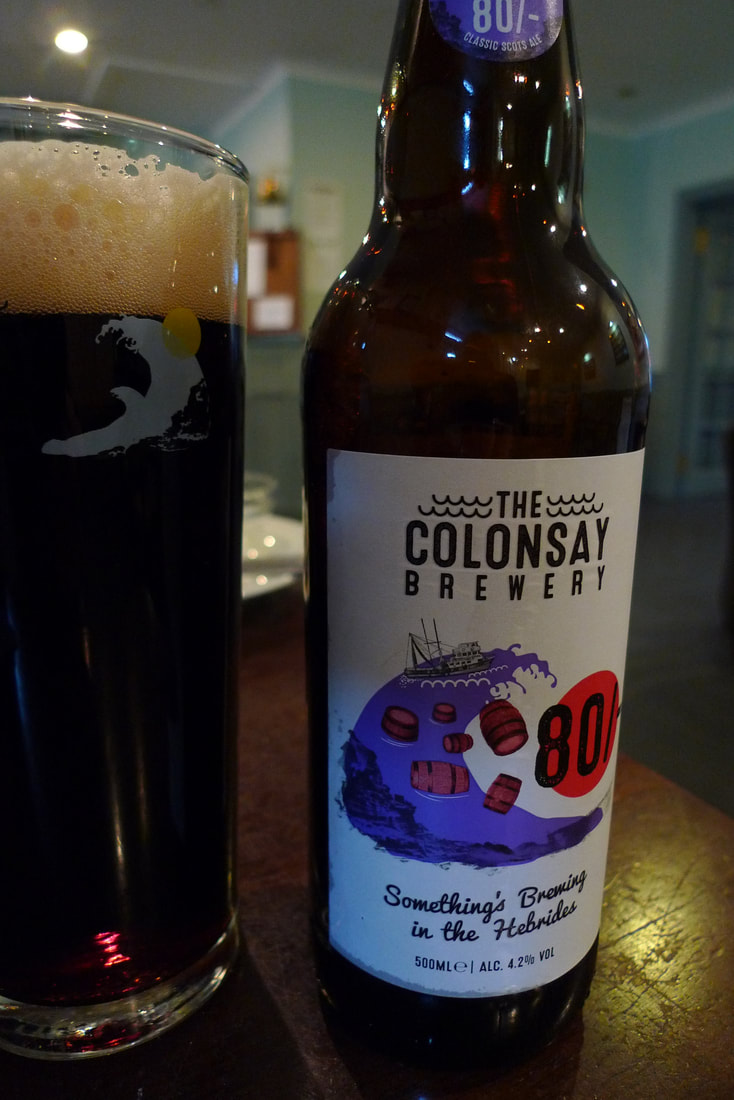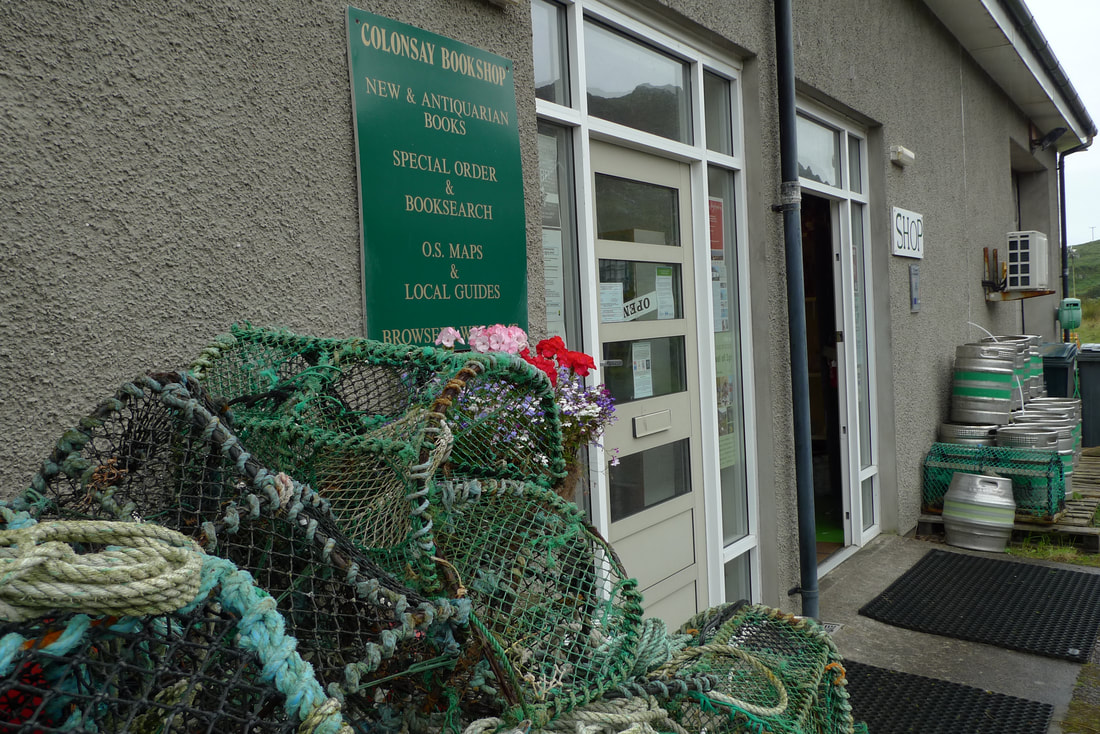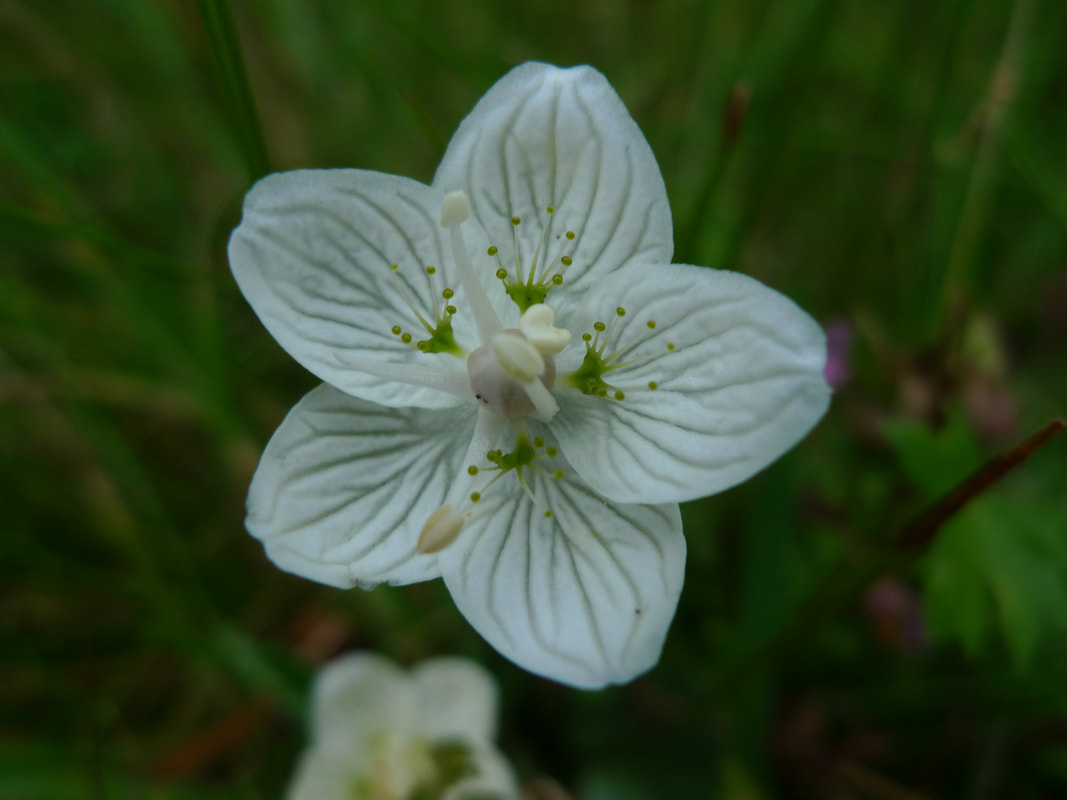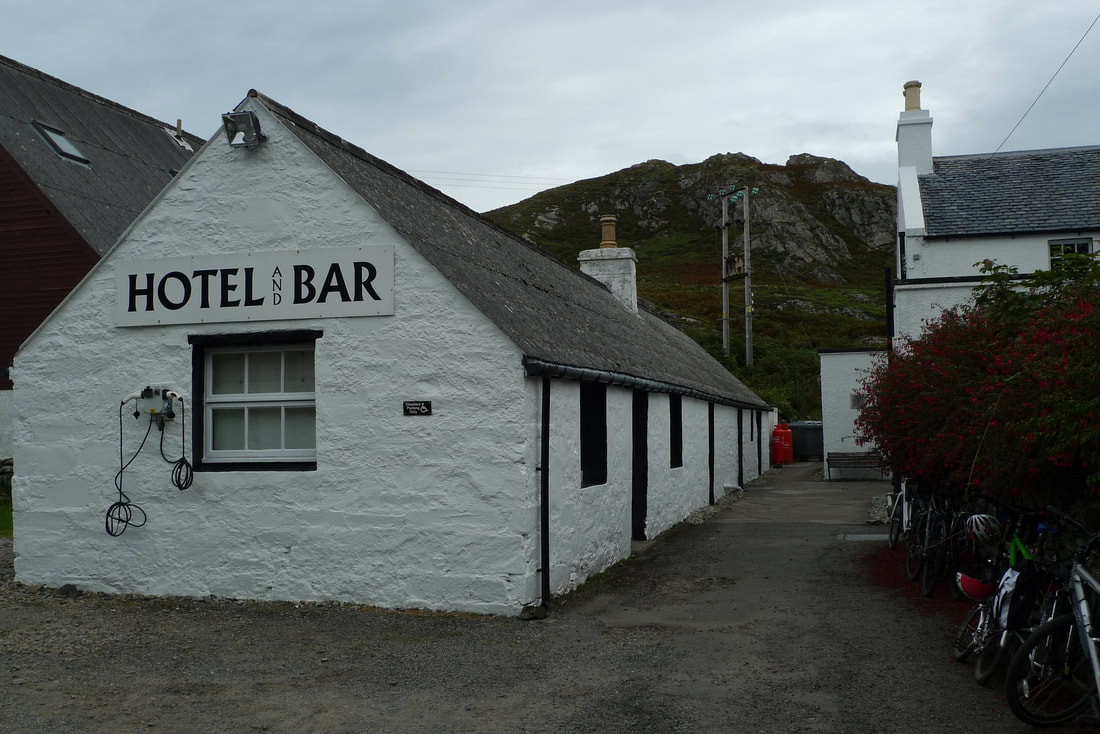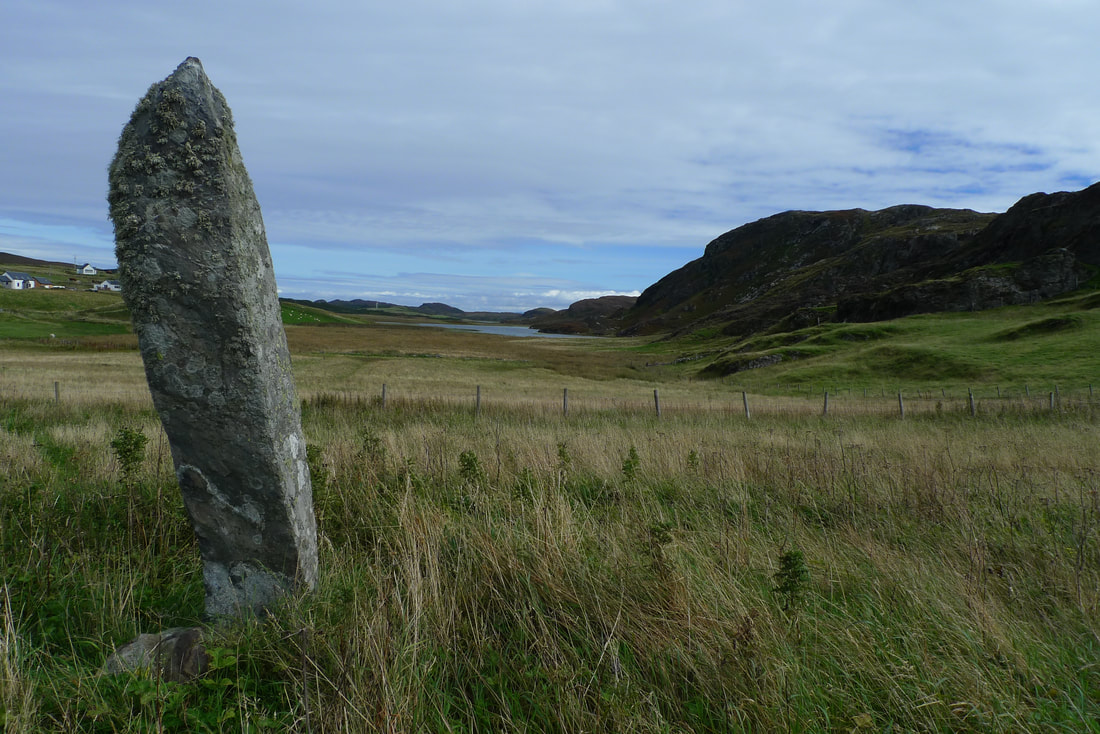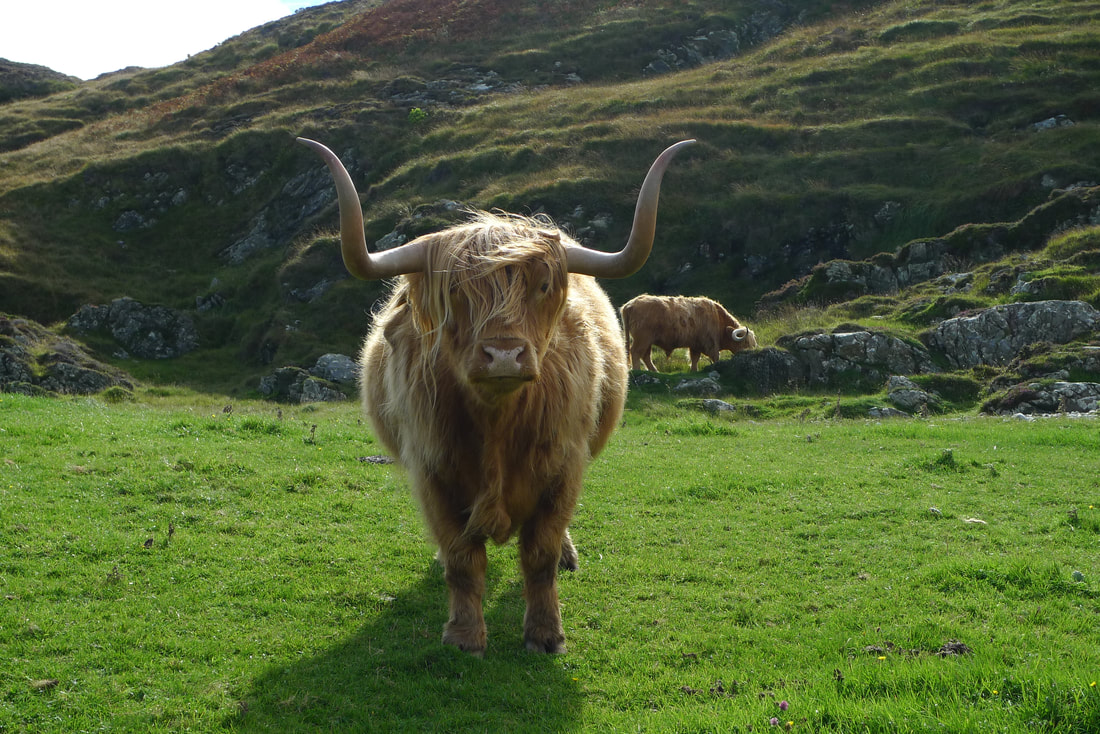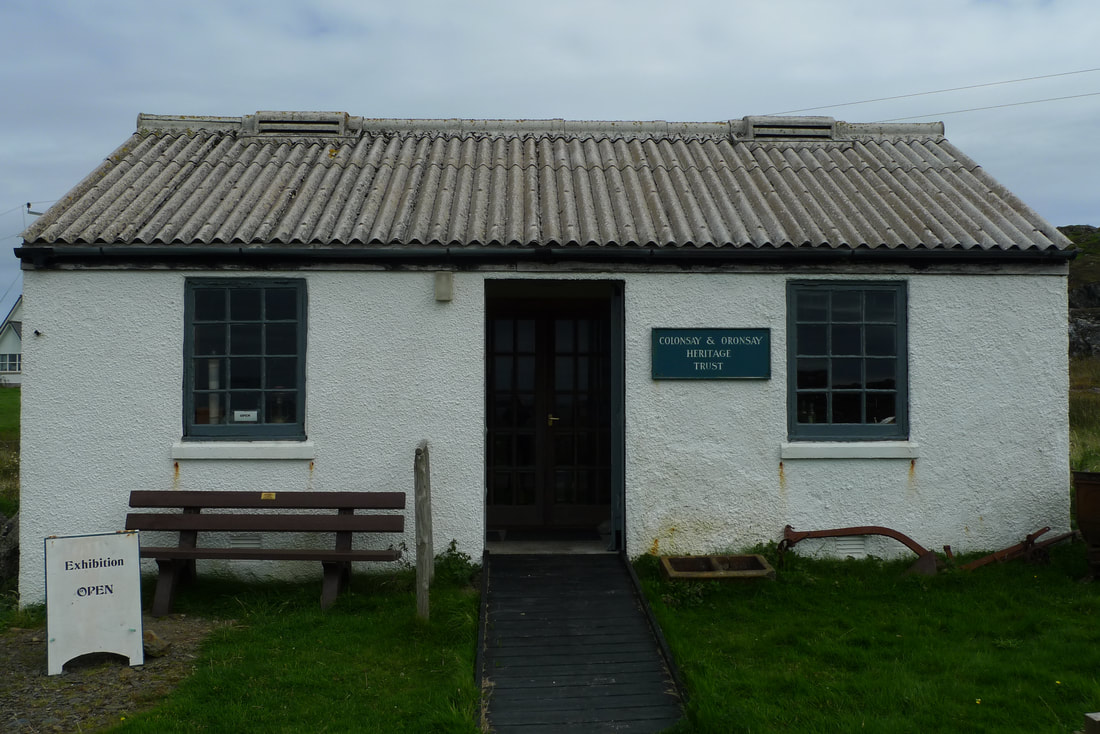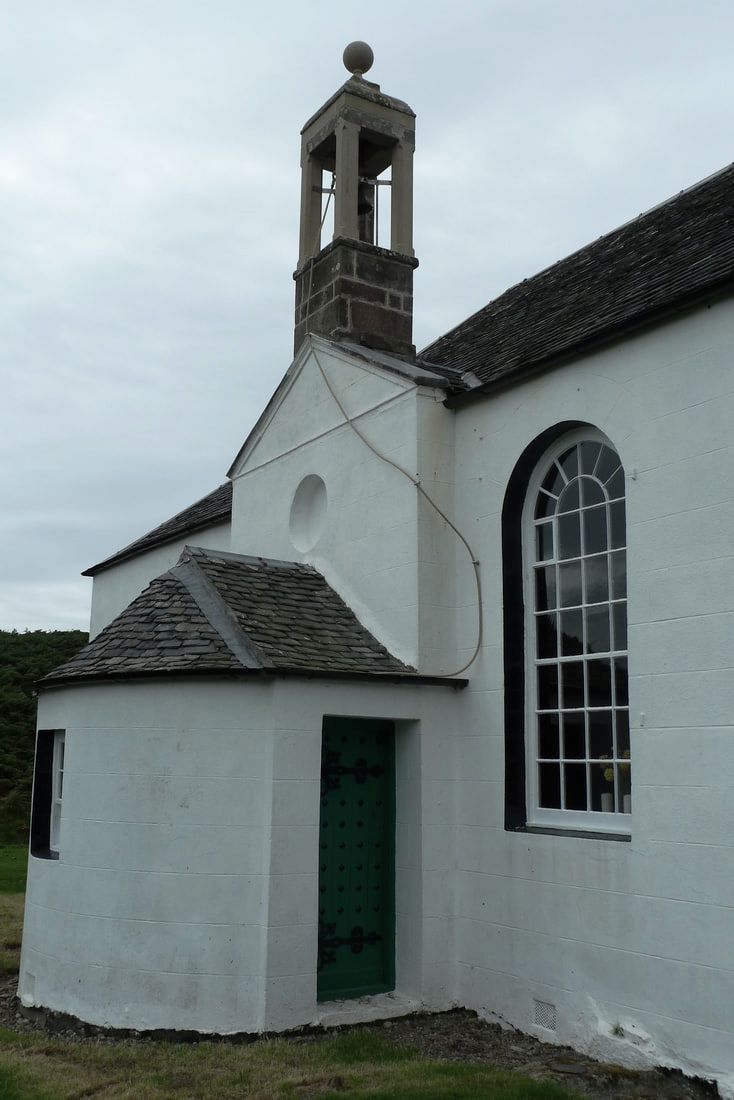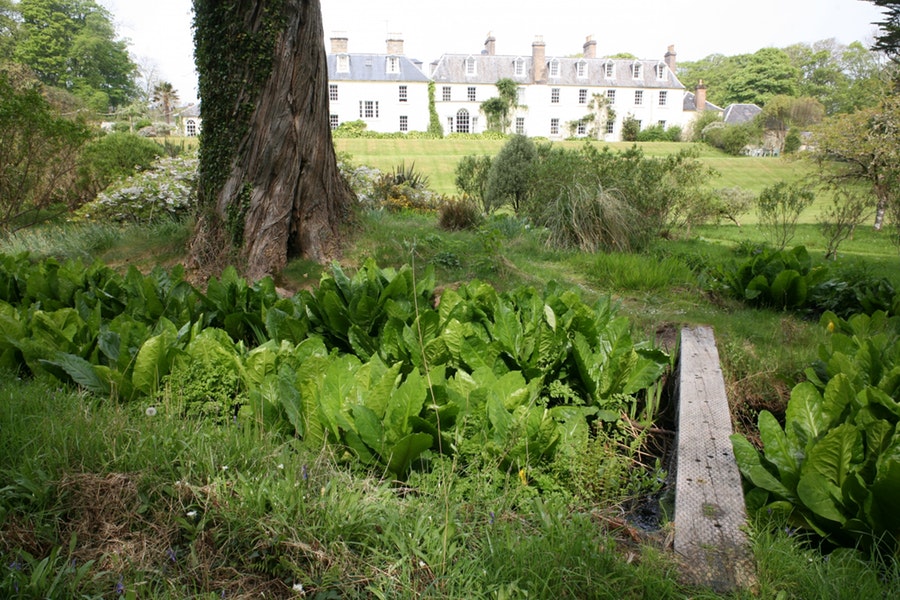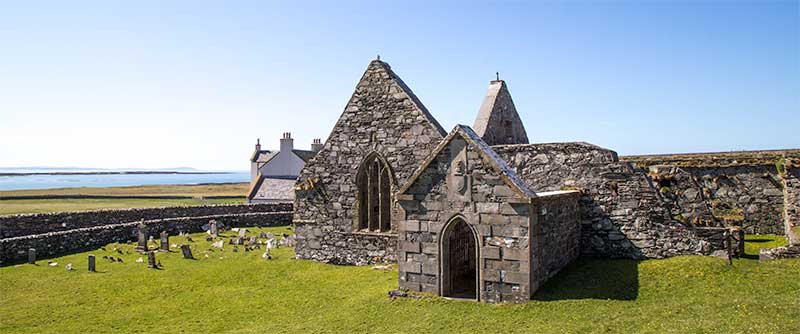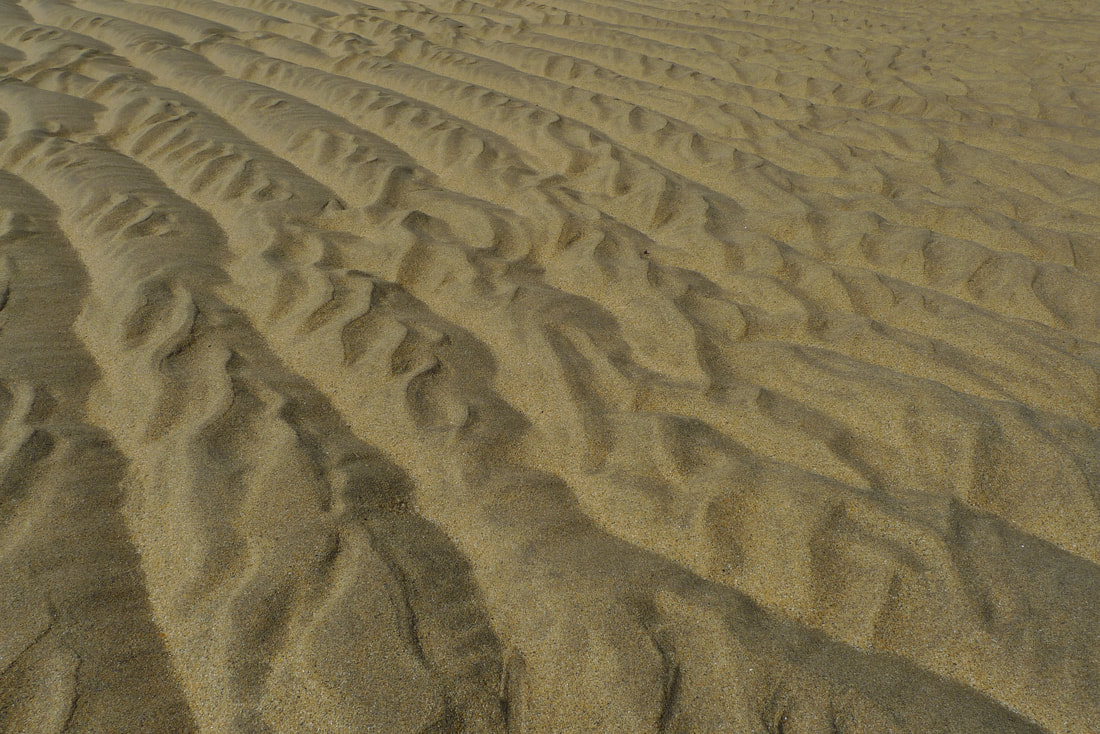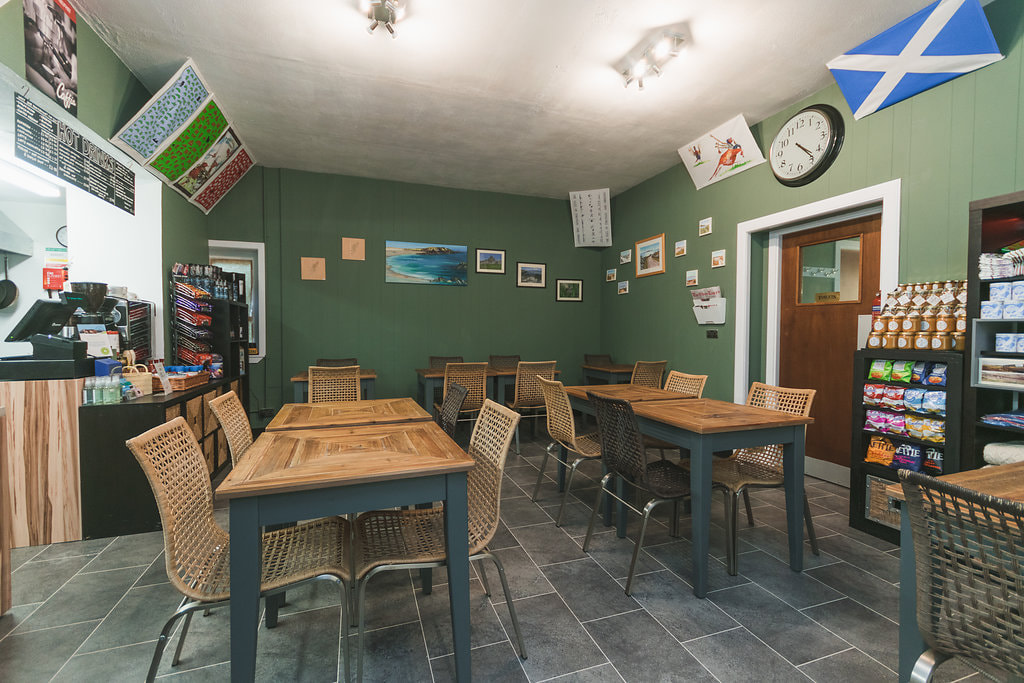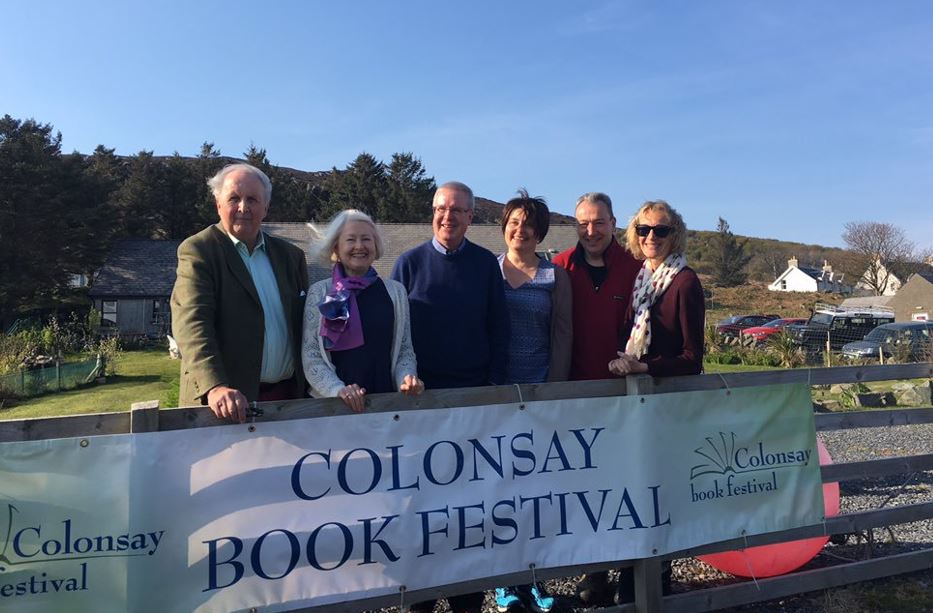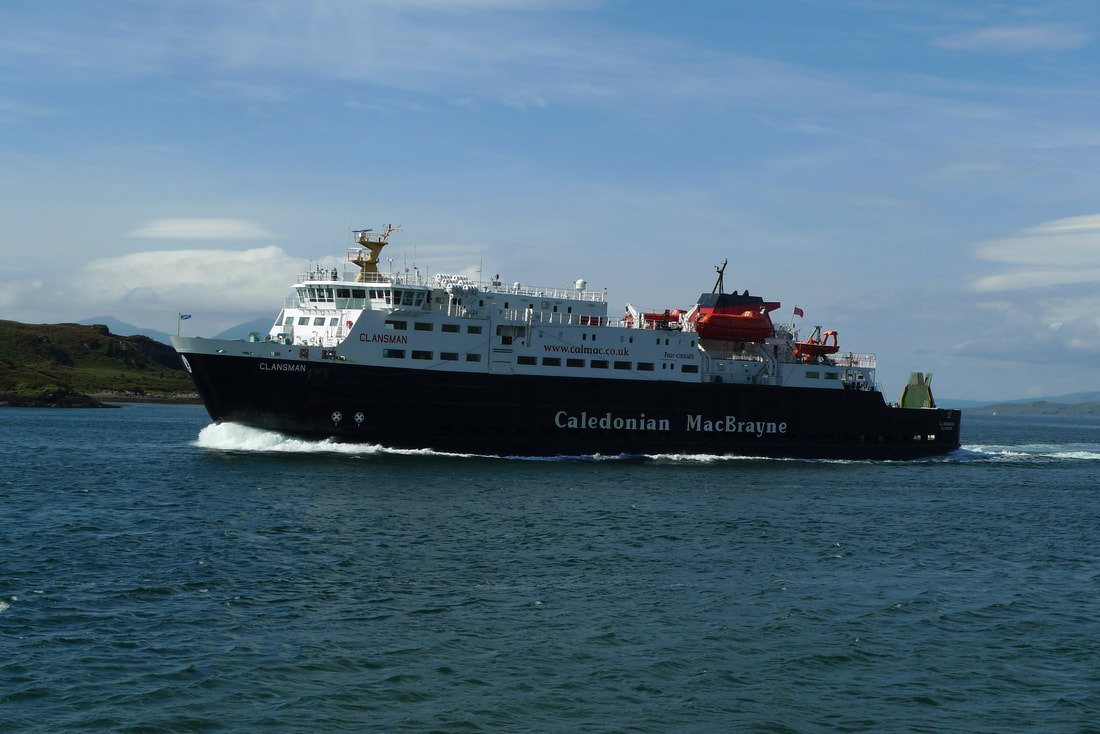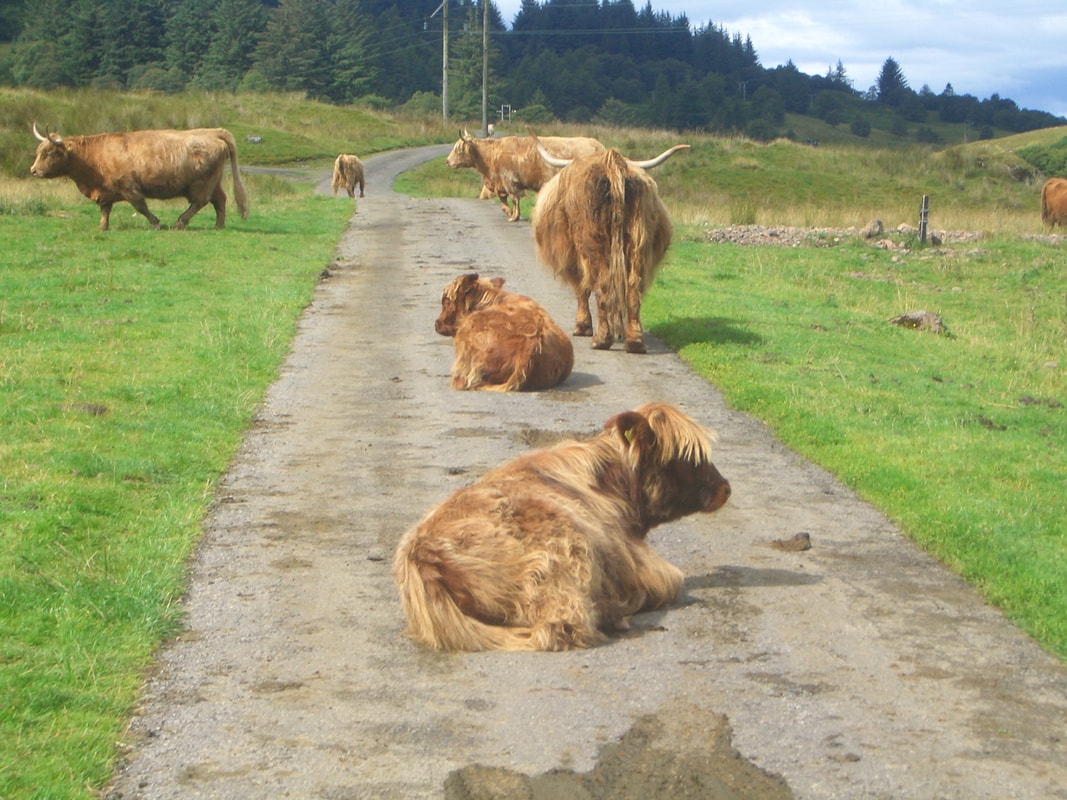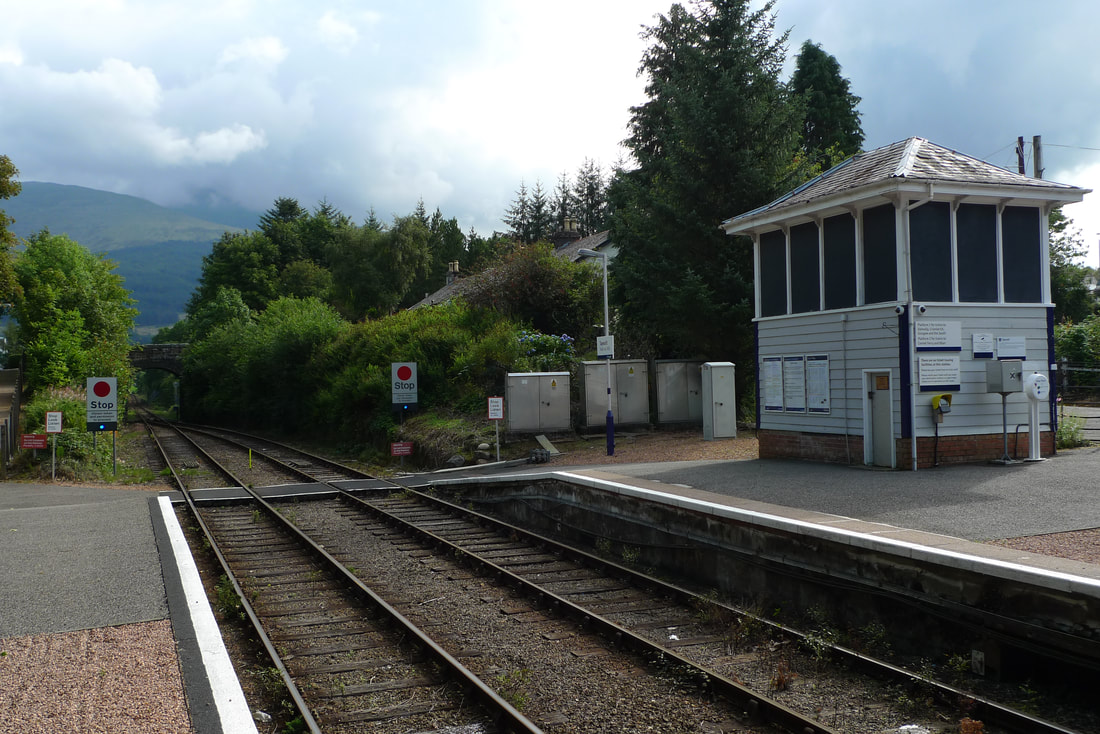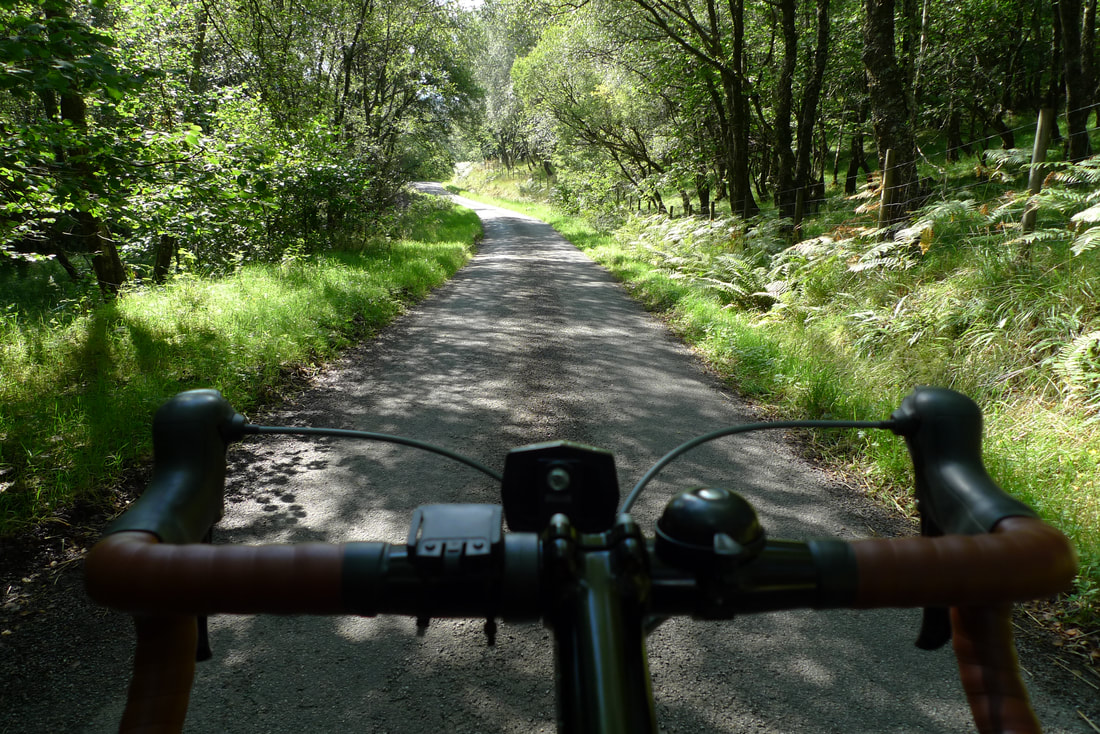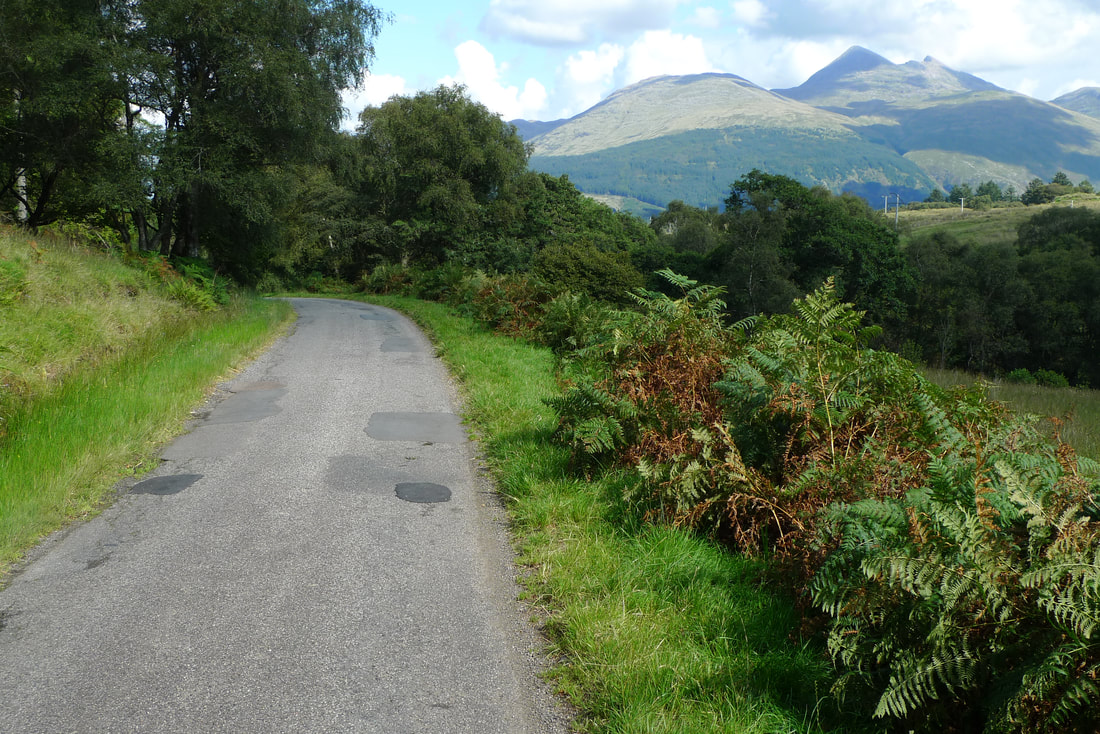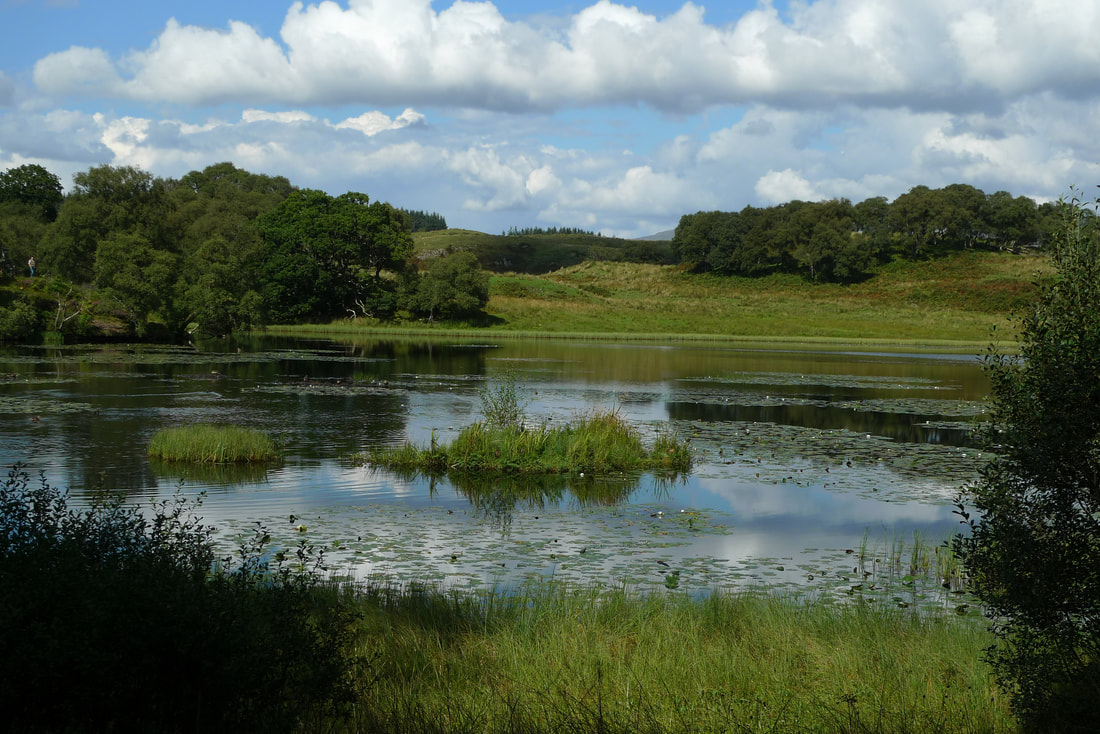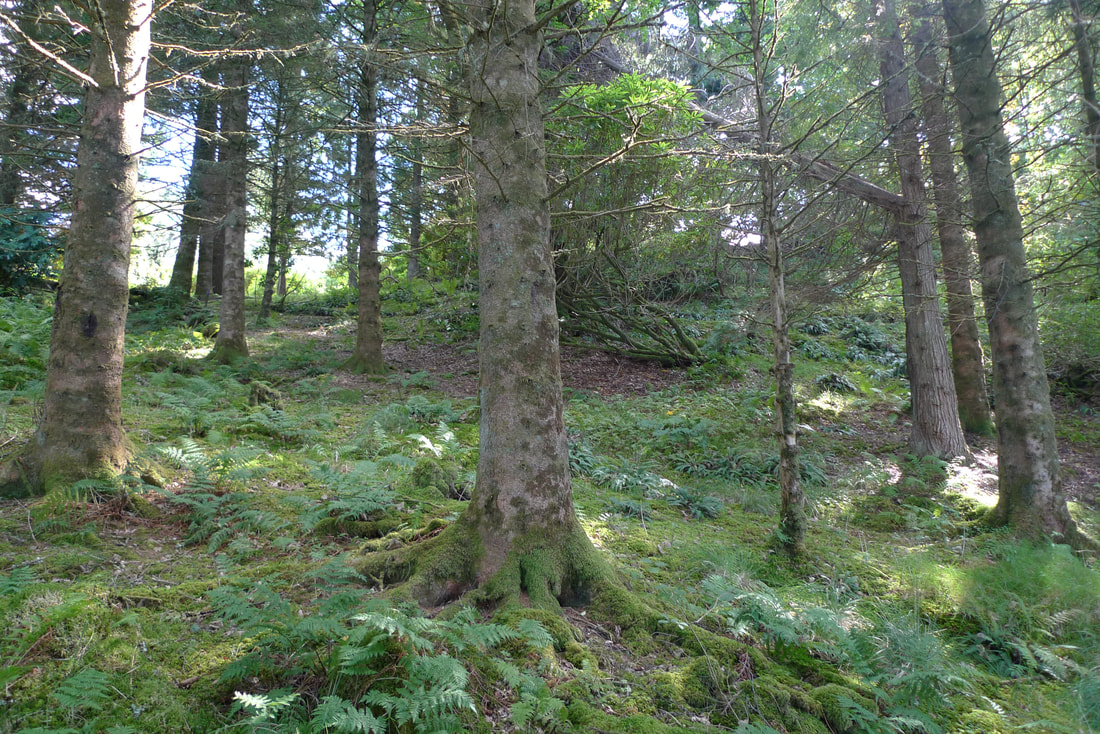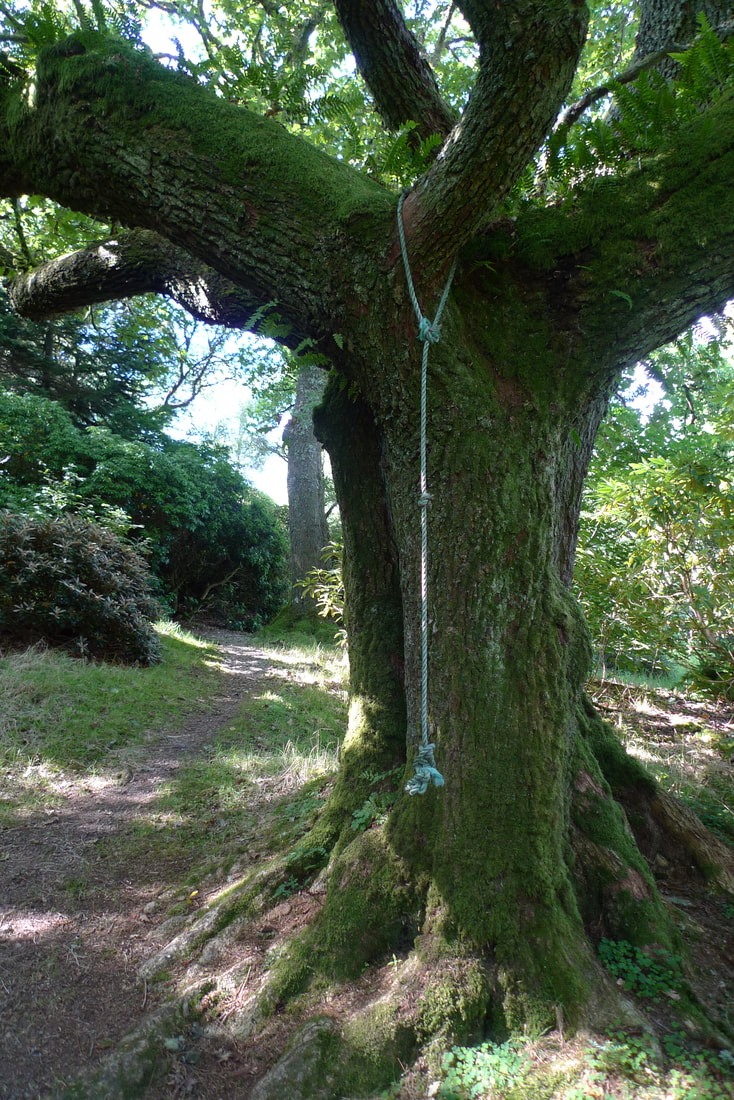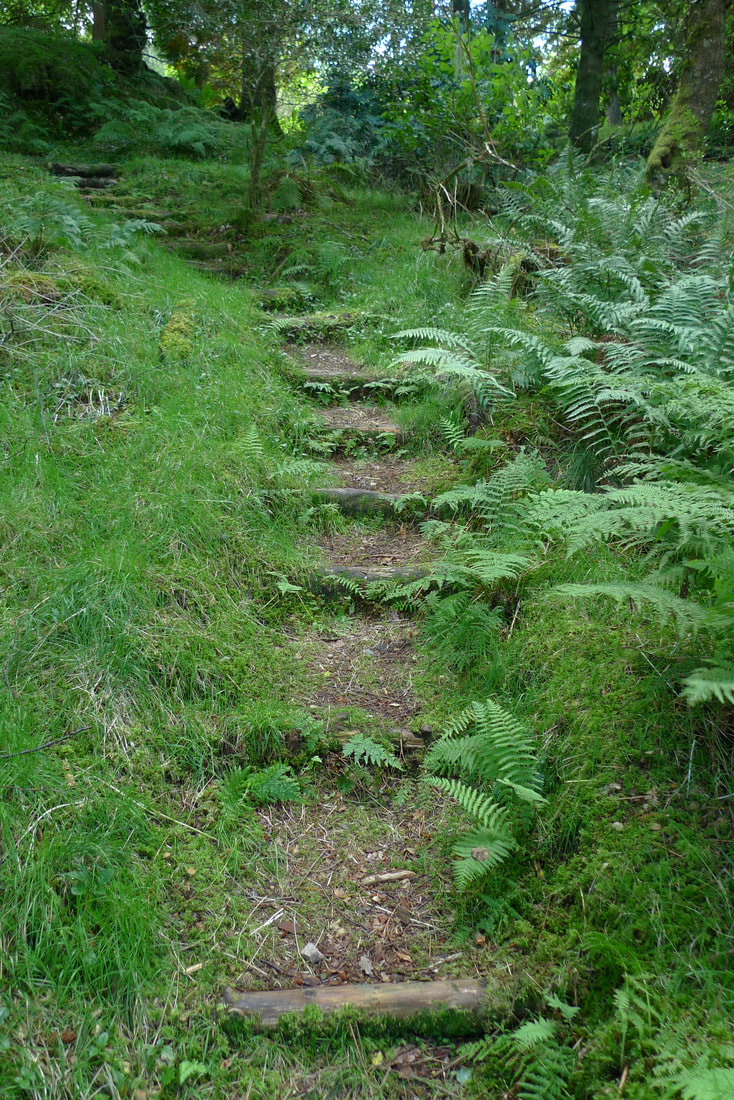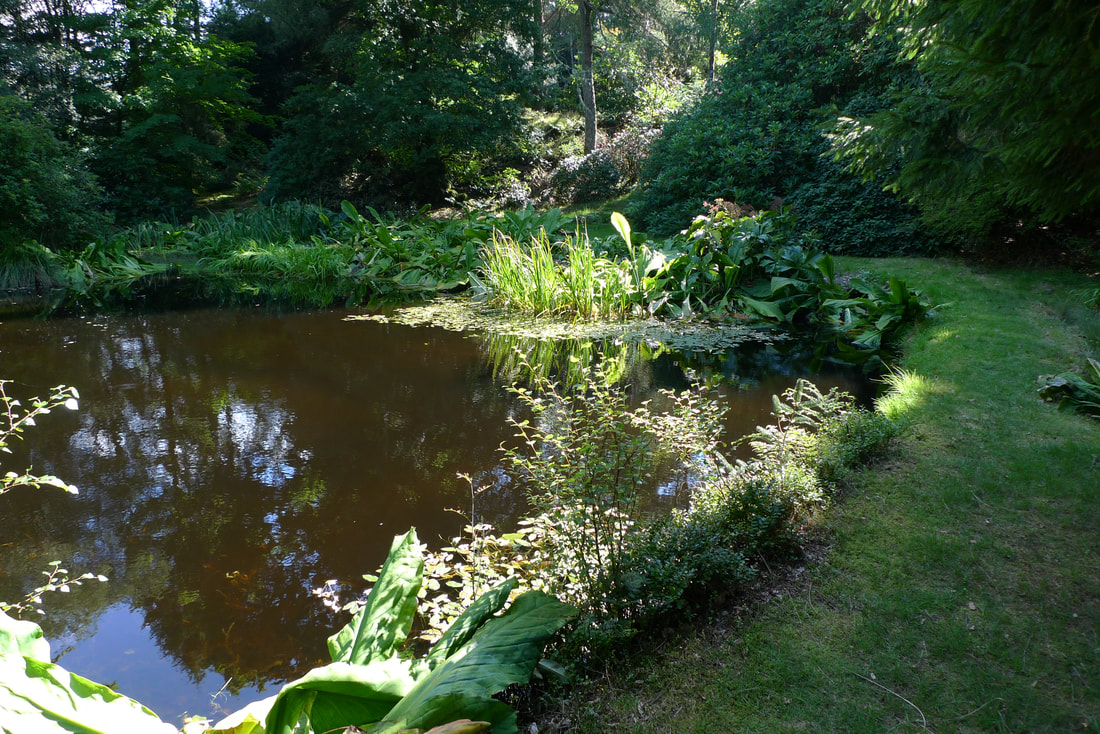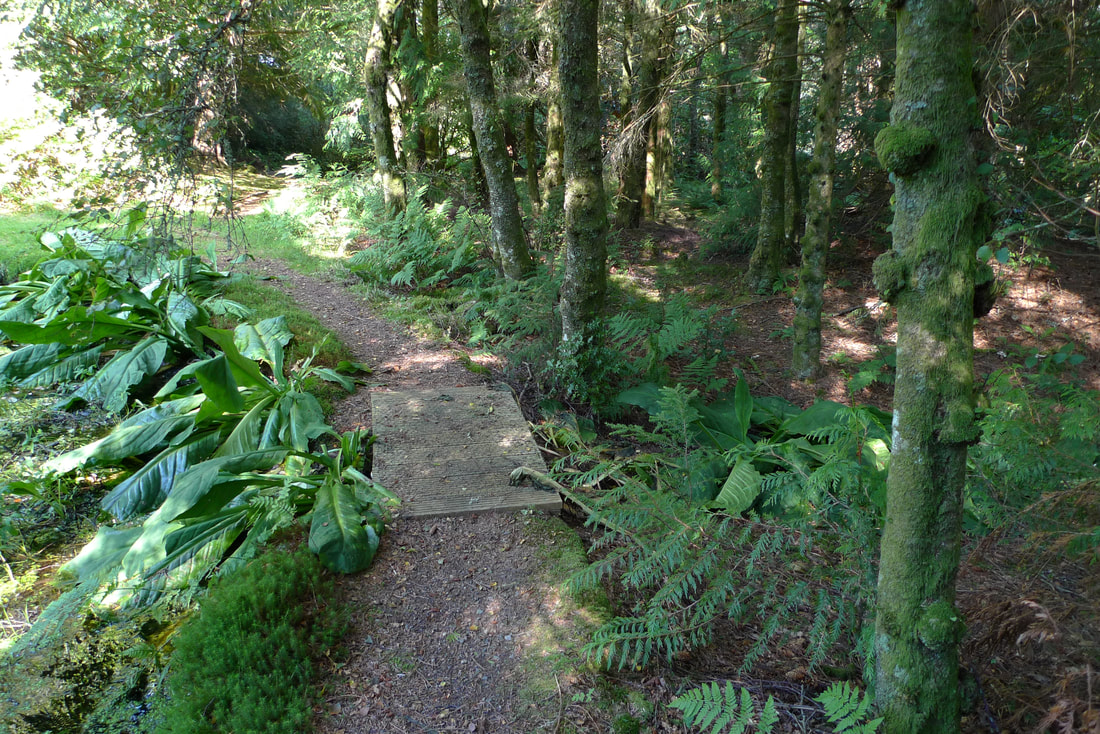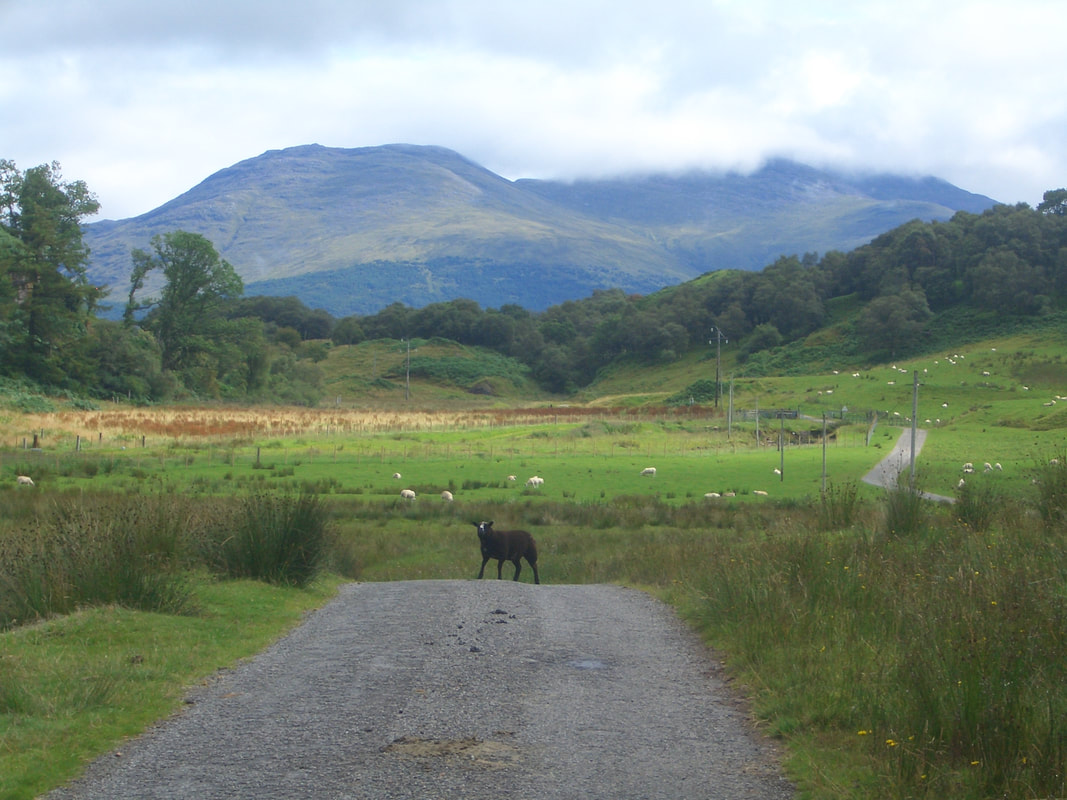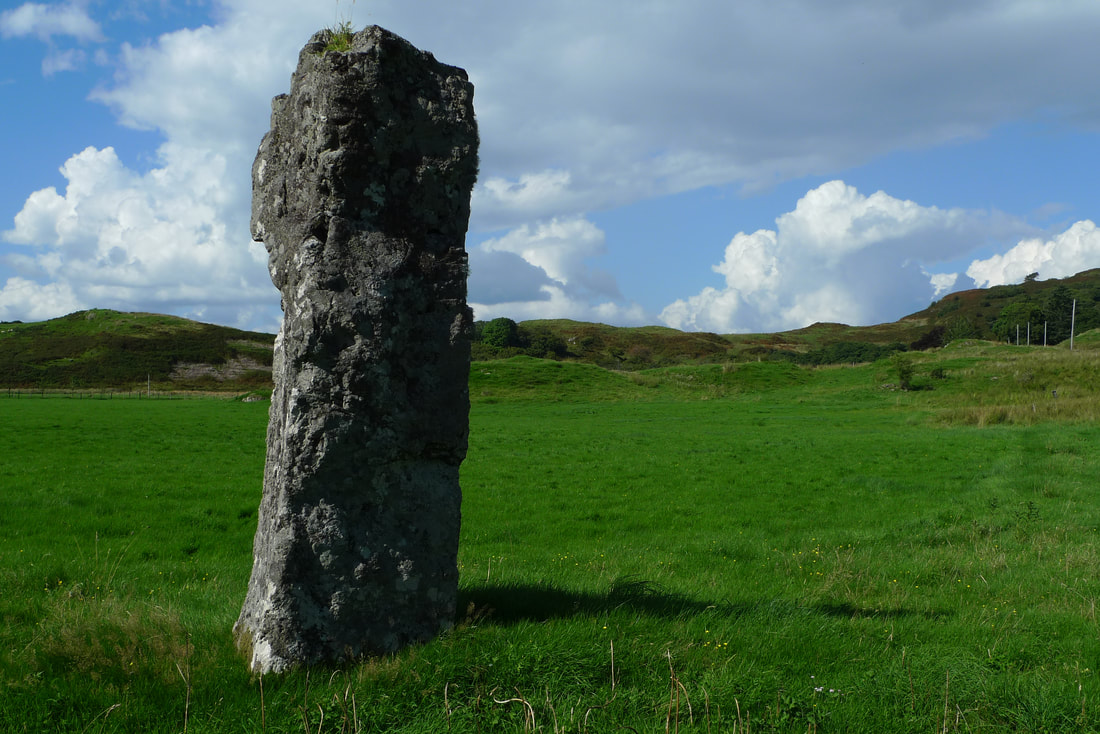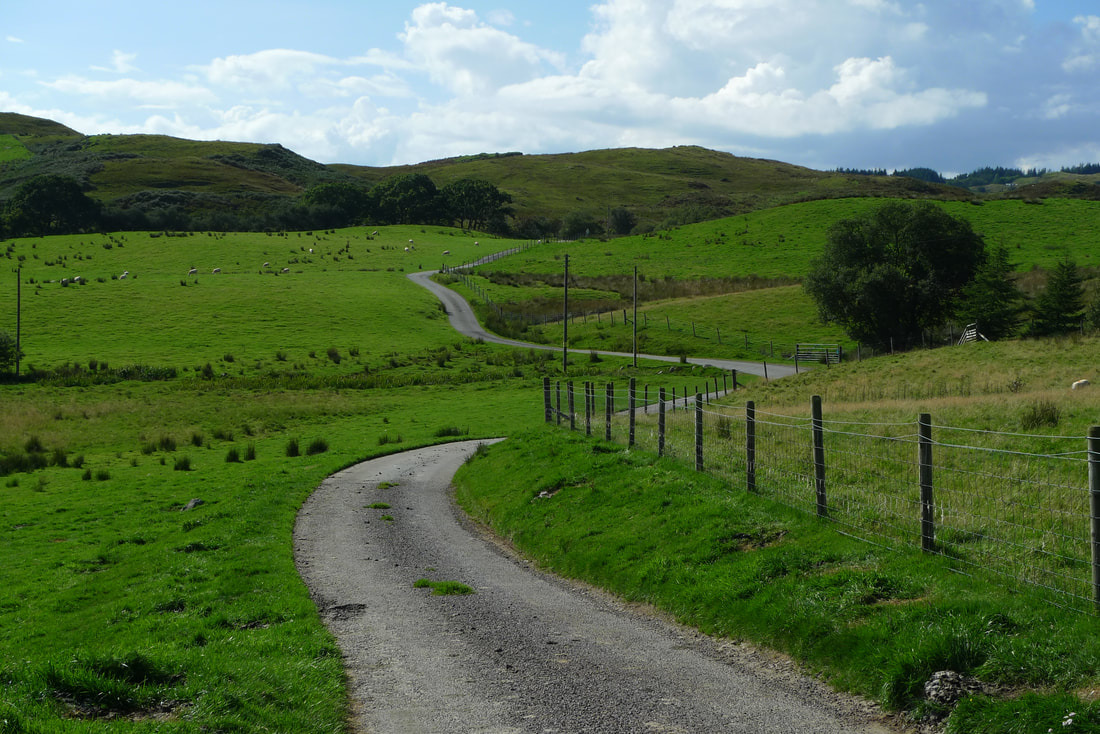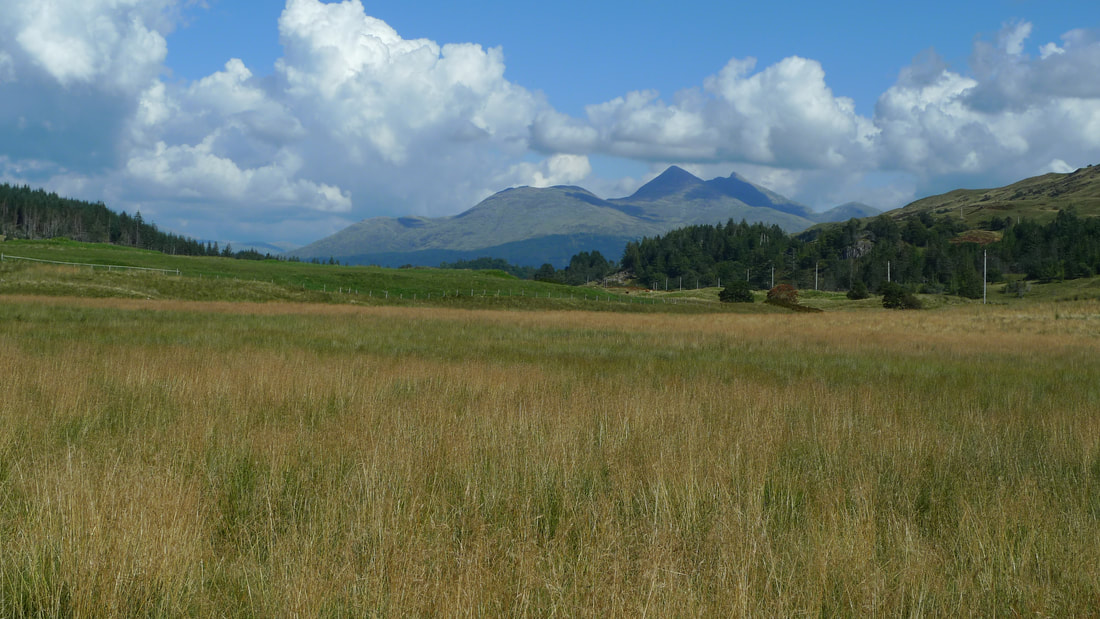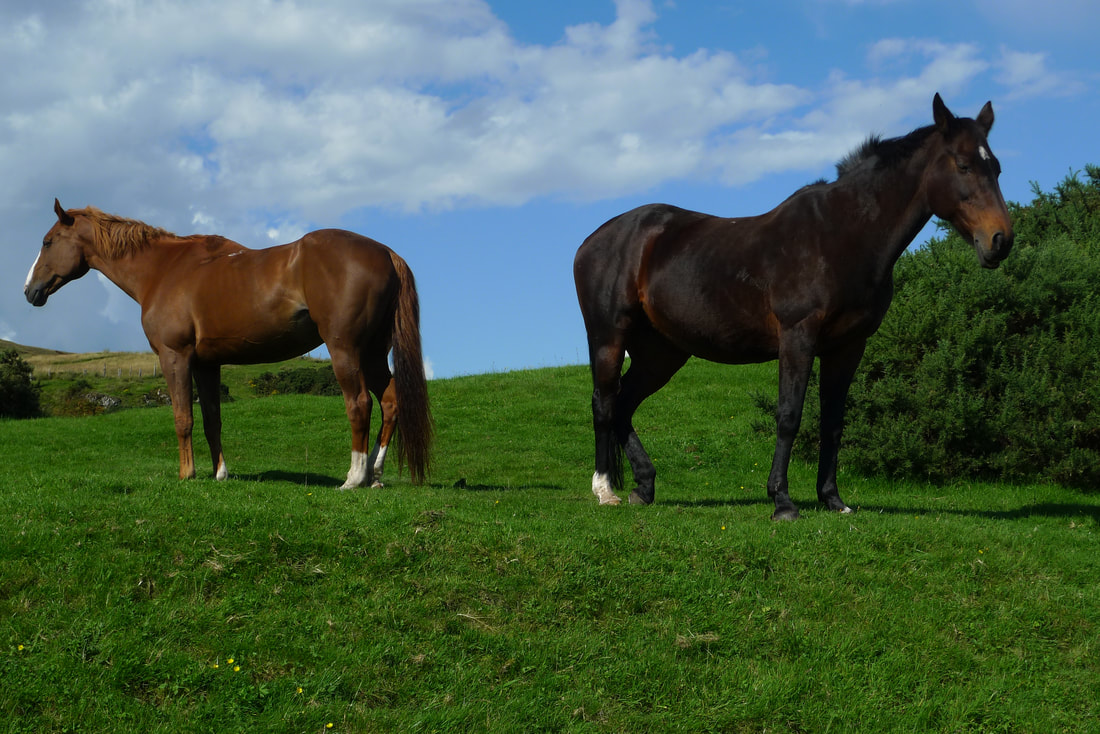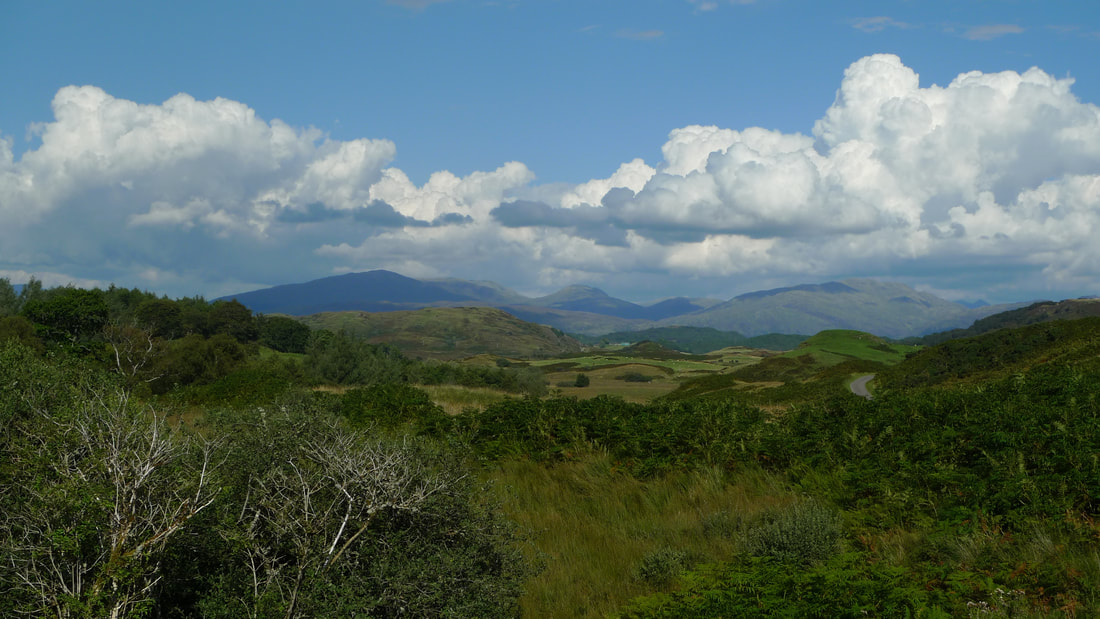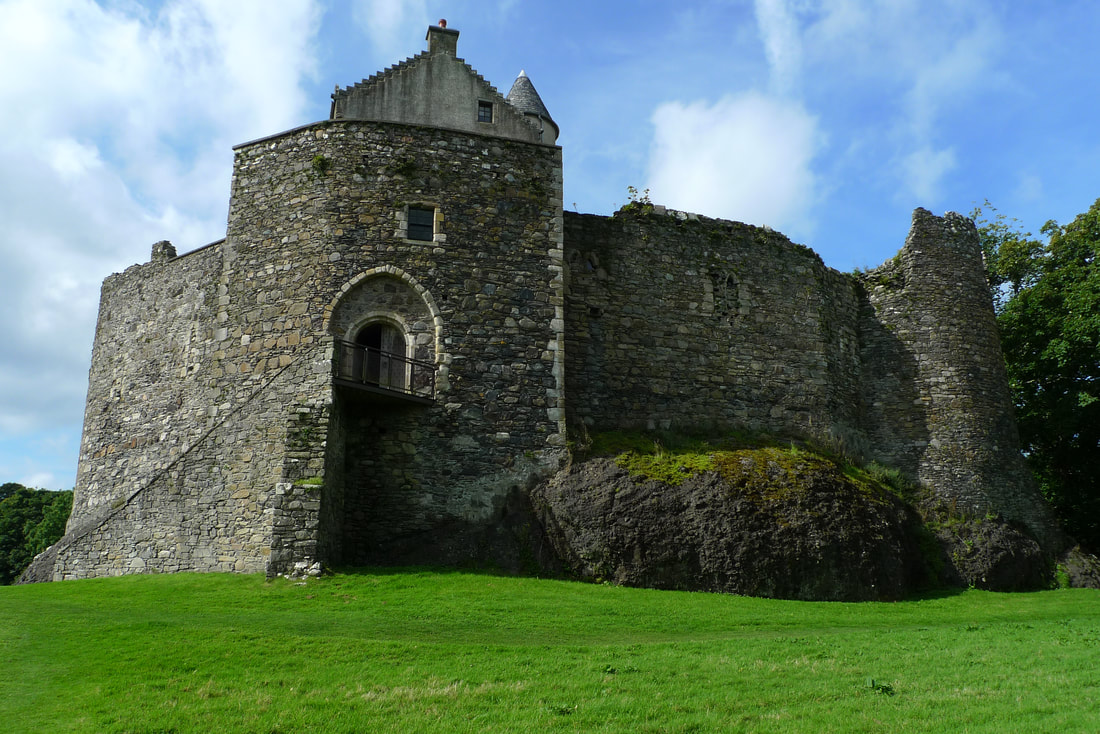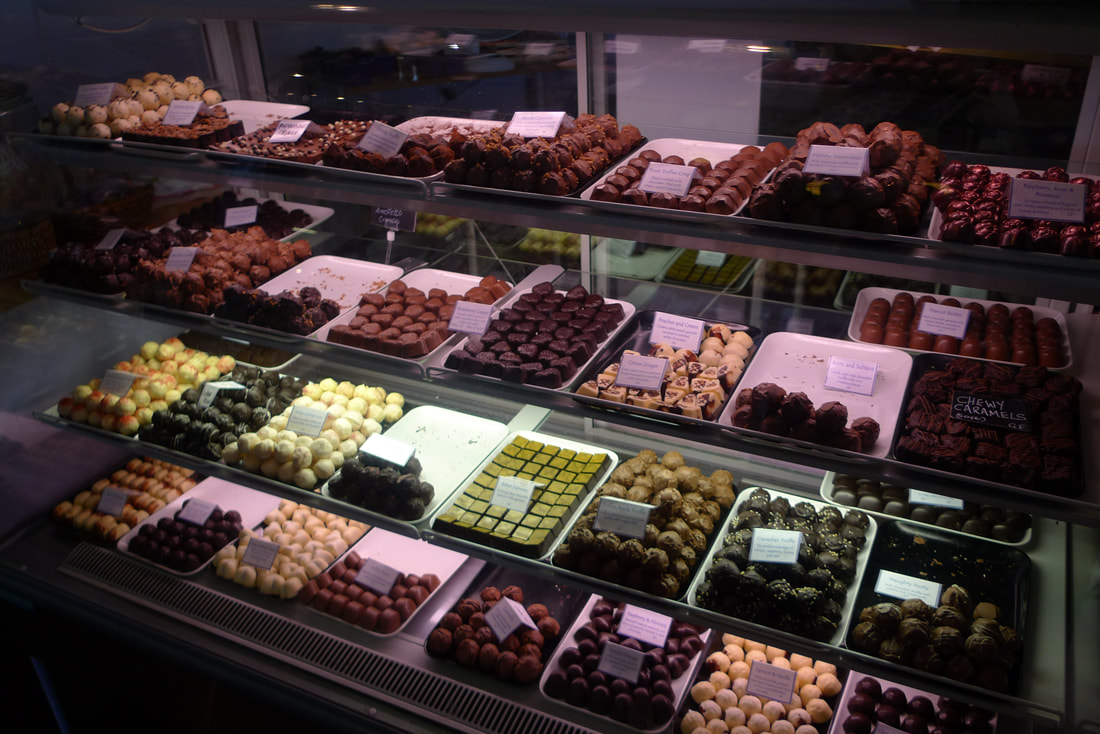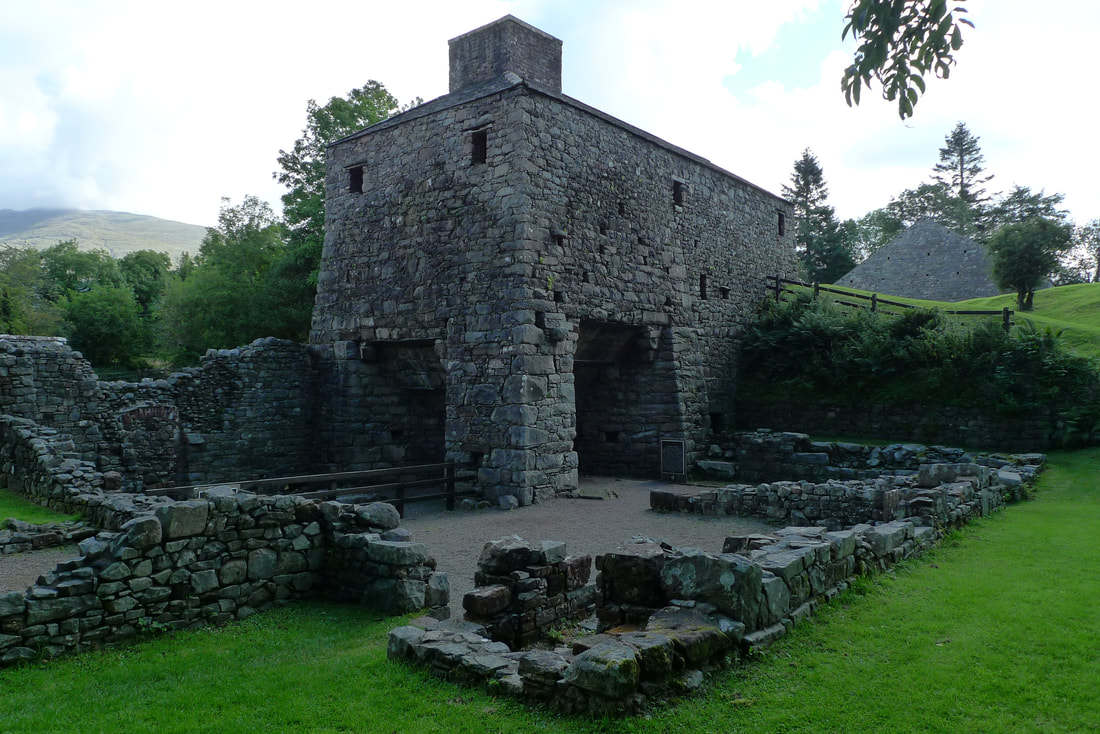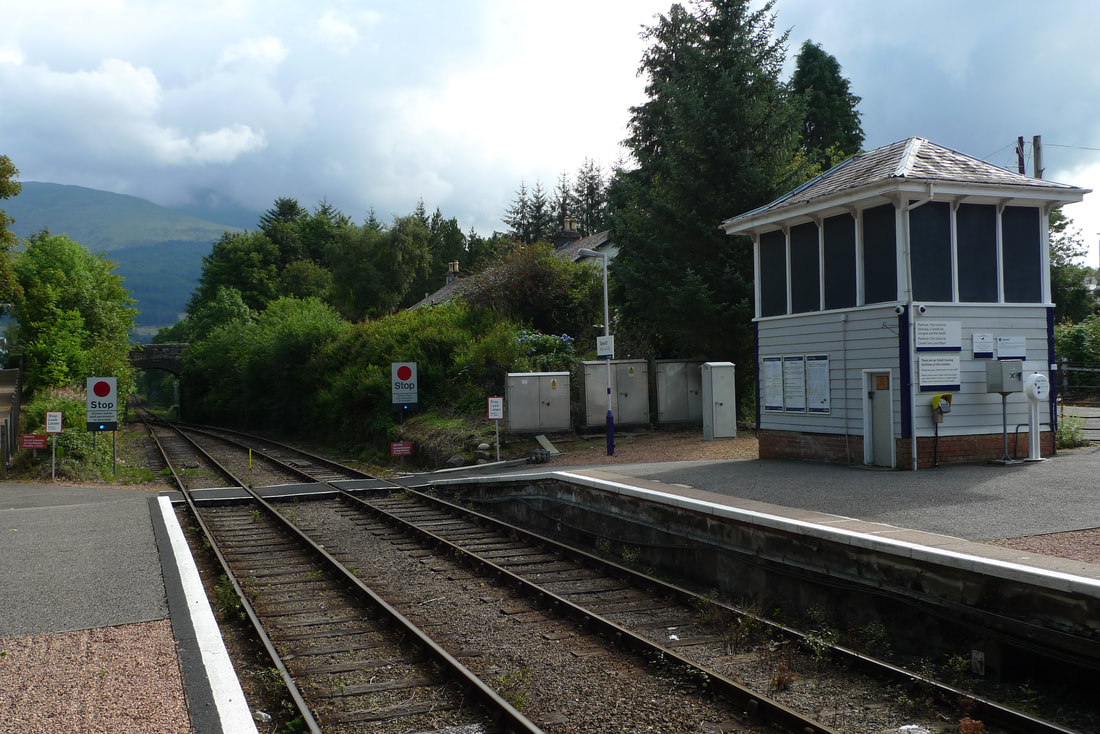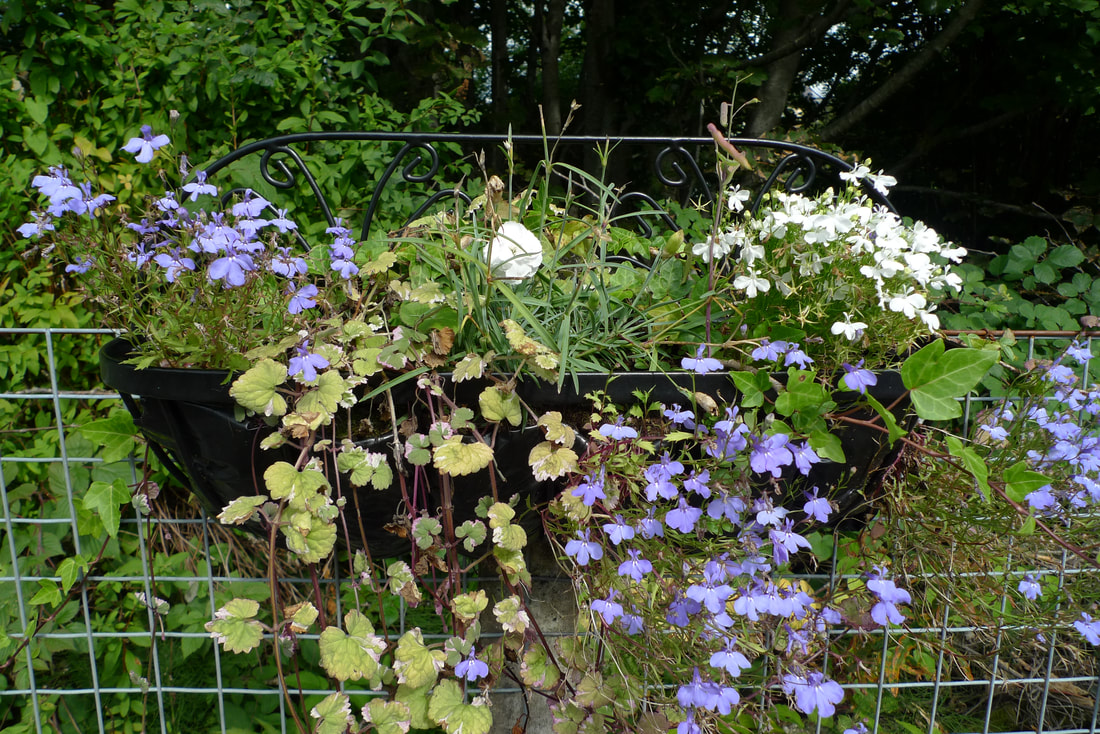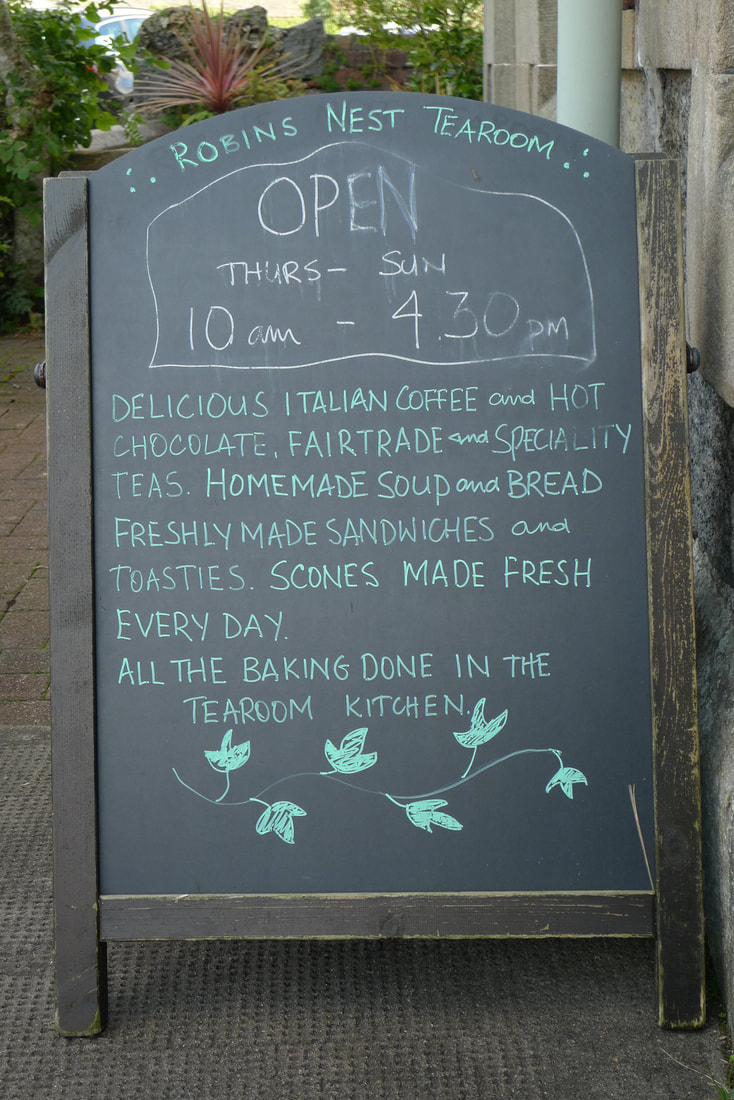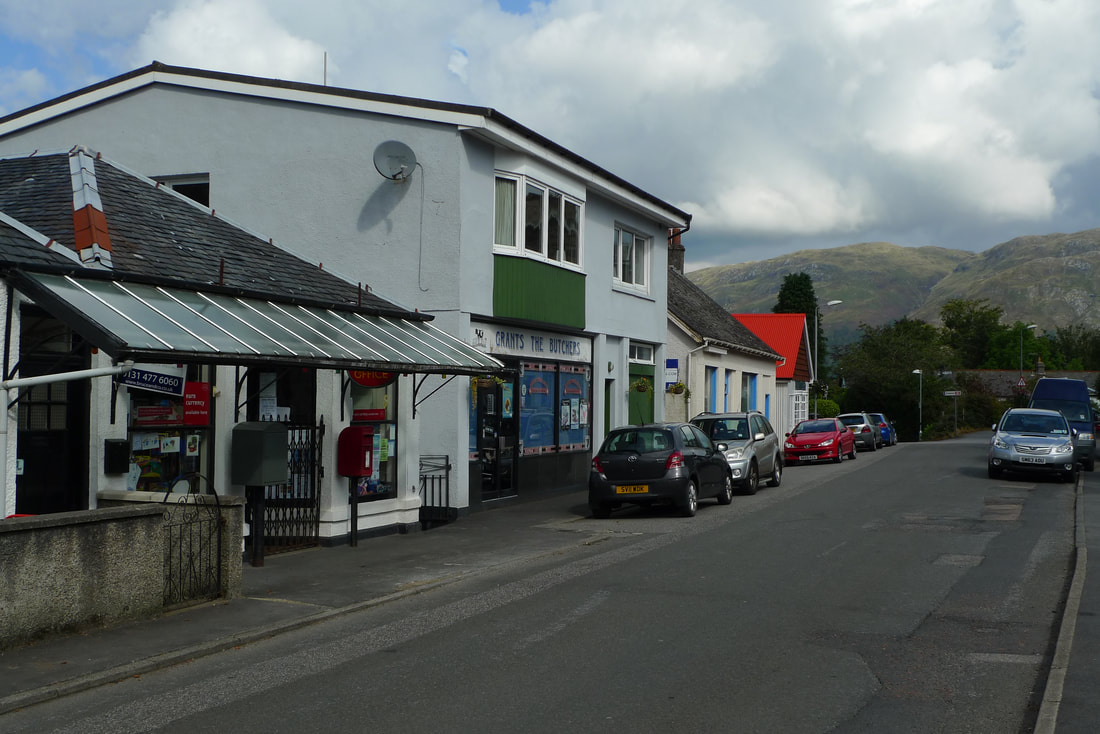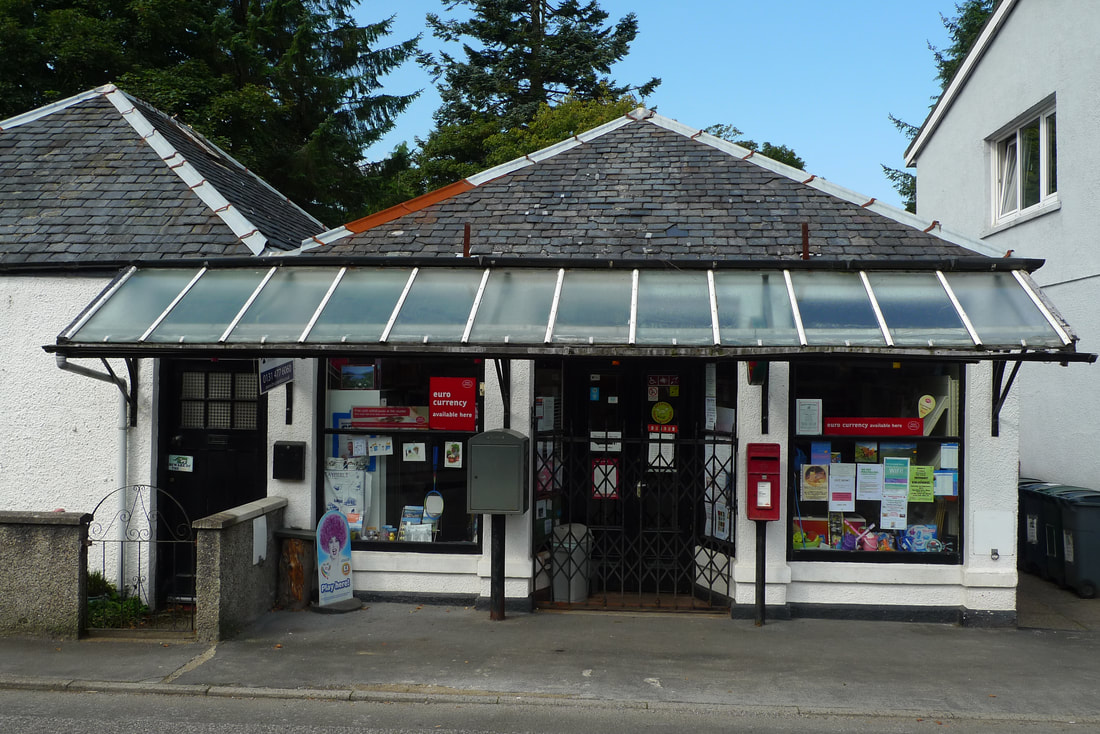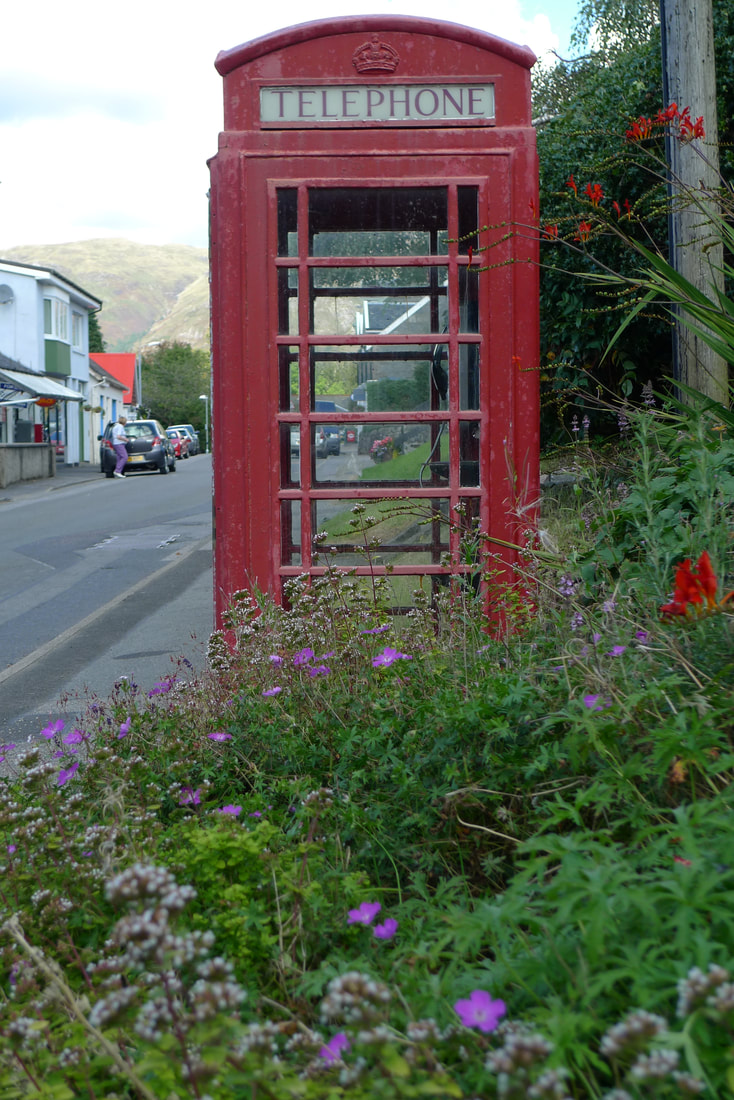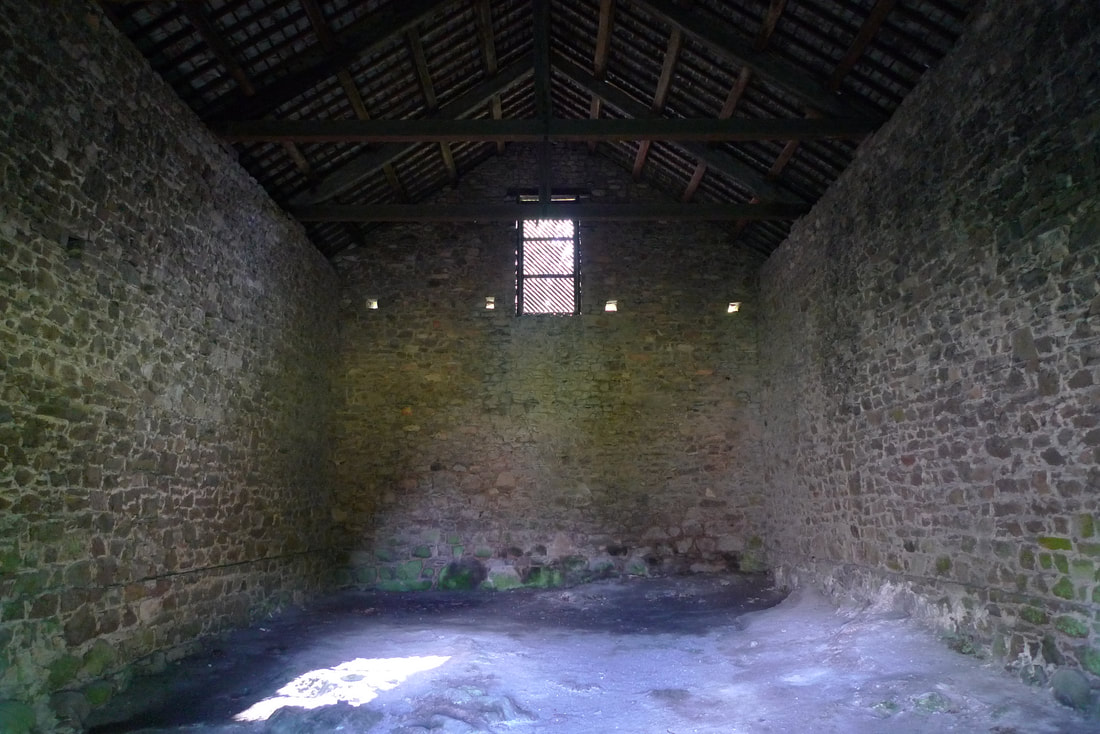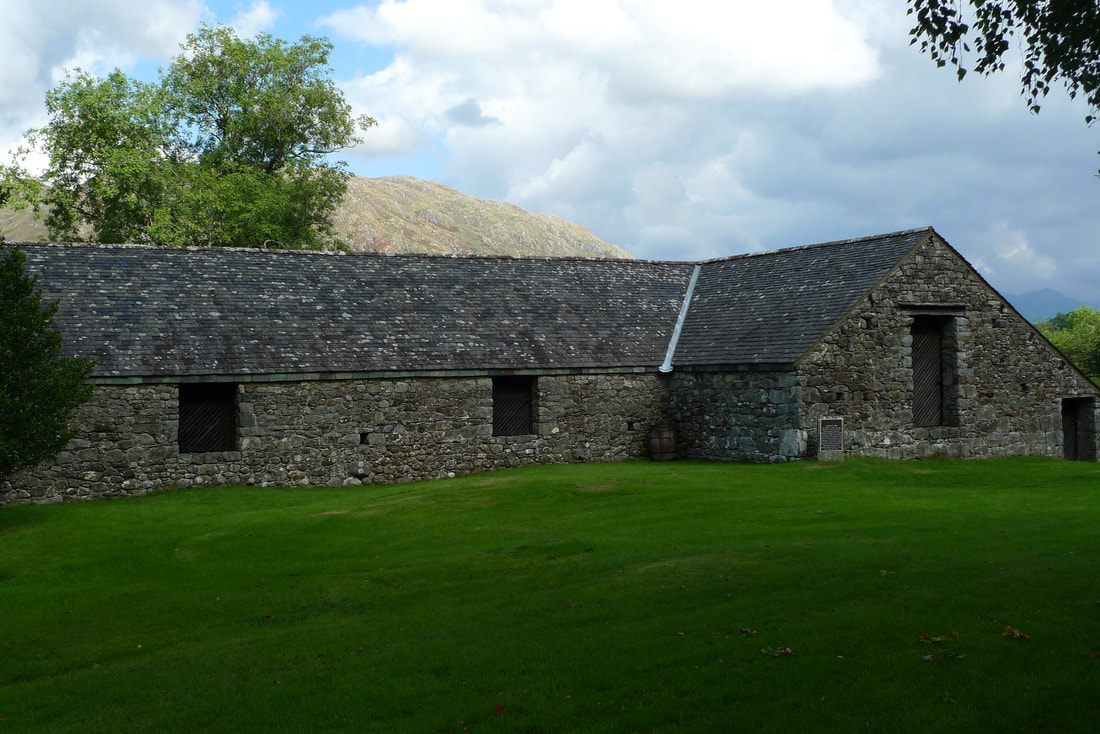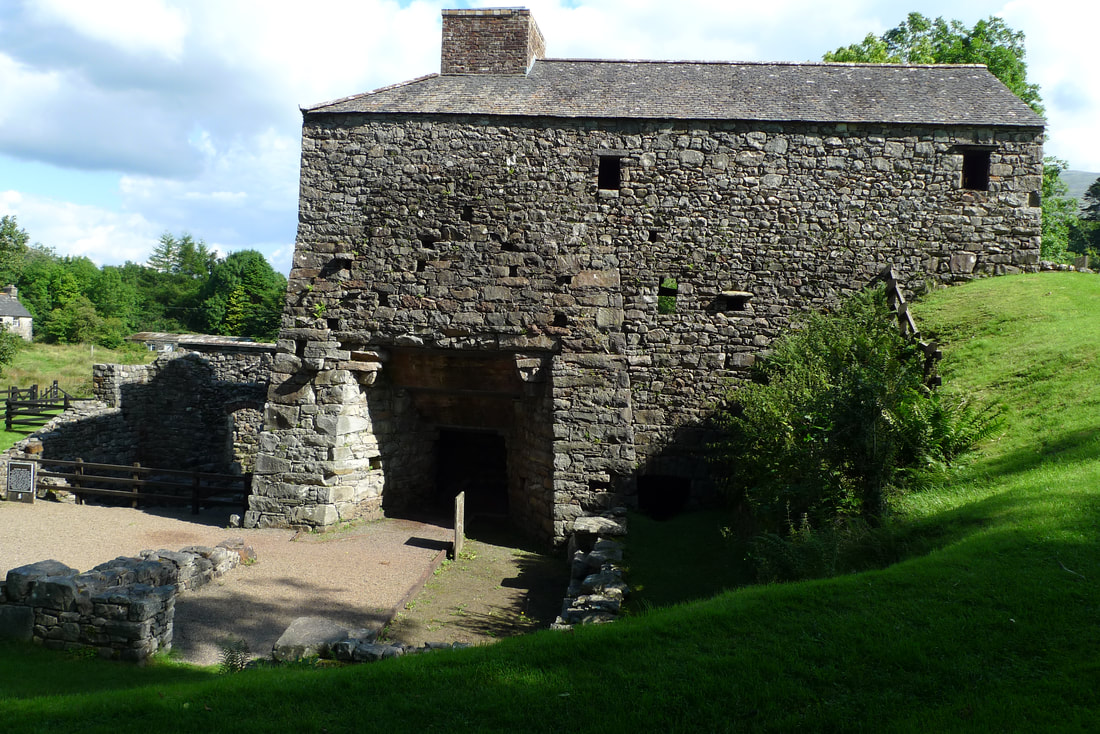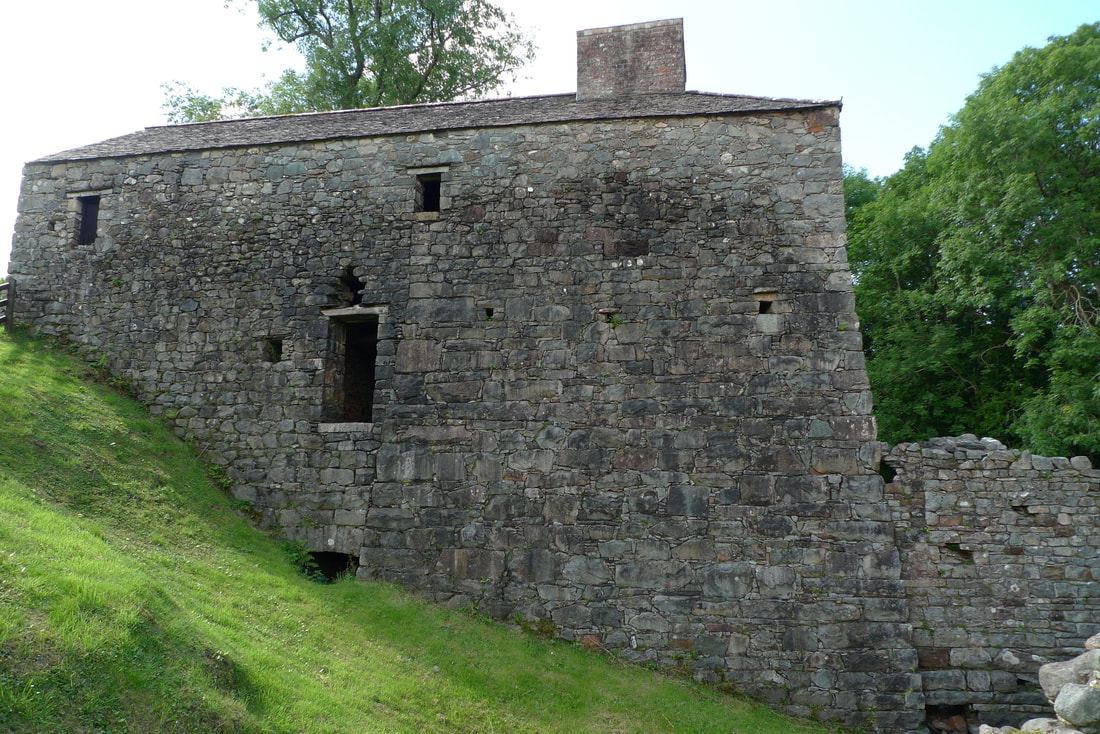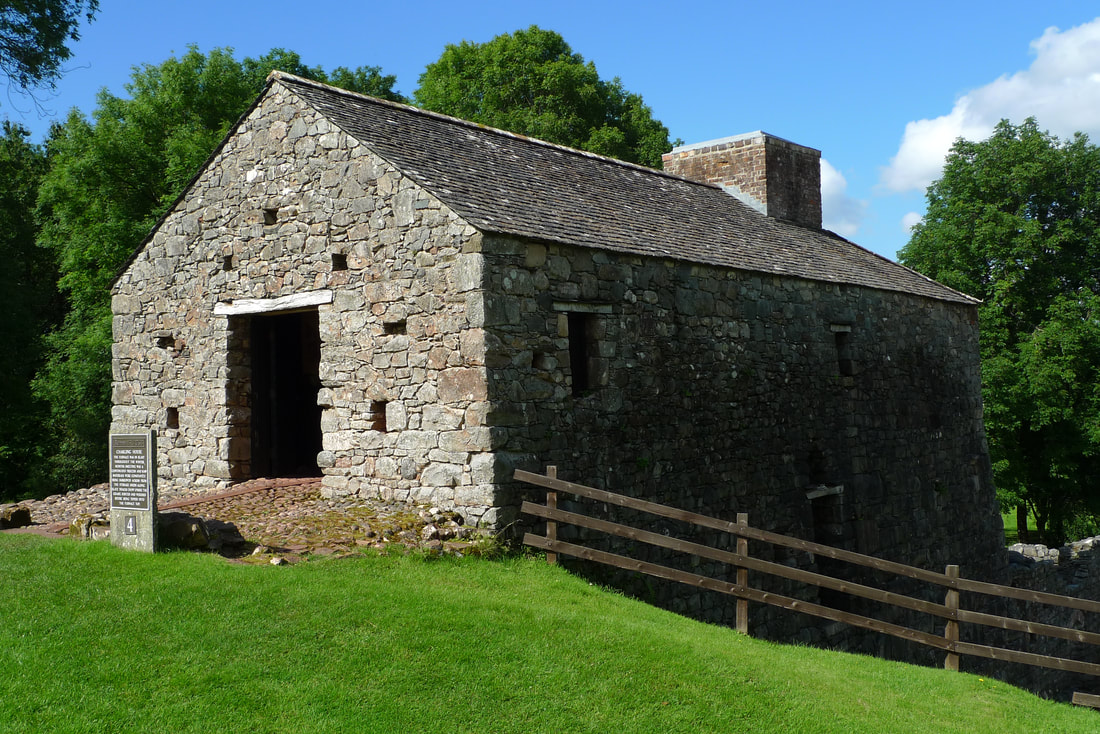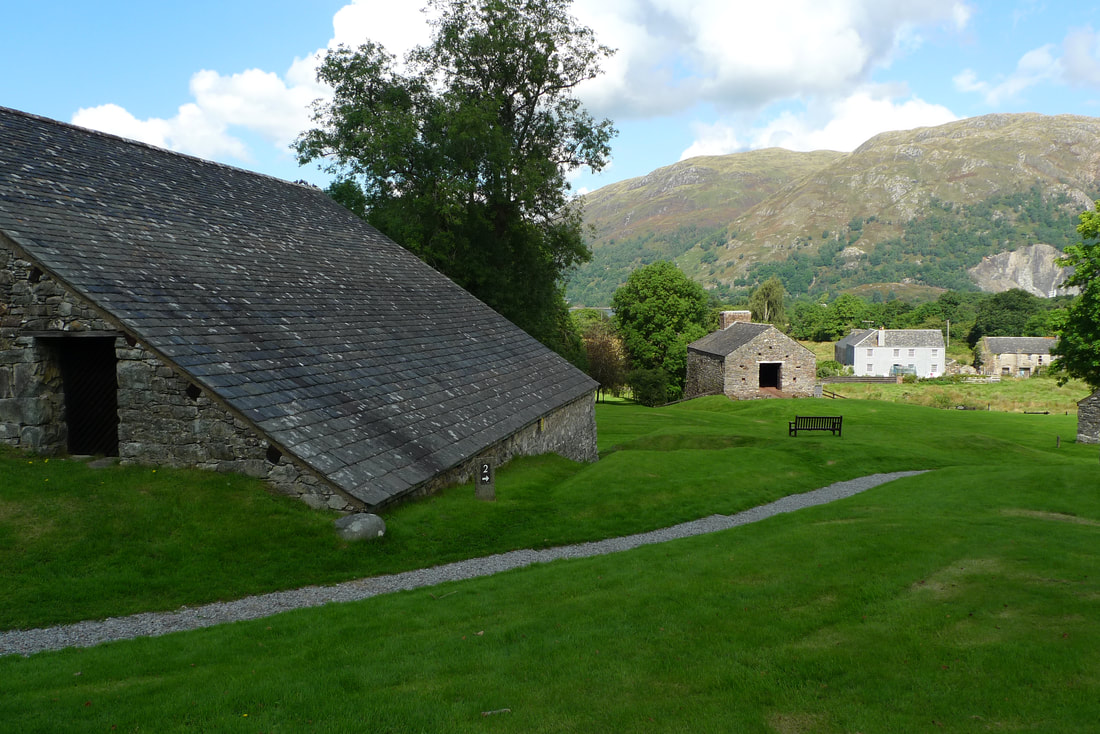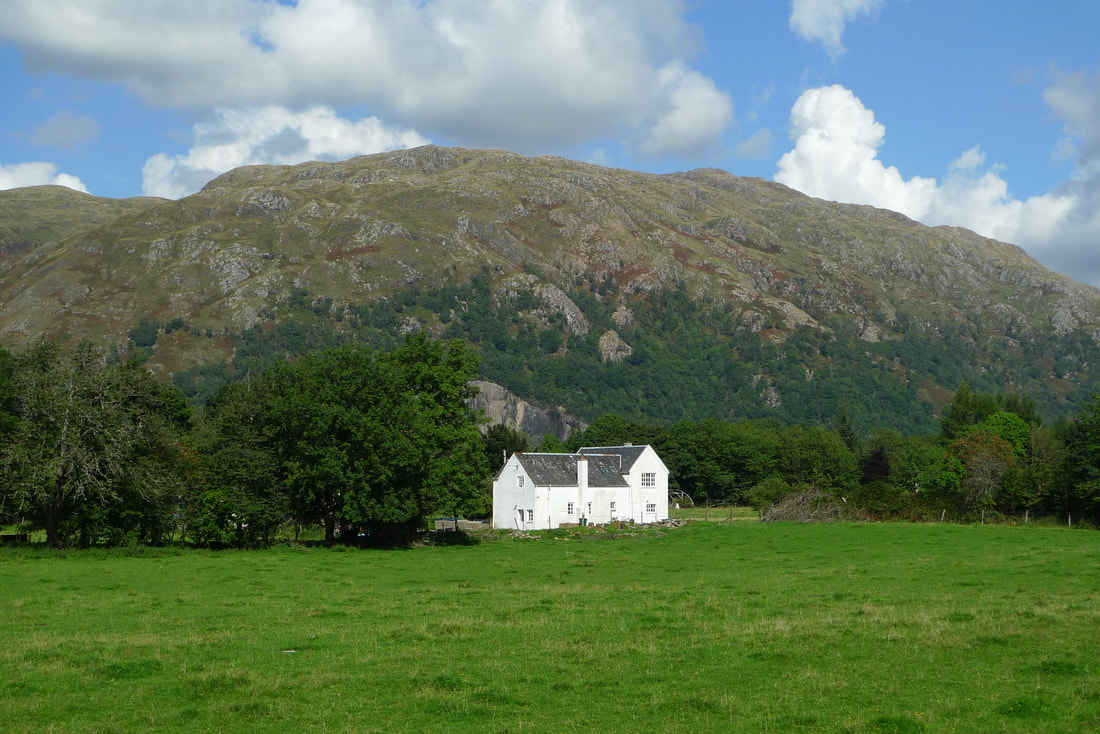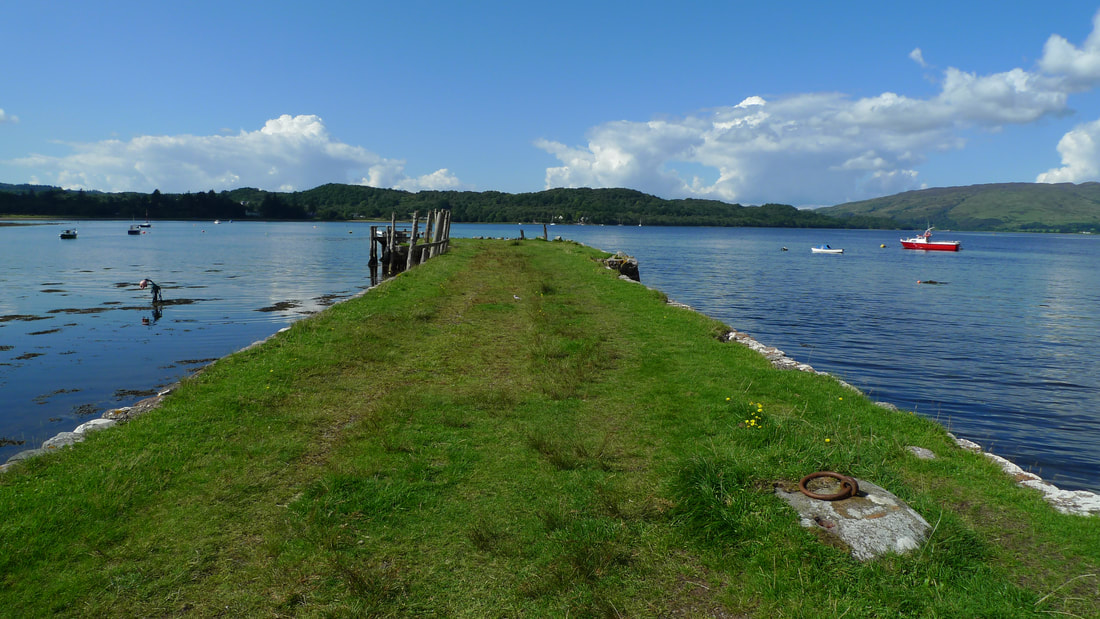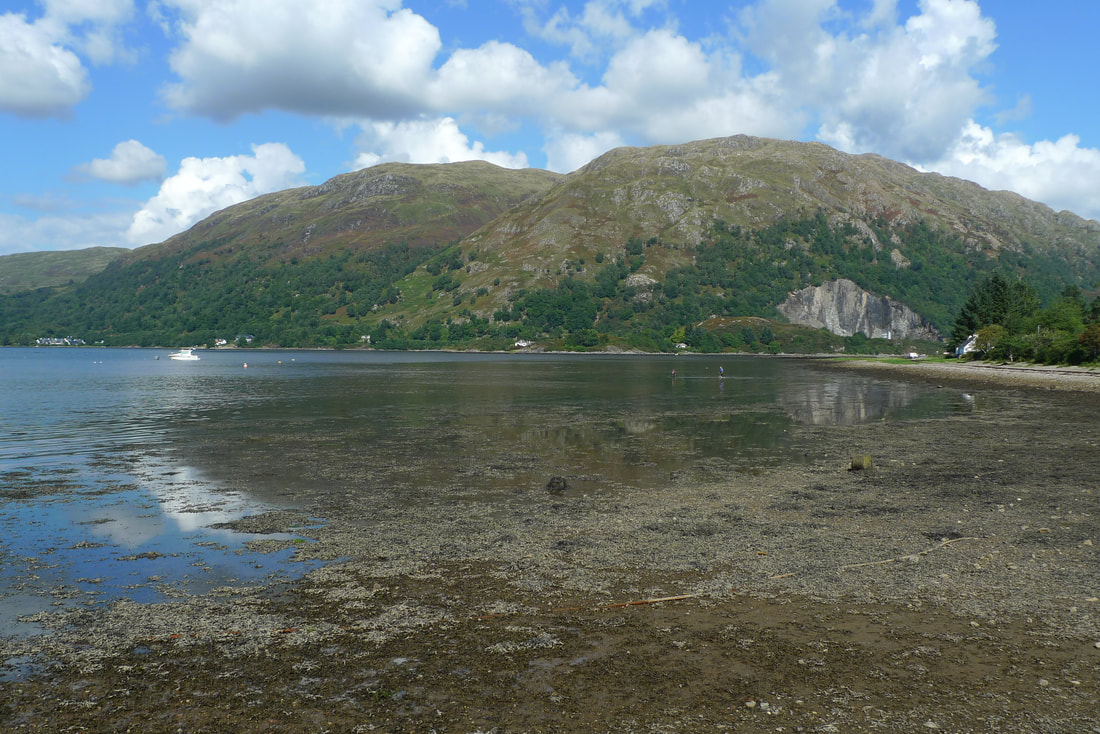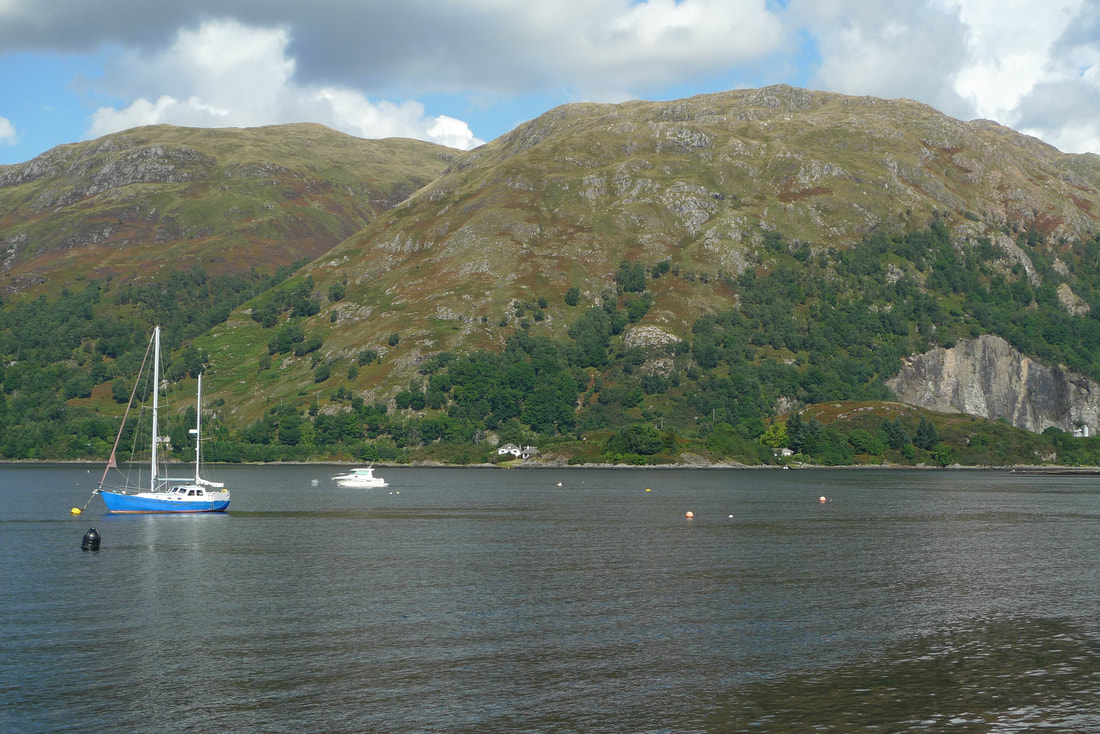|
The busy A83 is the easiest way to reach Inveraray, but it isn't so pleasant for cycling. There's a quieter road that will take you there- the A819. Along the way you'll get to visit one of Scotland's prettiest train stations and the most photographed castle in the country.
Highlights of this route
West Highland Line to Dalmally
Book a free bike space and take one of Scotland's most scenic trains to Dalmally. It's around 45 minutes from Oban and about 2 hours and 20 minutes from Glasgow. Some of these trains have a special bicycle carriage, so there's plenty of space.
Dalmally station
I loved this station ever since my first visit. Back then it was in a sorry state, boarded up and forgotten about. This time I found that something wonderful had happened. Graham took on the challenge of restoring the building and he has done an amazing job. You can now book a room and stay the night at the station. One of the rooms is called The Posting Room- it had once been used to store mail arriving by train.
Graham offered me a cup of tea and showed me around. Inside, there are many features to discover, such as original fireplaces and cornicing. "I managed to save all the ceiling roses," Graham proudly told me.
He recalled how dilapidated it had been when he took ownership, "you should have seen the size of the mushrooms growing inside. There was a fireplace fulll of them."
There's a sculpture of a granite heron on the platform. It's made from Ben Cruchan granite, the mountain that can be seen from the station.
Kilchurn castle and Loch Awe
From Dalmally station a 1 mile cycle along the A85 takes you to the start of the A819. The nicest part of the A819 is this stretch alongside the shore of Loch Awe. There's a great view of Kilchurn Castle, one of the most photographed castles in Scotland.
The road then heads away from the loch. It's a steep climb, but you are rewarded with fine views.
Soon the road is hemmed in by forest and there's not much to see. It's a functional road, not a destination in itself. The benefit is to use it as a safer and more pleasant way to get to Inverary.
Neil Munro monument, author of Para Handy
After 1.5 miles there's a hiking path to a monument dedicated to one of Scotland's most famous writers. Neil Munro was born in Inveraray, in 1863. He wrote the Para Handy stories about a steamboat captain making deliveries from Glasgow to Loch Fyne.
It's a small hill, but it gives an outstanding view. For sure this was the best part about this road
The downhill to Inveraray
The glorious descent on this road is one of those experiences that goes to make cycling one of the best things in life.
I had experienced thunder, lightning and torrential rain for most of the ride. When it passed there was a torrent of water flowing down the side of the road, gushing waterfalls on the hillsides and rocks glistening in the sunshine. The sun came out and quickly dried my sodden clothes. I was jubilant as I cruised down that hill, feeling that I had survived the extreme weather and came out the other side a better person. My thoughts on using the A819 to reach Inveraray
This road is a much quieter and safer alternative to reaching Inveraray by bike. You will not be bothered by traffic. It might not be the most exciting road in Scotland, but the fast descent at the end is a joy and there are some great views towards Loch Awe.
The problem is that once you get to Inveraray you have no option but to use the A83 if you want to go further, or you must go back the way you came. However, if you stayed the night in Inveraray you could start cycling the A83 early in the morning when the road is quieter.
0 Comments
They were known as the islands that roofed the world because of their huge slate deposits. The Slate Islands have a rich industrial heritage in beautiful surroundings. They are 12 miles south of Oban and a joy to explore by bike.
Highlights
Getting there
The first step is to travel the 12 miles from Oban to the Clachan Bridge, the 'bridge over the Atlantic.'
The Clachan Bridge takes you over to the Isle of Seil, the northernmost Slate Island. The single-track road on the island feels like it's a guest here, almost overwhelmed by the trees, ferns and grasses that enclose it.
Kilbrandon Church
Three miles from the Clachan Bridge you'll find this gorgeous church. The interior is worth seeing with the stunning stained glass windows beautifully framed by the bare stone walls.
From the church there's a view to Ballachuan Loch, surrounded by the lush greenery that carpets the island. Beyond the loch and across the sound are the hills on the mainland. They look imposing and rocky.
Ferry to Luing
Just under a mile from the church is Cuan where you can catch the ferry to the Isle of Luing.
The ferry runs every 30 minutes and the crossing takes about 5 minutes.
Even a short ferry trip has a restorative effect. There's something about the motion, the sound of water against the hull and the sea spray that makes you go into an almost meditative state.
How I felt coming here was perfectly summed up on one of the island's tourist information panels: "Isle of Luing- a place to think, a place to be."
Arriving in Luing the rain came on heavy. I sheltered in the ferry waiting room. It's kitted out with cushions, a stack of magazines and a noticeboard with community information.
Views and perfect roads
There's a steep climb to leave the ferry dock, but the views are spectacular at the top. Even with clouds and mist the composition of water, islands and hills would sell a million postcards.
I knew immediately that I wanted to spend longer here. Reader, you should come here and enjoy this road. There's hardly any traffic and the green colours and landscape textures will make you smile all the way.
At one point the road was blocked by a cow that was not for moving. She stood her ground as I carefully went around.
Cullipool
Around 2.5 miles from the ferry is Culipool. It's the largest settlement on the island, but that doesn't mean it's a busy place. Quite the opposite. The streets of white cottages were quiet and I didn't see another person.
It's very different to how this place must have been when the slate quarry was operating. It once employed 175 men and these cottages were their homes.
The quarry closed in 1965 and its remains are a fascinating, alien word. There are big hillsides in various states of destruction.
Men were once suspended by rope from the top of these hills. They drilled holes and packed them with gunpowder. The blasts left these hills looking like something from a sci-fi film set. The ground is littered with shattered slate of all different sizes and shapes.
The beach at Cullipool is covered in shards of slate. When the waves roll in they push and then pull the slate. The sound this makes is gentle, soothing. It's a memory that will stay with me long after I depart these islands.
I had to catch the last ferry back to the Isle of Seil so I couldn't spend any longer on Luing. If I am lucky to return one day I would visit:
The ferry was busier this time. The vehicle deck was so full that a van was on the ramp with its rear wheels dangling over the water. Ellenabeich, Isle of Seil
It's about 3.5 miles from the ferry to Ellenabeich, the largest village on the island of Seil.
It's another settlement with rows of white workers cottages. Some have small front gardens adorned with plants. There's a village square with a crane rescued from the derelict pier as a a focal point. There's also a shop and a classic red phone box that looks great set against the white washed buildings. The street lamps, have a vintage look, a bit like gas lamps.
The Oyster Bar is the only place for a meal. There's quality seafood, burgers, steak and more. I had chowder. This was a super tasty creamy potato broth packed with smoked salmon, smoked haddock, prawns and scallops.
A night out
A normal Tuesday night at home would probably be spent watching the TV. In Ellenabeich I went for a bike ride.
I took the hill out of the village. The view up here shows off the beauty of this place. The craggy hill, Dun Mor, dominates the scene. You can see how close Easdale Island is to Ellenabeich. This island is famous for hosting the World Stone Skimming Championships each year. Competitors use Easdale slate skimming stones in one of the disused quarries. The island is car-free as the ferry takes only passengers. I didn't have time to visit Easdale this time around.
I explored the rocky shoreline and the slate covered beaches. Apart from the gently rolling waves the only other sounds were the cry of seabirds and the occasional bleating sheep.
Garragh Mhor bed and breakfast
I stayed in Garragh Mhor on Ellenabeich. The hosts were super welcoming. They told me about the incredible wildlife on the island. Otters passed their front door a few days ago. There was a time when a guest forgot to close the door and lots of toads made their way inside! A swarm of hornets once gathered above the B&B- it was like a black cloud sitting just above the roof.
I love that conversations with B&B owners can give you a real flavour of what it's like to live in the places you visit. Oh, and the smoked salmon with scrambled eggs for breakfast was superb. My thoughts on the Slate Islands
The Slate Islands are not as well-known as other islands in Scotland, like Skye or Harris. That can make them quieter, but the experience is just as good as those other places.
I thought the scenery was spectacular. I loved the novelty of crossing the 'bridge over the Atlantic' to get to the islands and then the short ferry ride across to Luing. The quiet roads make for great cycling and the industrial heritage of the islands is a fascinating part of Scotland's history. Explore Argyll and Bute
The Slate Islands are in Argyll and Bute. You can read more blogs about this part of Scotland.
Colonsay is an island on Scotland's west coast, 30 miles from the mainland. It is famed for its beaches, wildlife and tranquility. It even has a brewery and a golf course! It is 10 miles long and 2 miles wide with just over 100 people living there. Read on to discover 15 things you can see and do on the Island of Colonsay. 1. CyclingAn obvious choice for my blog! However, cycling really is the best way to explore the island- it is only 10 miles long and there are very few cars to worry about on the single-track roads. It will also save you the cost of taking your car across on the ferry. It is free to take bikes on the ferry and if you don't have your own bike you can hire one on the island. 2. Kiloran BeachOne of Scotland's most beautiful beaches, Kiloran, is a must-see on the island. It is an expanse of golden sand with dunes and caves to explore. There is a good chance that you will come across the grazing cattle that often stroll onto the sand. 3. Sip a Beer from Colonsay BreweryColonsay is the smallest island in the world with its own brewery. With a fact like that you just have to try one (or a few) of their beers! I love the colourful bottle labels and the 80 shilling (pictured) is my favourite. It is a dark ale with a taste of peat, which gives it a particularly 'Scottish' taste that makes you think of the islands and strong whiskies. You can buy the beer from the brewery shop which is near the ferry terminal. It is also sold in the hotel and onboard the ferry. If gin is more your thing there is also a distillery on the island called Wild Thyme Spirits. 4. Go Book ShoppingNext door to the Colonsay Brewery is the bookshop. There is a great selection of works about island history and culture, and if you are just looking for something for a rainy day there is a wide choice of fiction and non-fiction. During my visit I heard a customer stating "chemistry is more my thing" in response to the bookseller letting them know of an upcoming sale of philosphy books. 5. Look for WildlifeSeals, Golden Eagles and Otters can be see on the Island of Colonsay. Perhaps a lot easier to spot are the beautiful wildflowers. Take a close look at the ground as you explore the island and you will find plenty of pretty delights. The abundance of flowers sustains the production of Colonsay Wildflower Honey which you can buy from the Pantry, a cafe near the ferry terminal. 6. Oysters at The Colonsay HotelSampling local sea food is a must when visiting a Scottish Island. Pop into The Colonsay Hotel, the only hotel on the island, to enjoy Colonsay salmon and oysters. It is a cosy place with open fires and wooden floorboards so settle in and enjoy a beer from the Colonsay Brewery. 7. Touch Ancient Standing StonesNear Lower Kilchattan look out for a gate with a painted notice, 'foot path to standing stones'. Walk through ankle height grass to reach a pair of stones that are the last remains of a stone circle. The stones are known as Fingal's Limpet Hammers' as they have the appearance of the tool that was used to detach limpets from rocks. Feel their surface, crusty with moss, and imagine the others who have put their hands here through the centuries. 8. Search for Highland CattleTake the very steep road that travels west of Kiloran beach. It takes a bit of effort on a bicycle! When the road eventually ends there is a gate with a sign stating that this is the footpath to a beach. Highland Cattle can sometimes be found grazing on this beach, so it is a great spot to get a closer look at these engimatic creatures. This is a pebble beach and it takes a bit of effort to reach it so you will probably get it (and the coos!) all to yourself. 9. Colonsay Heritage TrustHoused in a former Baptist Church this museum tells the history of the island through objects, photographs and information panels. 10. Go To ChurchColonsay parish church, built in 1802, is gleaming white with fine Georgian architectural features, particularly the large round windows that let light flood in. The church is always open so come inside to have a look and enjoy some quiet contemplation. Incredibly it was originally designed to seat 400, somewhat optimistic for this tiny island. During my visit the pews were laid with second hand books that you could buy by popping a £1 coin into an honesty box. 11. Colonsay House and GardensThese gardens are famous for their rhododendrons and the mild climate means that subtropical plants also thrive here- there are acacia and eucaplyptus. There is a cafe that serves afternoon tea, lunches and snacks. The gardens were not open during my visit, so if you want to see them make sure you plan to come on a Wednesday, Friday or Saturday during the summer months. Check the Colonsay Holidays website for current opening hours. 12. Take in Another Island- Walk Over to OronsayAt low tide you can walk over to the island of Oronsay. Tide times can be checked with the Post Office on Colonsay. There is a 14th century Augustine priory to explore and you might spot the Grey Seal colonoy on a coastal walk. 14. Read a Book, Relax, Do NothingOne of the main joys of spending time on of Scotland's islands is that it offers a complete escape from the stresses of modern life. You should take advantage of this and find a quiet spot to sit and do nothing or perhaps read the book you purchased from Colonsay Bookshop. Even watching the ferry arrive and depart is a good way to slow down and relax- watching the vessel glide across a calm water can be pretty mesmerising. 15. Cake at The PantryThe cake cabinet in The Colonsay Pantry is where you will find the island's best homebaking. This friendly cafe is just a couple of hundred yards from the ferry pier and offers outdoor and indoor seating. During my visit I had hearty lentil and tomato soup followed by a luscious slice of caramel shortcake and superb barista-made coffee. The Pantry also provides evening meals on selected nights- check their website for the current offerning. 15. Go to an EventFor a small island it is surprising just how many events take place on Colonsay. There is a book festival, a music festival and a food and drink festival. For sporting enthusiasts there is the Colonsay International Golf Open and regular football matches. There are also regular ceilidhs if dancing is more your thing. How to Get to ColonsayThe Caledonian MacBrayne ferry takes around 2 hours and 20 minutes to travel from Oban to Colonsay. The ferry service is more frequent in summer. Most of the departures from Oban are late afternoon and the departures from Colonsay are in the evening. This means an overnight stay is necessary on the island, but that is a good thing as this is a beautiful place. However, if you can really only afford a day there is also ferry service from the Island of Islay that gives you about 6 hours on Colonsay. Check the ferry website for current timetables.
Got Some Time to Spare in Oban? If you are waiting for your ferry to Colonsay and looking for something to do why not visit Dunstaffnage Castle or treat yourself at Oban Chocolate Company? Explore more of Argyll and Bute Colonsay is located in the Argyll and Bute region of Scotland. Head to my Argyll and Bute page for ideas of more places to visit.
Fancy sharing your bike ride with Highland cattle? The single-track road through Glen Lonan is one of those places where there is a good chance of these iconic beasts straying onto the tarmac. The 12 mile road links Oban with Taynuilt and takes you through a lush glen of woods, fields and isolated farmhouses. "The Road of Kings" is famed as the ancient funeral route of Scotland's Kings to their final resting place on the island of Iona. This is a great road to ride with hardly any traffic and mountains on the horizon.
How to get here The Glen Lonan road is a great way to arrive into Oban if you are taking the train- Taynuilt is two stops before Oban, so hop off the train early and get in a bit of extra cycling. Taynuilt is on the Glasgow to Oban line. It's two stops before Oban, about 2 hours 40 minutes from Glasgow. Taynuilt station is rather pretty with flower boxes, a backdrop of mountains and a vintage signal box.
There is a great tearoom in Taynuilt and the fascinating Bonawe Iron Furnace is just a few minutes from the village. You can find out more about this in my Tanuilt and Bonawe blog.
Leave the station and turn right onto Taynuilt's main street with the small selection of shops. This will take you to the A85 which you cross over to a minor road, marked with a sign for Glen Lonan.
For the first few minutes this road is dominated by a cluster of cottages and houses. These soon make way for woods, streams, ferns and after a little bit of a climb there are meadows and fields for sheep and cattle.
The road twists and turns, rises and falls, giving plenty of variety to the ride. The views of the pointy mountains are particularly magnificent.
My video below gives you a great impression of how much fun this road is to ride, particularly the fast downhill sections. Also notice that the road is wonderfully free of vehicle traffic.
After about 3 miles you will reach Angus' Garden. The garden was created in the memory of Angus Macdonald, a journalist who was killed in Cyprus in 1956. Rhododendrons and azaleas dominate and there are numerous paths to go exploring and find the pond and loch. It is a tranquil place to spend some time and enjoy the views of Ben Cruachan.
After leaving the gardens there are sections of the road that travel through livestock fields. Here there are no fences and the sheep and cattle wander onto the tarmac. This is where you are likely to come across Highland Cattle.
5.5 miles from Angus's Garden you will arrive at the standing stone. It's about 4m tall and almost completely covered in crusty moss. It dates back to the Bronze Age and legend states that it marks the burial spot of Diarmid, an Irish hero who had a magical love spot that made women fall in love with him and single-handedly killed over 3000 soldiers in a battle.
The road that you are pedaling on was once the ‘Road of the Kings’, part of the route taken by the funeral processions of Scotland's kings when they were taken from Scone to their burial place on the Island of Iona.
From the standing stone it's just 4 more miles to reach Oban. It is one of those roads that you do not want to end because it is such a pleasure to cycle.
What struck me the most about Glen Lonan is that this road is so small and insignificant within this landscape- it feels like it is at risk of being swallowed up by all the trees, ferns and fields that it snakes through. This is a place to appreciate the immensity of Scotland's beauty.
Once you arrive in Oban and you feel like a bit more cycling and a visit to a castle then you could head 5 miles to Dunstaffnage Castle. My blog has all the details about how to get there and what the castle is like.
If you are in need of coffee and a sweet treat then head to the Oban Chocolate Company. It is one of the best chocolate shops in Scotland. Find out more on my blog.
Glen Lonan is in Argyll and Bute. For ideas of more to see and do in this region head to my Argyll and Bute page.
It's hard to believe that this peaceful loch and mountain setting was once a place where cannonballs were made to fight Napolean's armies. The Bonawe Iron Furnace operated from 1753 to 1876 in scenic Argyll. You can explore the remains of the site as well as spending a bit of time in Taynuilt, including the marvelous Robin's Nest tearoom.
How to Get to Taynuilt Take a train to Taynuilt on the Glasgow to Oban line. It's two stops before Oban, about 2 hours 40 minutes from Glasgow. Taynuilt station has a backdrop of mountains and a vintage signal box on the platform. Flower boxes fixed to the fence posts are an explosion of colour.
Once my train pulled away there was silence, not even birdsong. Only when I bent down to sort something on my bike did I hear a trickle from a stream. It took me by surprise after the constant noise of the train's diesel engine for over 2 hours to be suddenly deposited into this tranquility. It took my city-exposed senses a while to adjust to this.
After a long train journey I was in need of a cafe stop and Taynuilt has the wonderful Robin's Nest tearoom. The blackboard proudly states 'all the baking done in the tearoom kitchen.'
Robin's Nest Tearoom
Inside there are not that many tables and several had reserved signs on them. I heard a local say "the church hasn't come in yet", and I wondered if, being a Sunday, this is where the congregation came for post-worship coffee. The interior is traditional with pine furniture and local artwork on display. I overhead a conversation about a giant salmon that someone had caught in a nearby river. A poster on the wall stated that there was a £1950 jackpot in the Village Hall lotto. I ordered the butternut squash soup which tasted sweet and delicious. No wonder this place is so popular when the food is this good- I was told I might have to share my table and all the customers were being given a time when they needed to vacate their table by. My coffee cake, decorated with coffee beans, was also superb. A Walk Around Taynuilt Although a small village Taynuilt has a good selection of shops, including a Post Office, butcher, grocer and hairdresser. It doesn't take long to see everything, but it is very pleasant to stroll and there is a photogenic garden next to the red phone box.
How to Get to Bonawe Iron Furnace
It is just under one mile from Taynuilt station to Bonawe Iron Furnace, about 7 minutes on a bicycle or a 20 minute walk. The route is mainly on a very quiet B-road where you are unlikely to be troubled by vehicles.
Exploring Bonawe Iron Furnace
What surprised me about the site is how extensive it is. I had imagined just one building with the remnants of a furnace inside, but there are multiple buildings that are spread over an area that requires a decent amount of walking to cover. Two of the largest buildings were used to store charcoal. They are enormous inside, giving a good impression of the massive quantity of charcoal that was required to make iron.
The supply of charcoal is the reason why there is an iron furnace in this remote location. The operation had been set up by an English company based in Cumbria. The wood supplies had been exhausted in that region and the company knew that the forests of Argyll would provide what they needed. It made business sense to transport the raw ore by boat to Argyll where there was plenty of oak and birch trees to make it into iron.
Another resource that was required in large quantity at Bonawe was water. A waterwheel powered the bellows that were used in the smelting process. The water came from the River Awe.
The site is so tranquil and tidy, with neat grass lawns, and this makes it difficult to imagine what it was like when over 600 people once worked here. A small number of the workers were from Cumbria, but most were recruited locally and were Gaelic speakers. Most of the staff were employed seasonally, in the summer, to cut down trees and fire the wood to make charcoal.
The wages were poor and some of it paid in oatmeal, ale or whisky. The furnacemen worked 12-hour shifts, so it was no surprise that excessive drinking took place.
It was technological advances that made Bonawe redundant. Iron could be made cheaper elsewhere and the place shut down. in 1876. What you see today is a collection of stone, industrial buildings set within gorgeous scenery. It has been tamed by the beauty of the landscape, the noise and grim working conditions no more.
After my visit to Bonawe I made the short cycle to the old pier where the the iron ore was landed after its journey from Cumbria. The pier is overgrown with a thick layer of grass. I walked its length and could smell salt in the air. Loch Etive was calm with some kayakers enjoying a paddle. The surrounding hills were lush with trees. The sun was out and the whole place was ideal for sitting and relaxing.
Bonawe Iron Furnace is looked after by Historic Environment Scotland. Visit their website to find out the current entry fee and the opening hours.
Taynuilt and Bonawe are located in Argyll. For more ideas of places to visit in Argyll head to my Argyll and Bute page. |
Categories
All
Archives
July 2024
|

